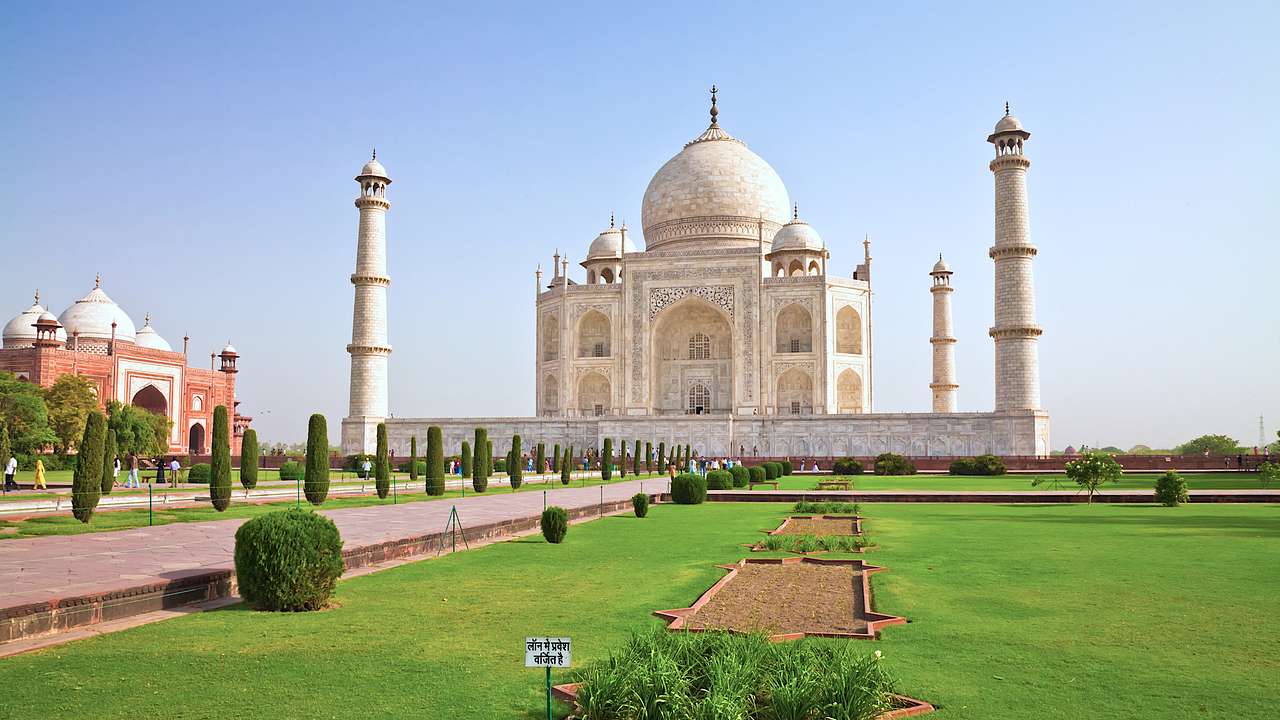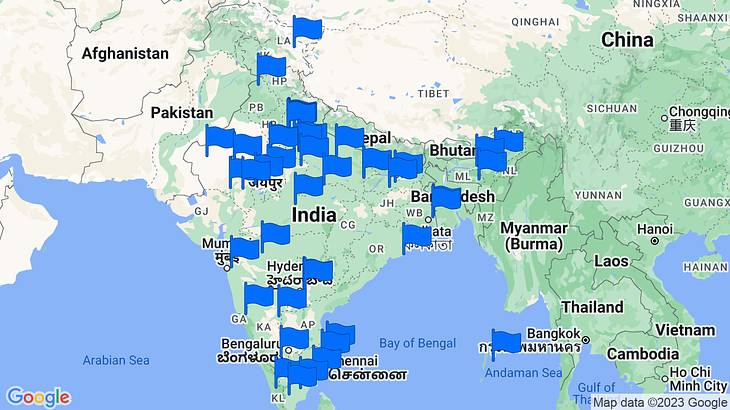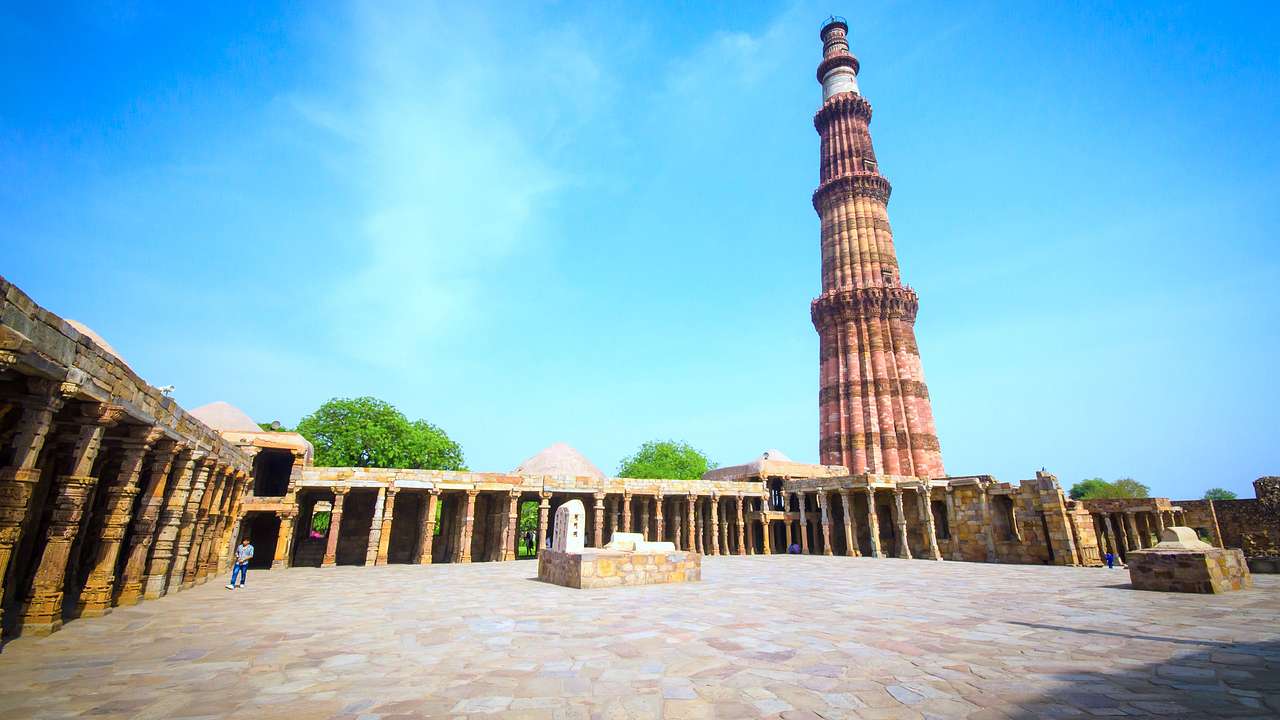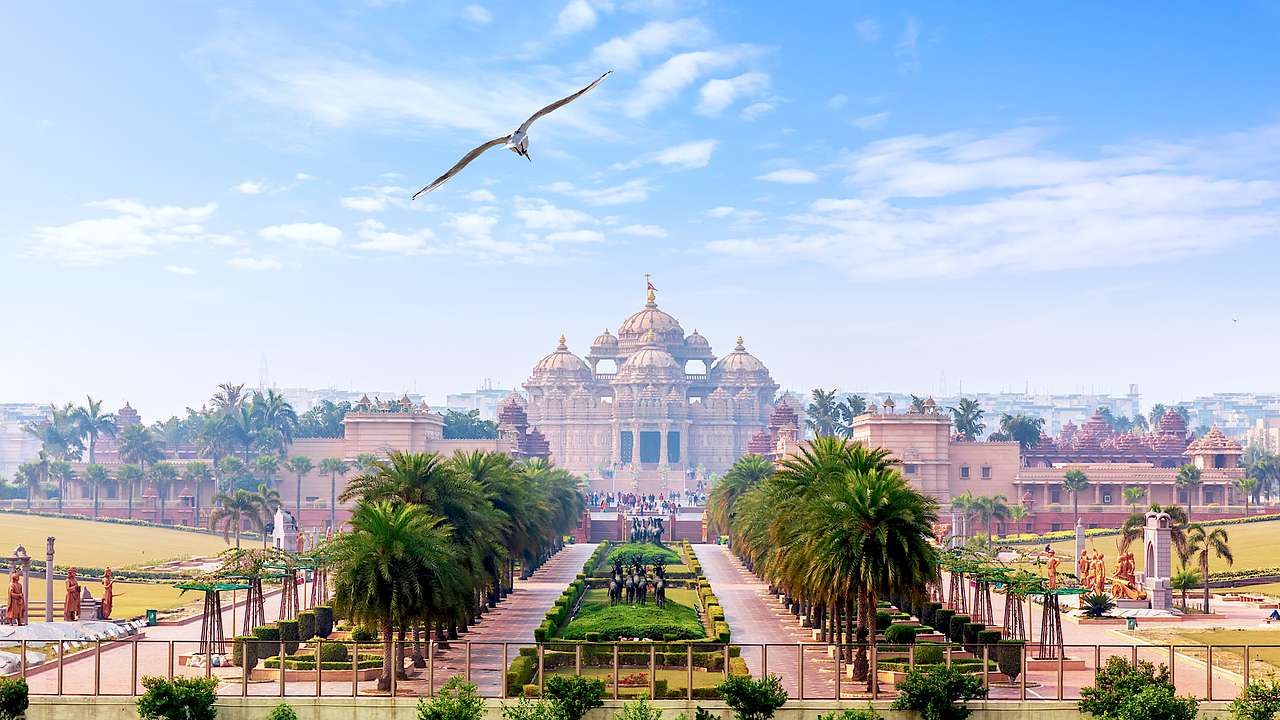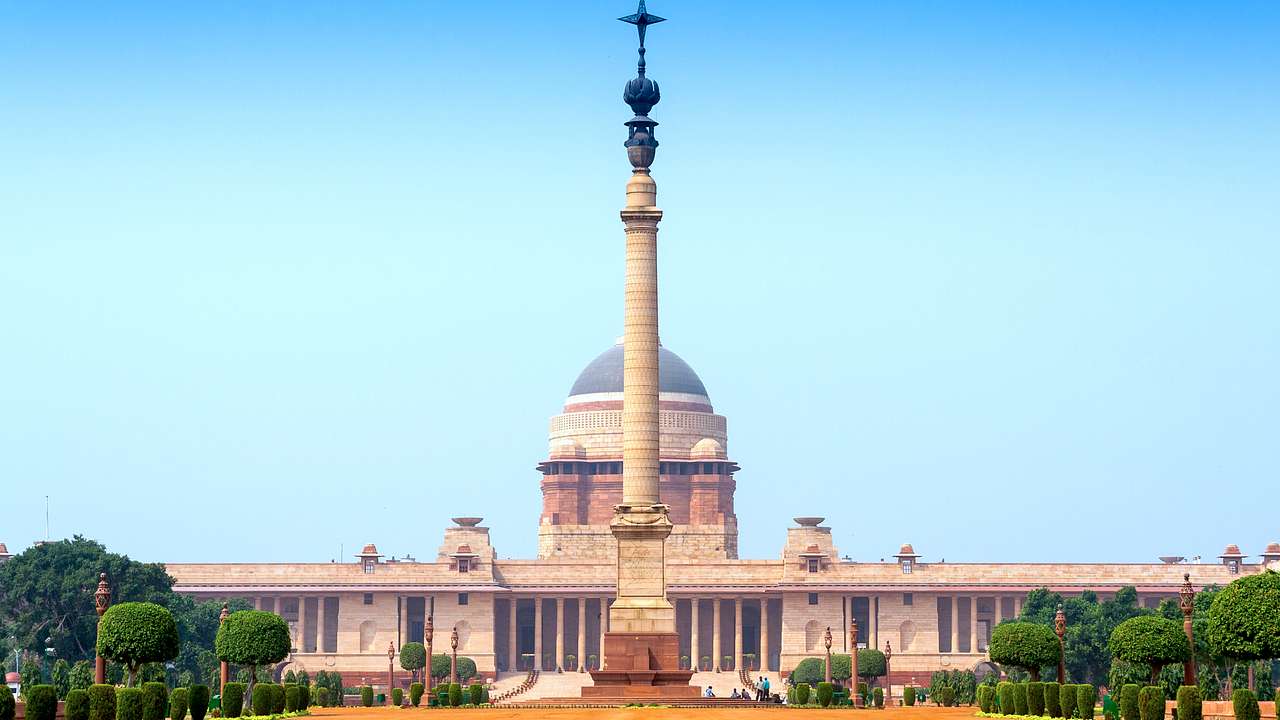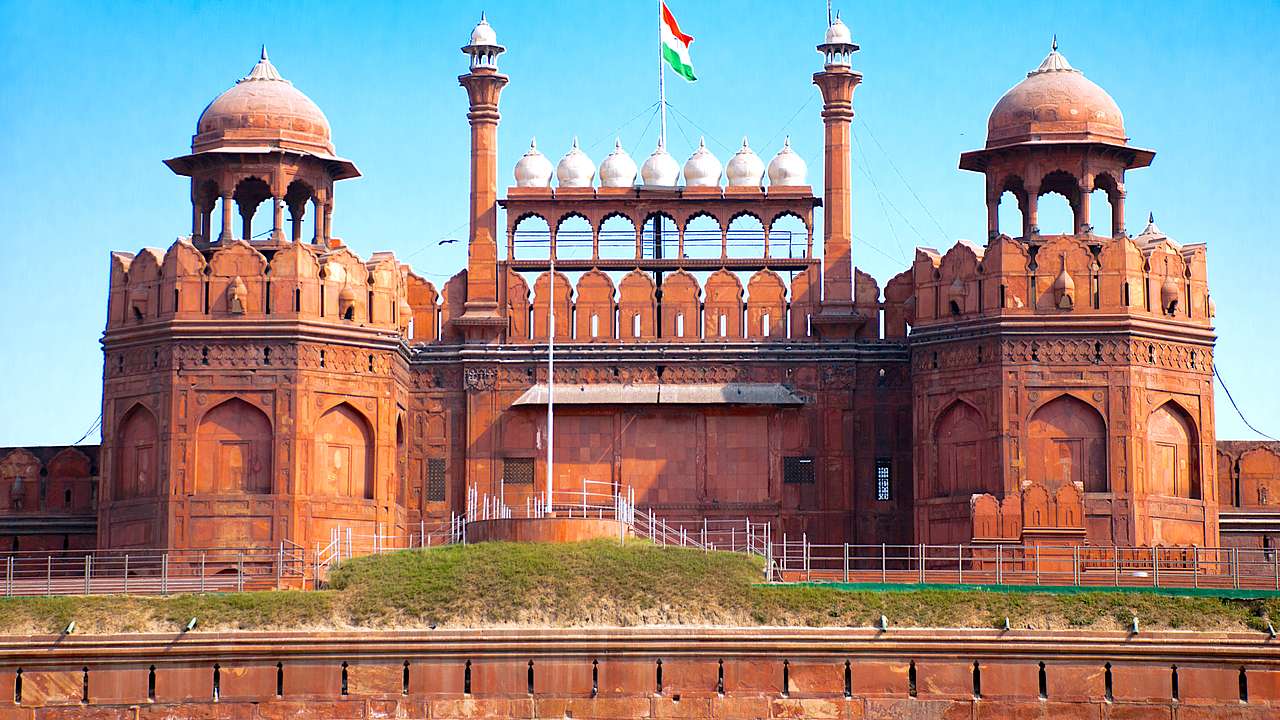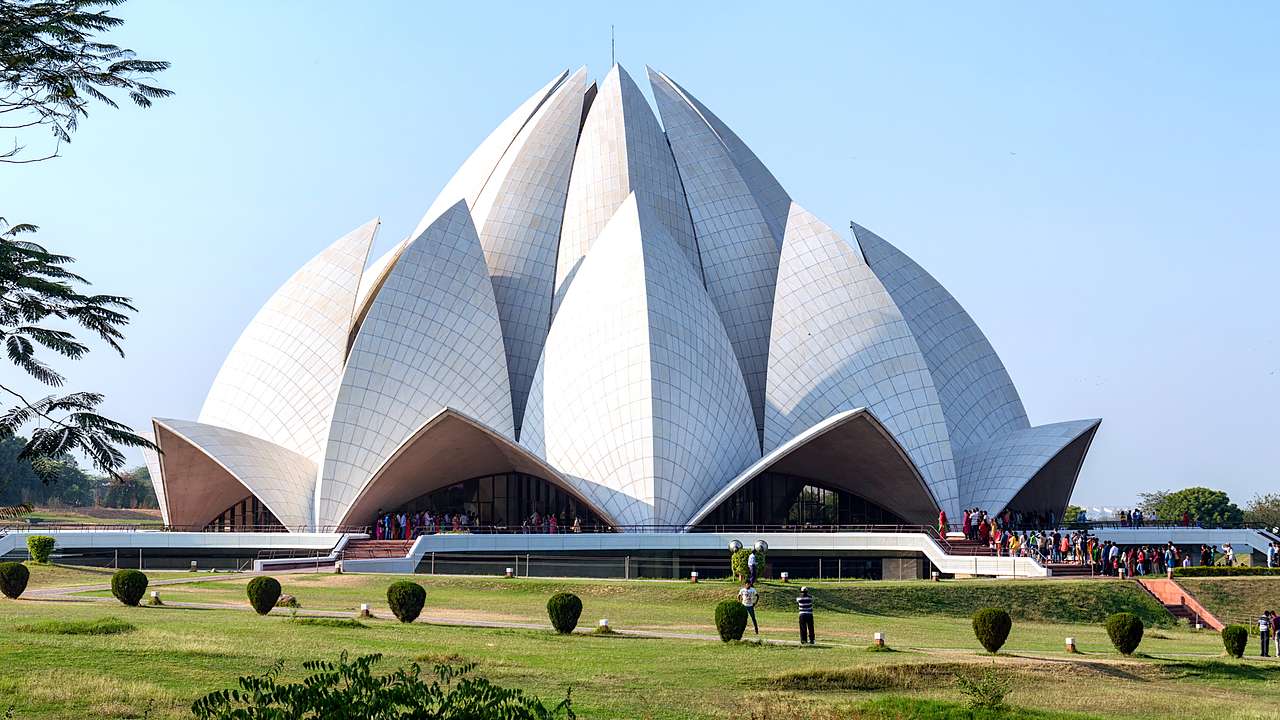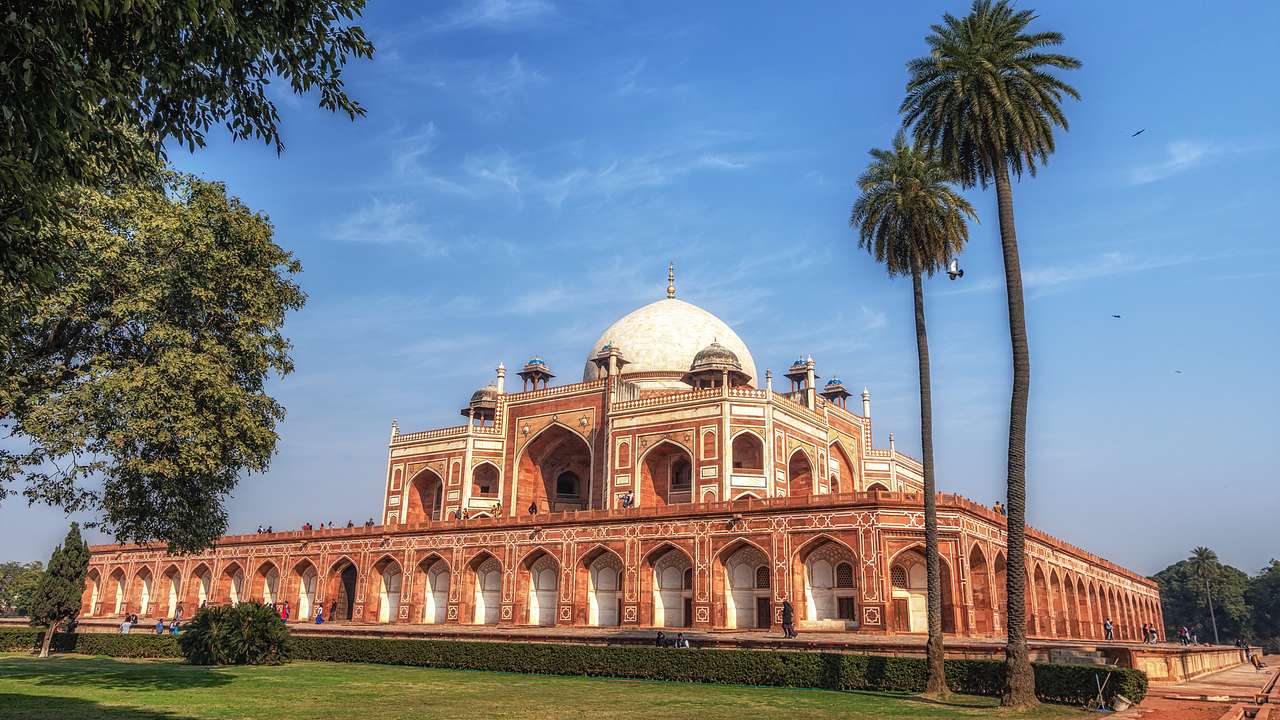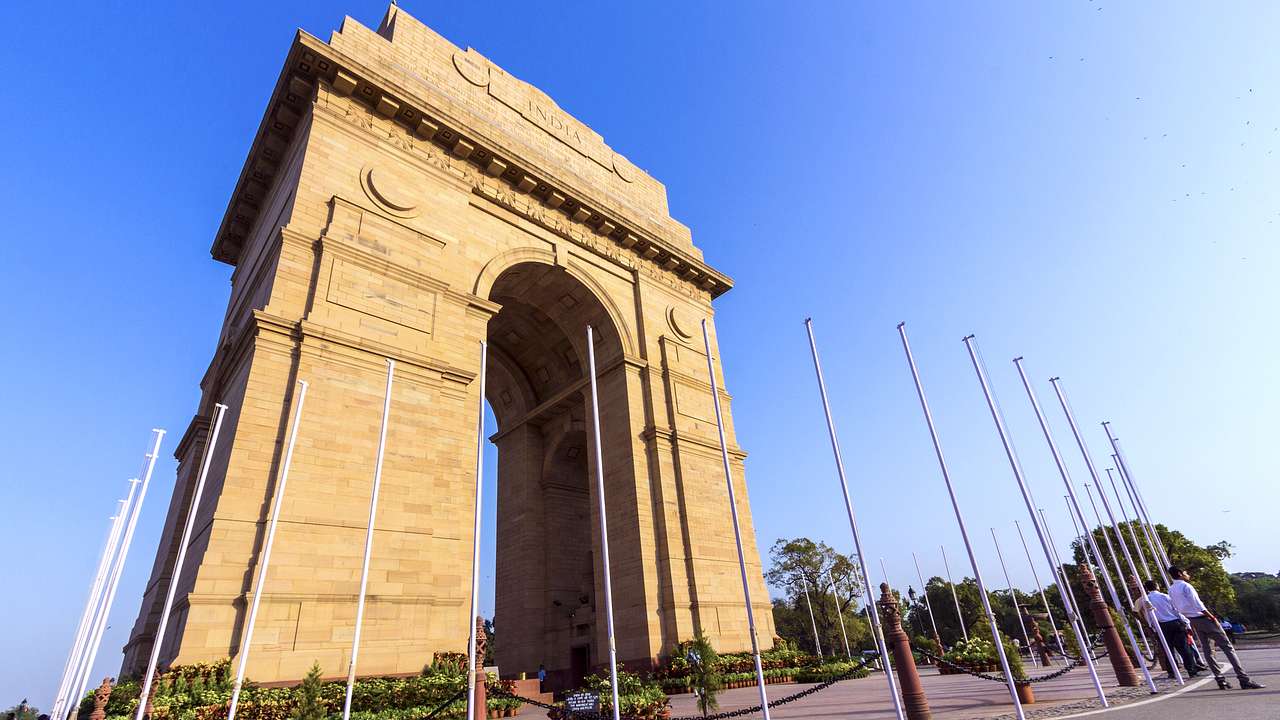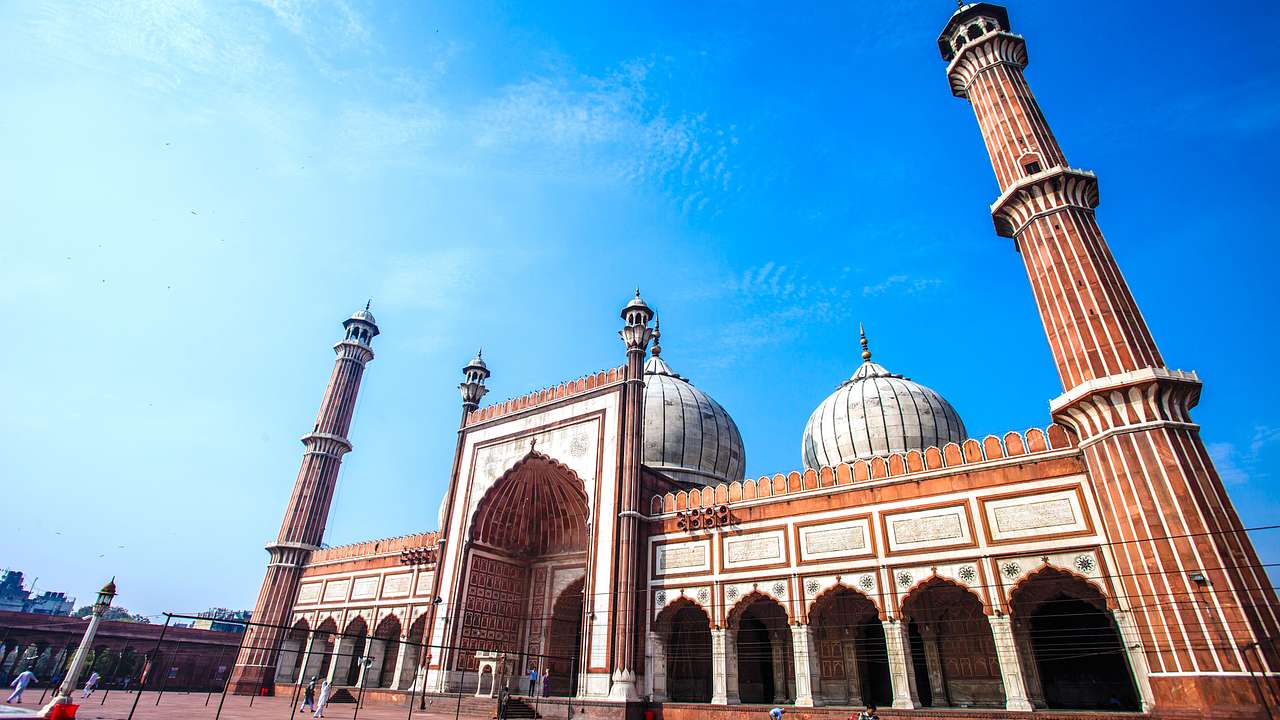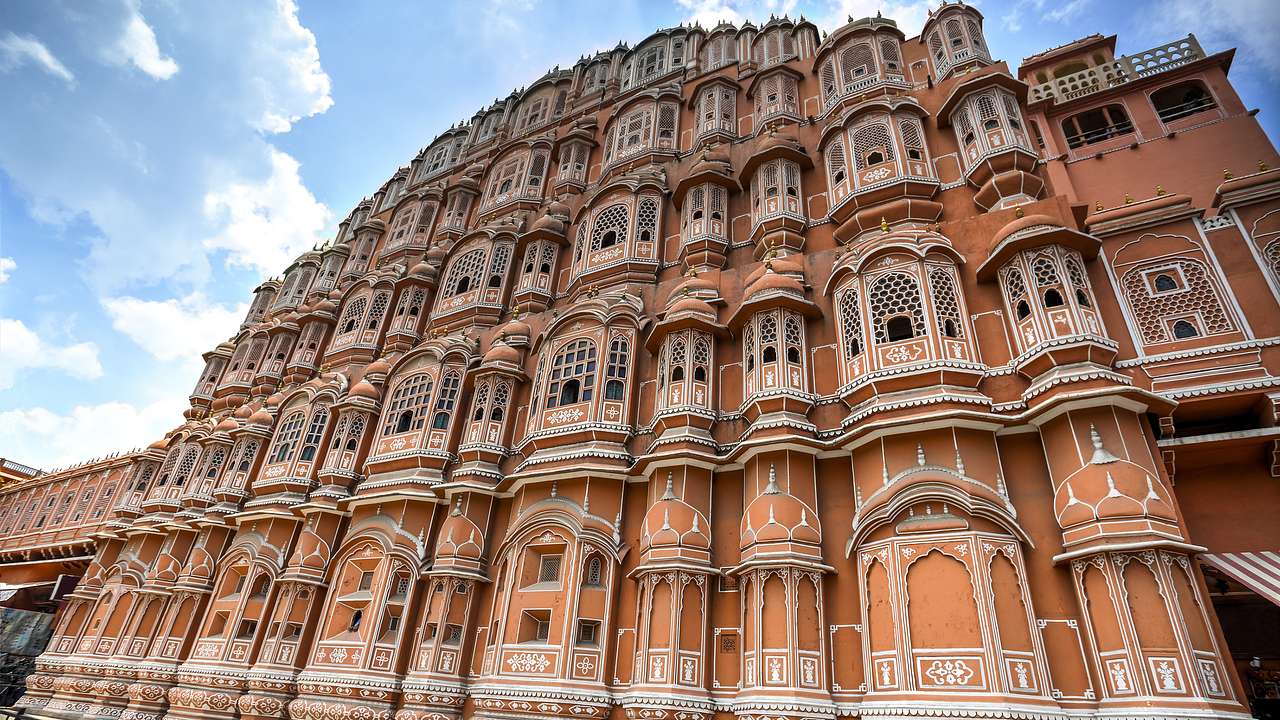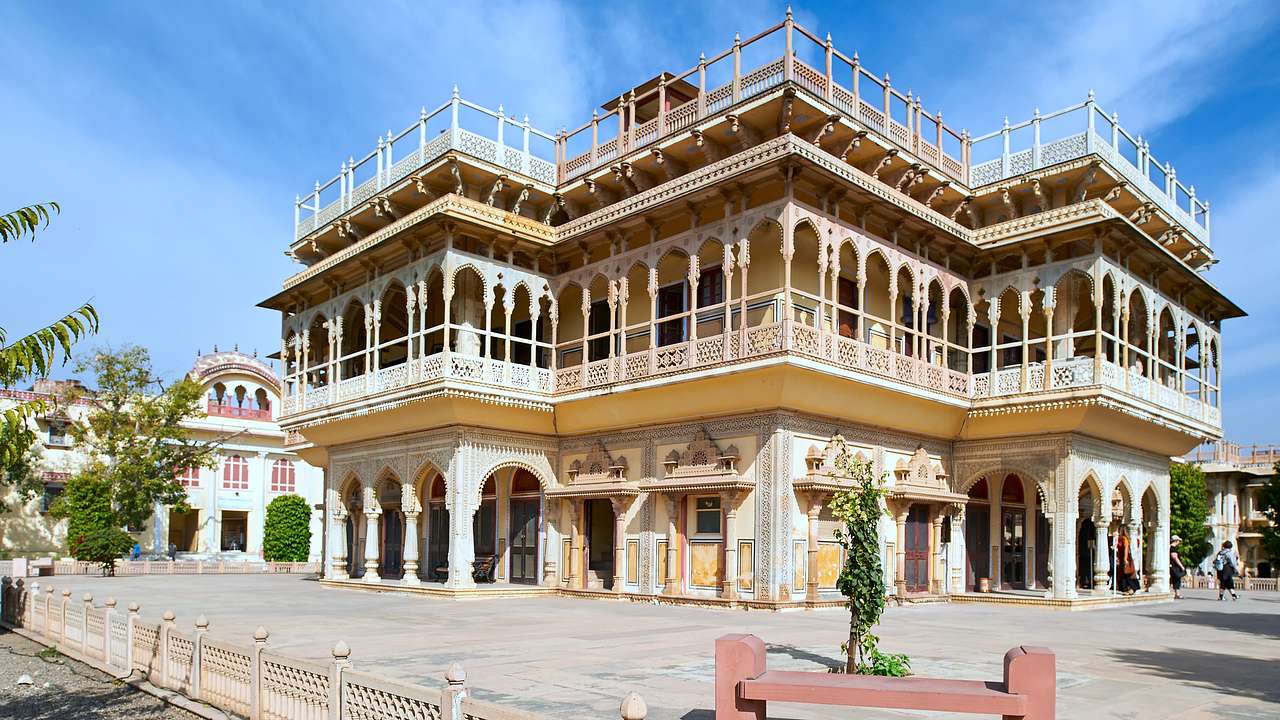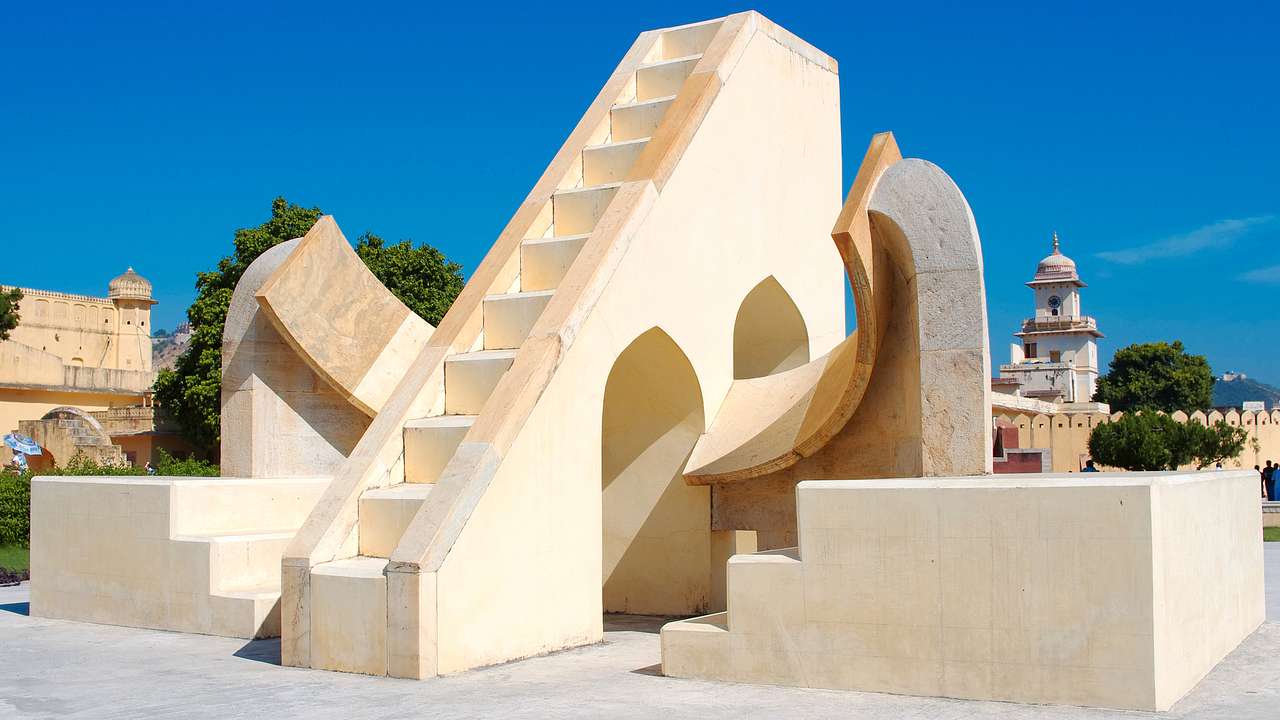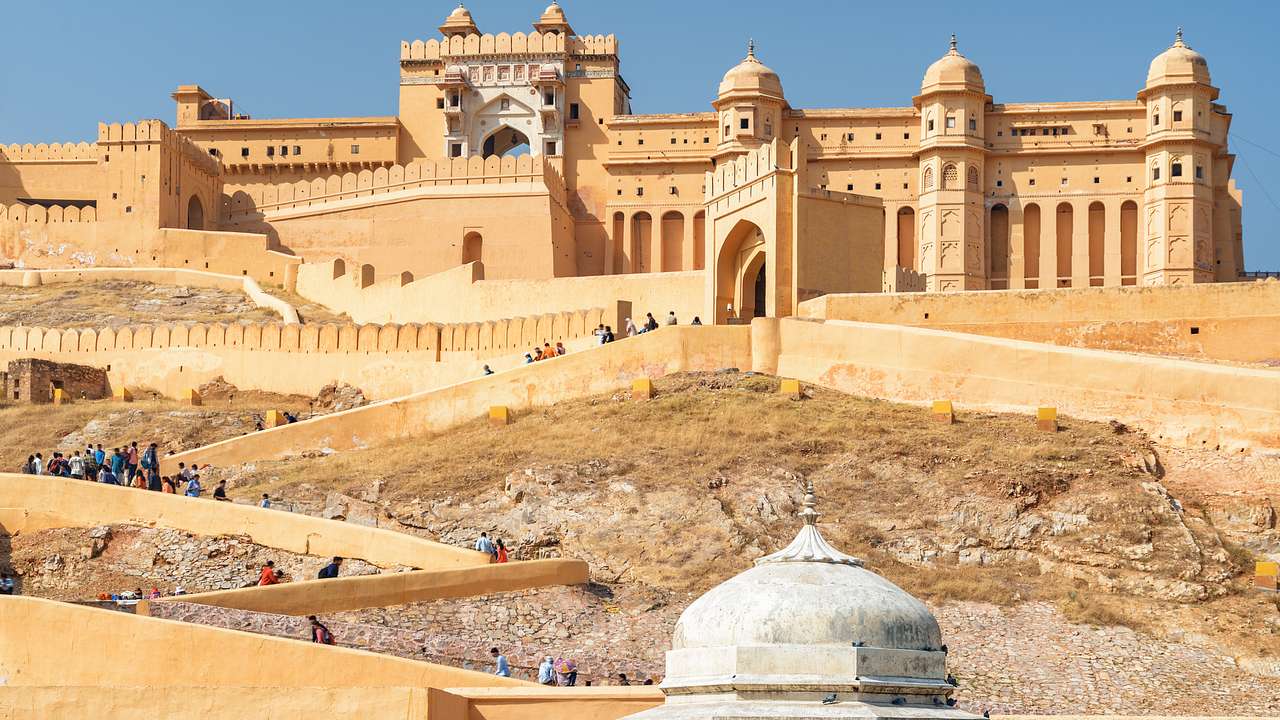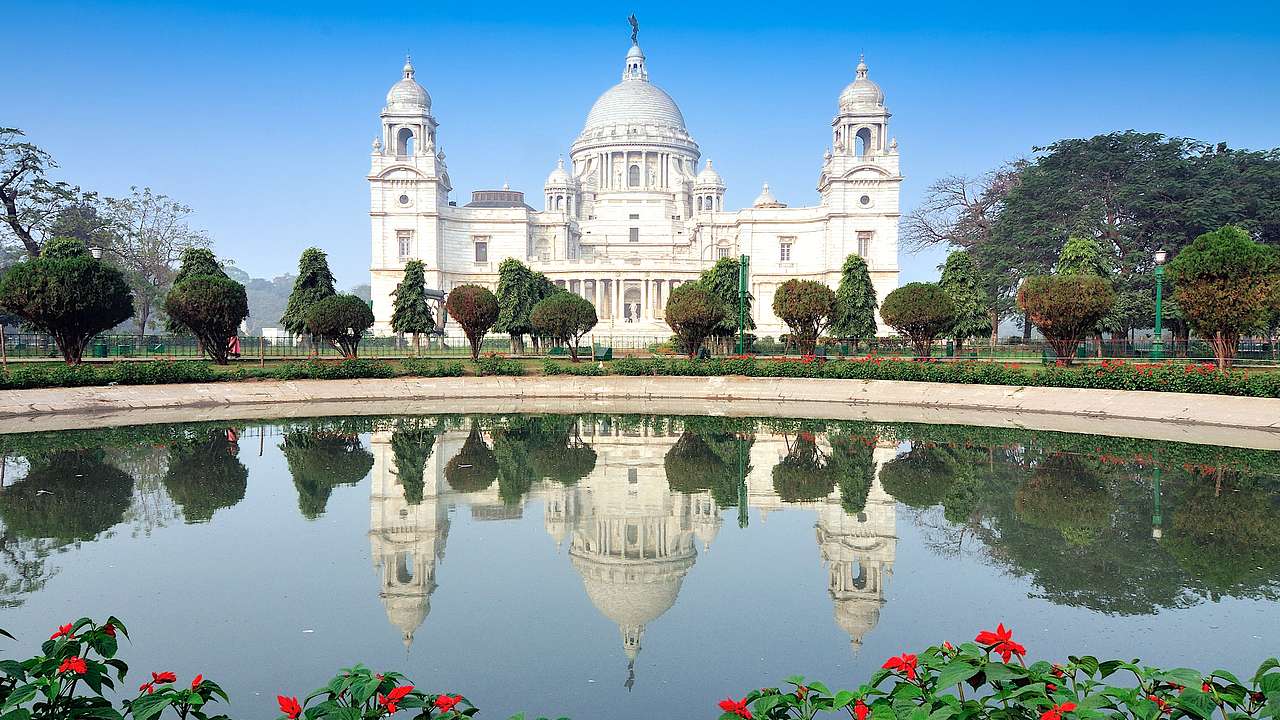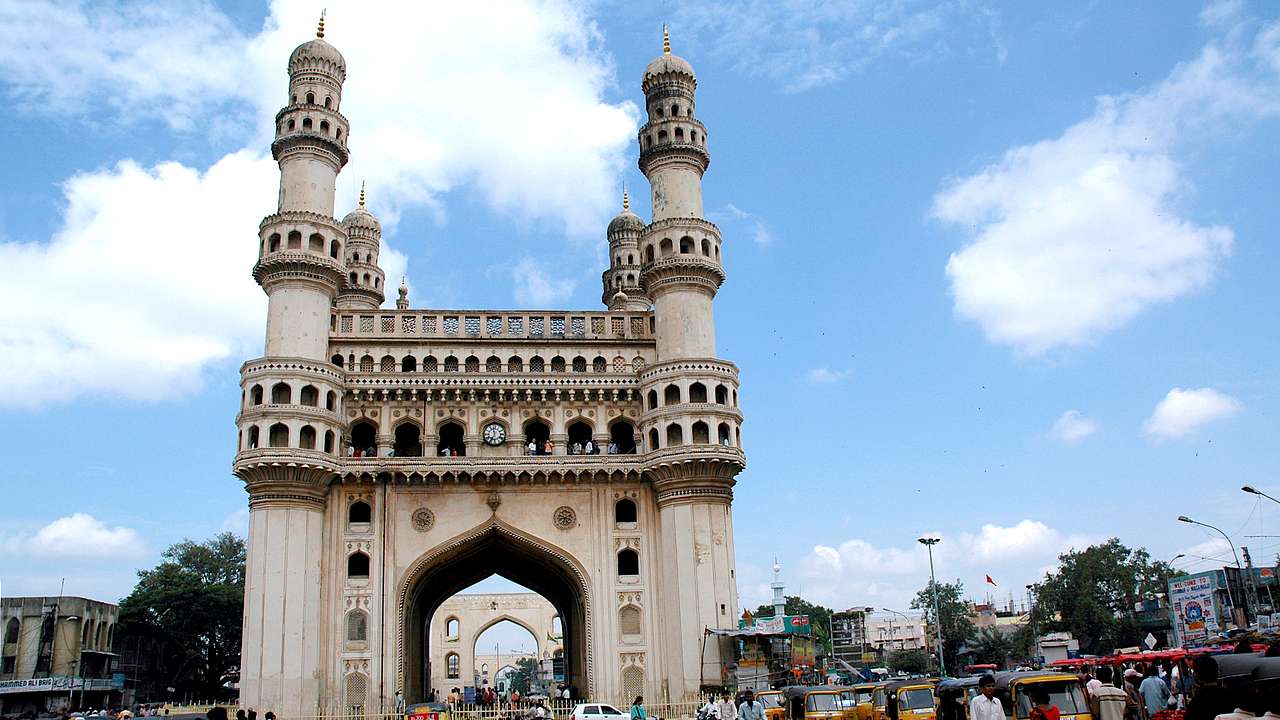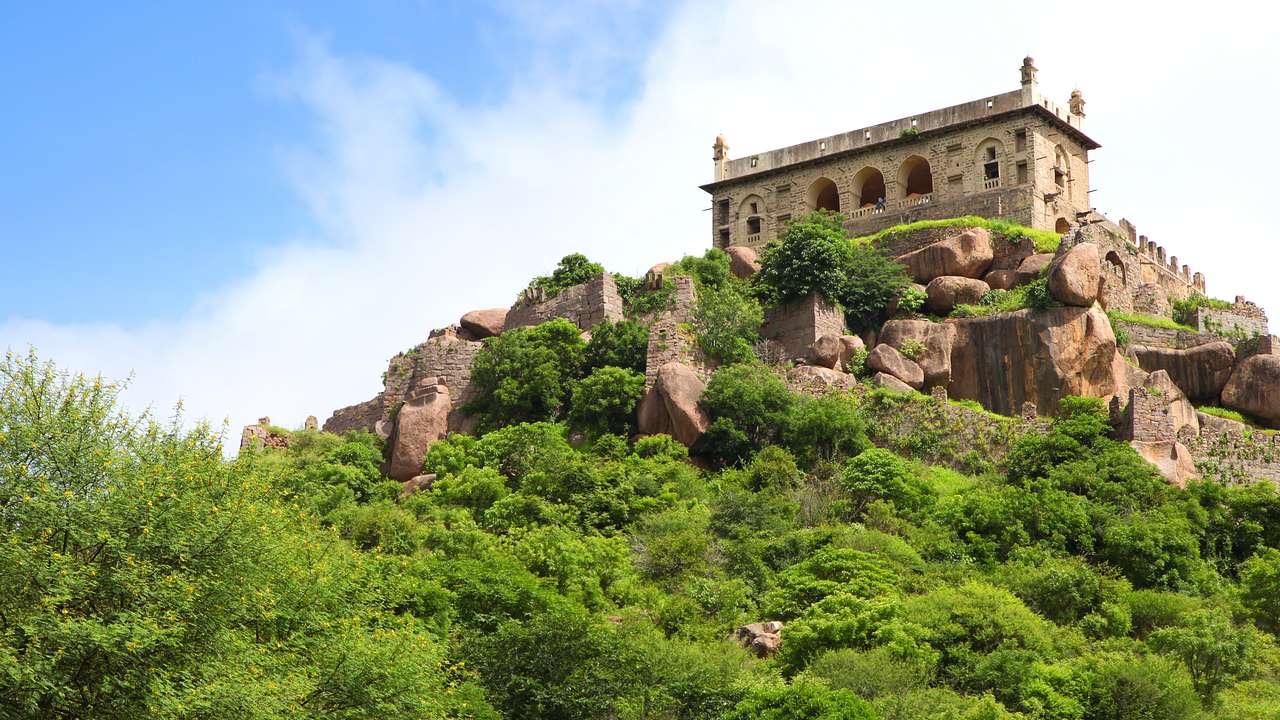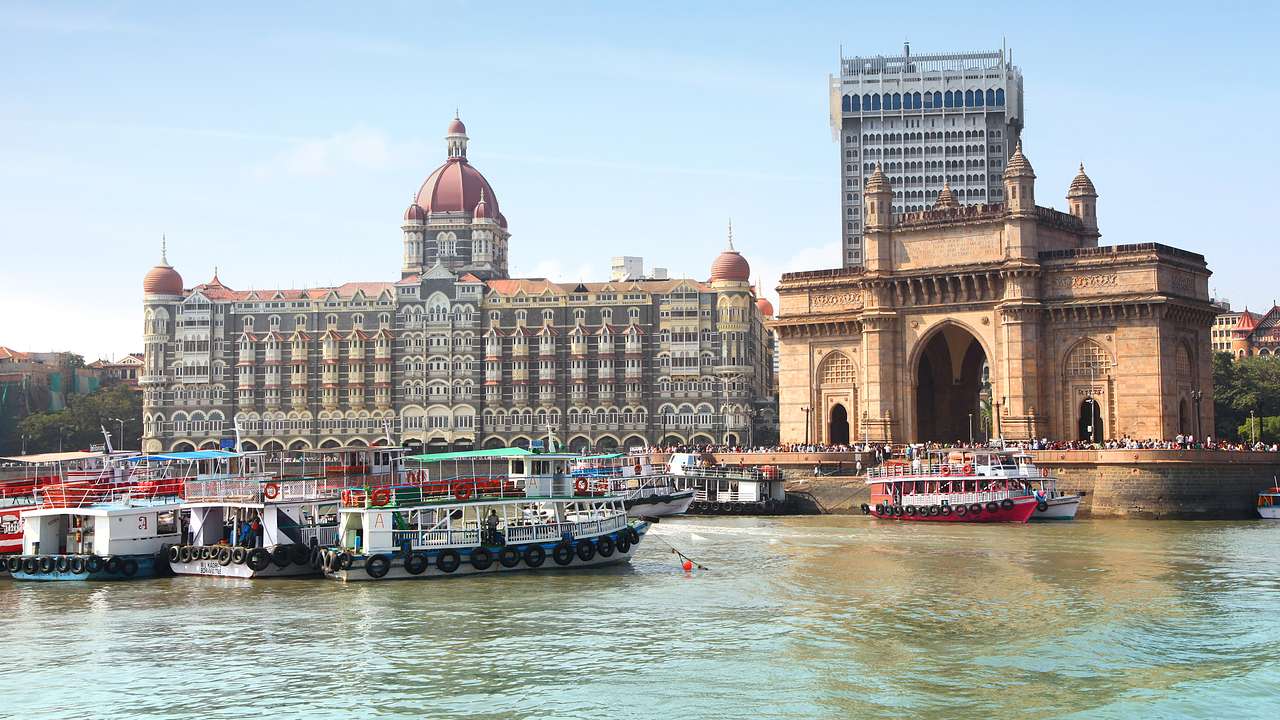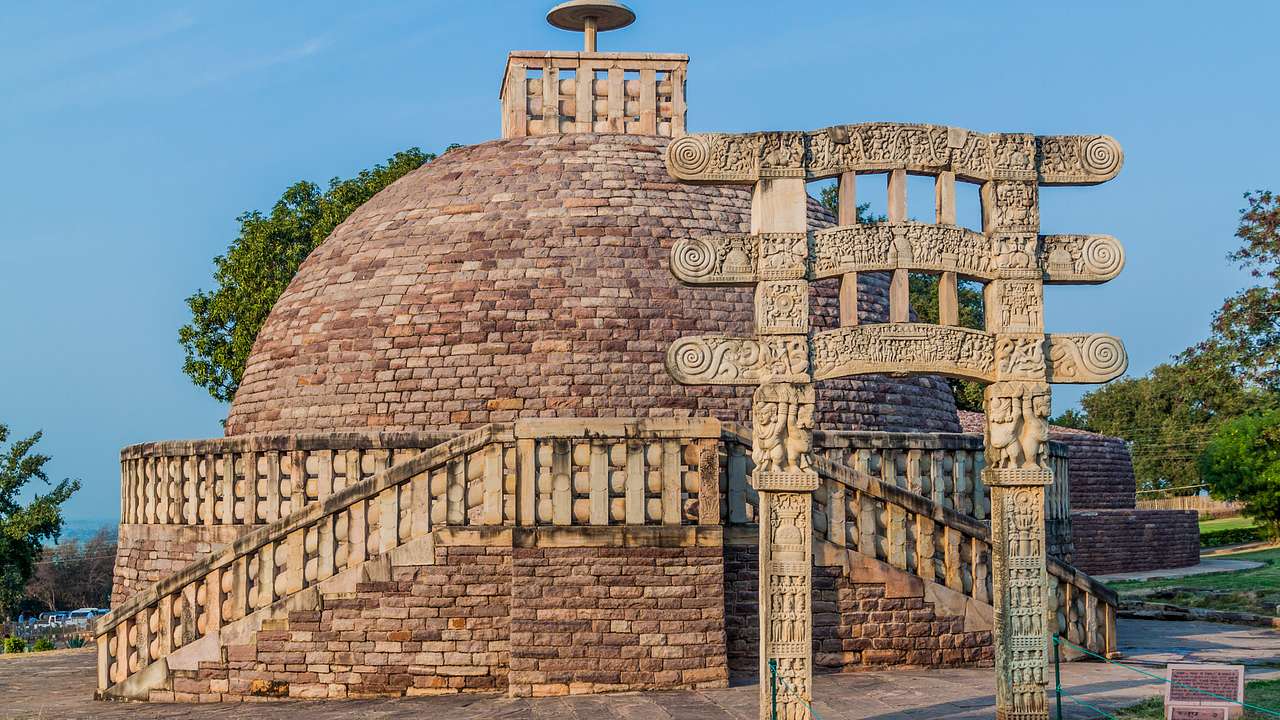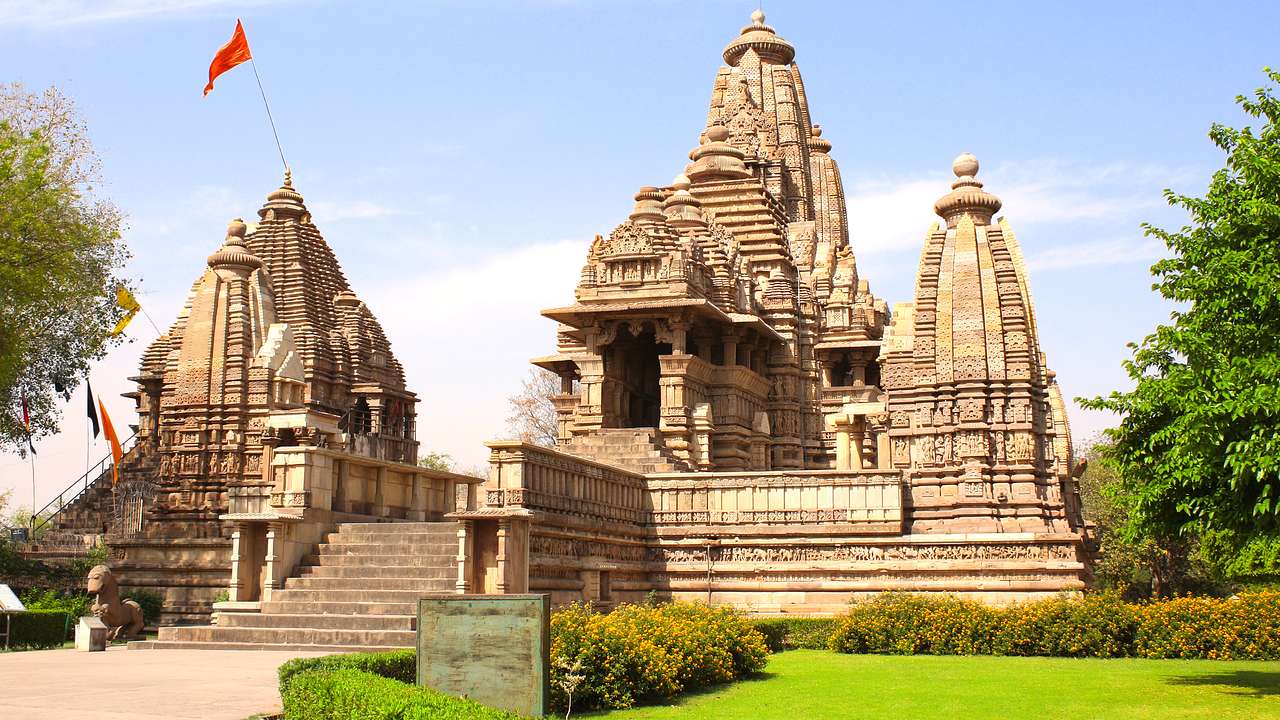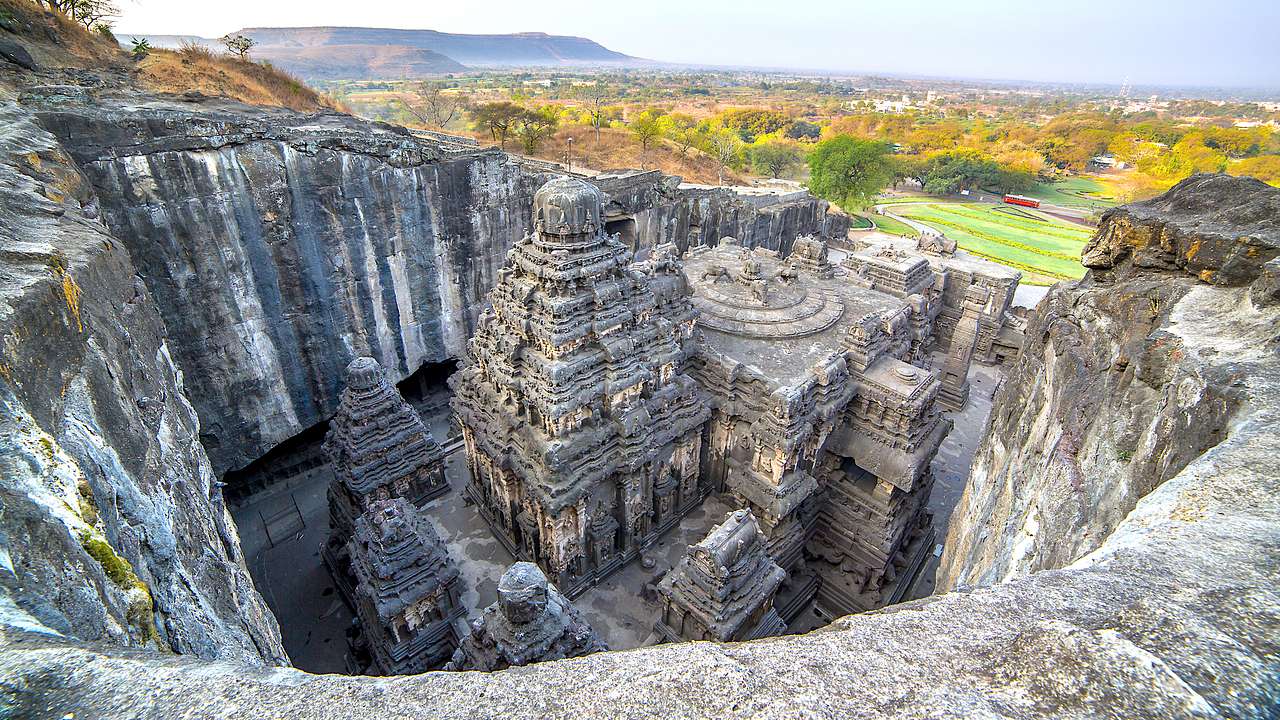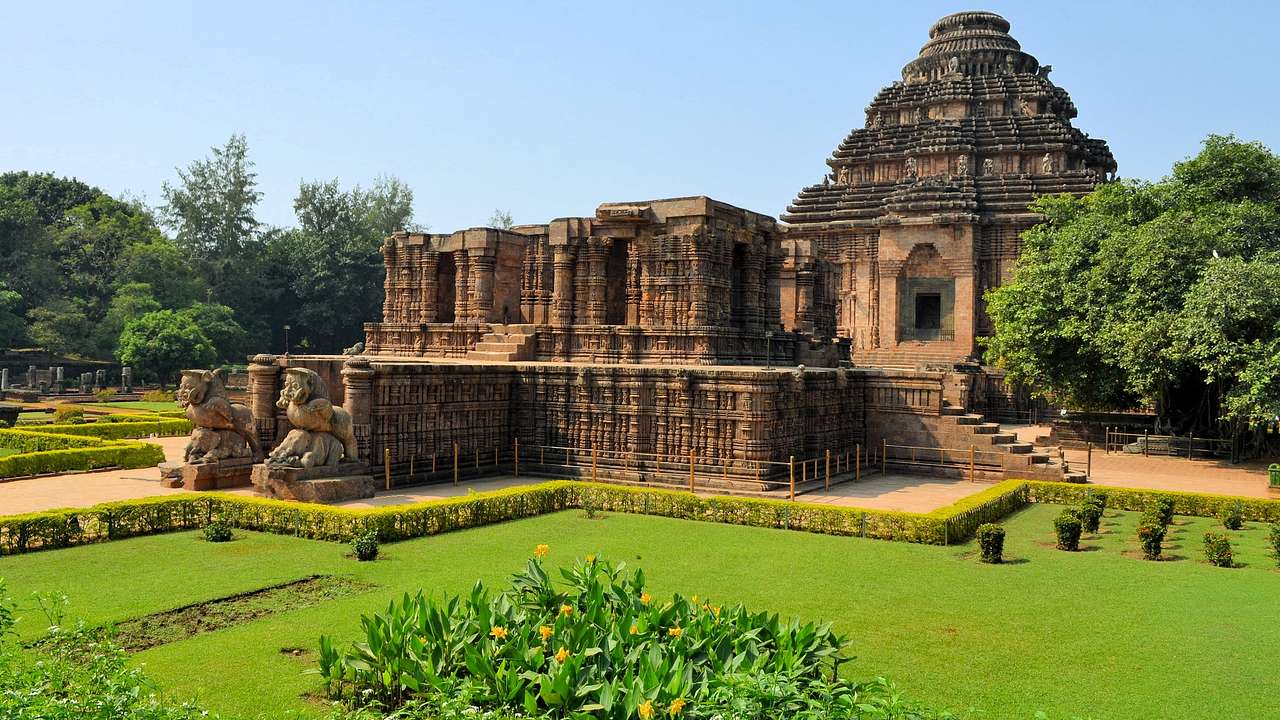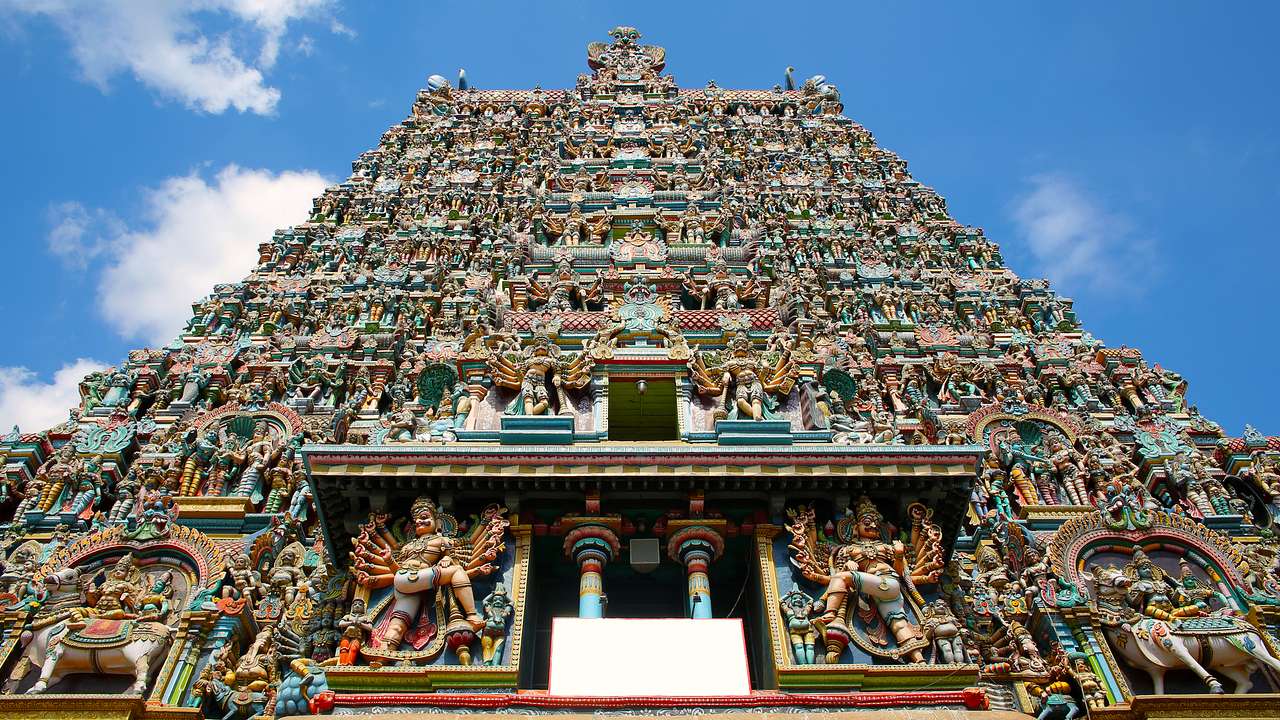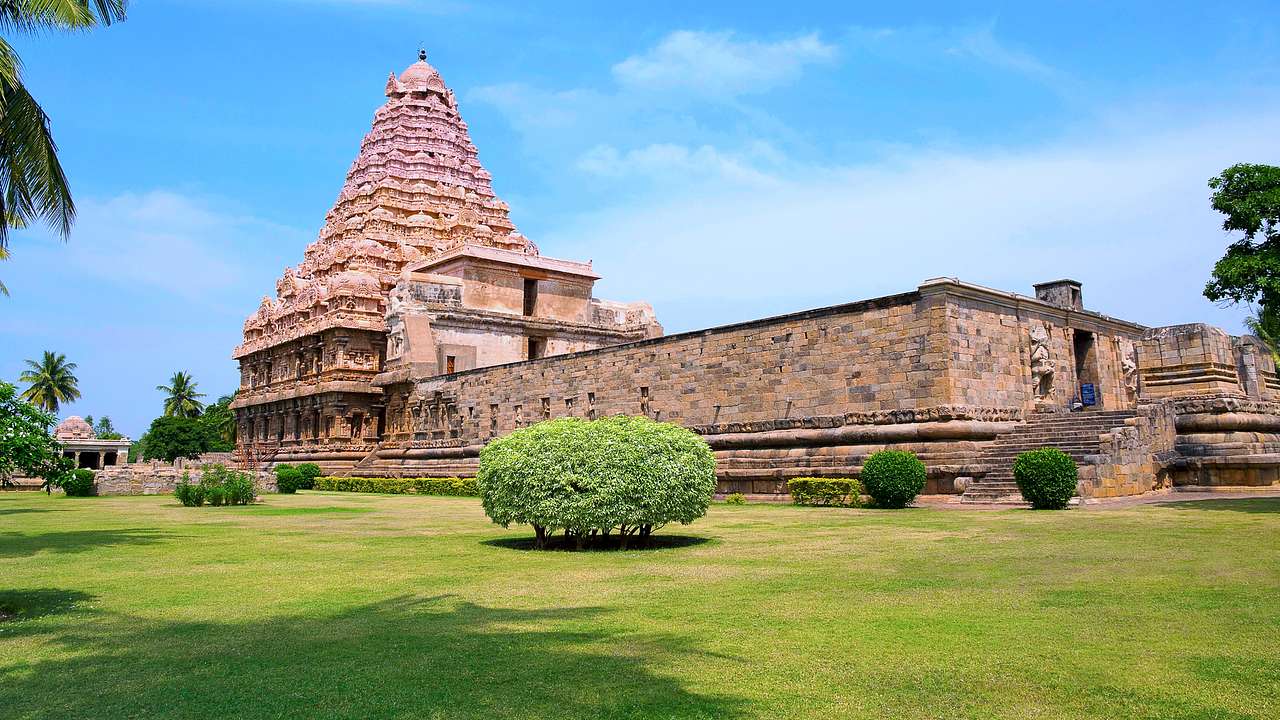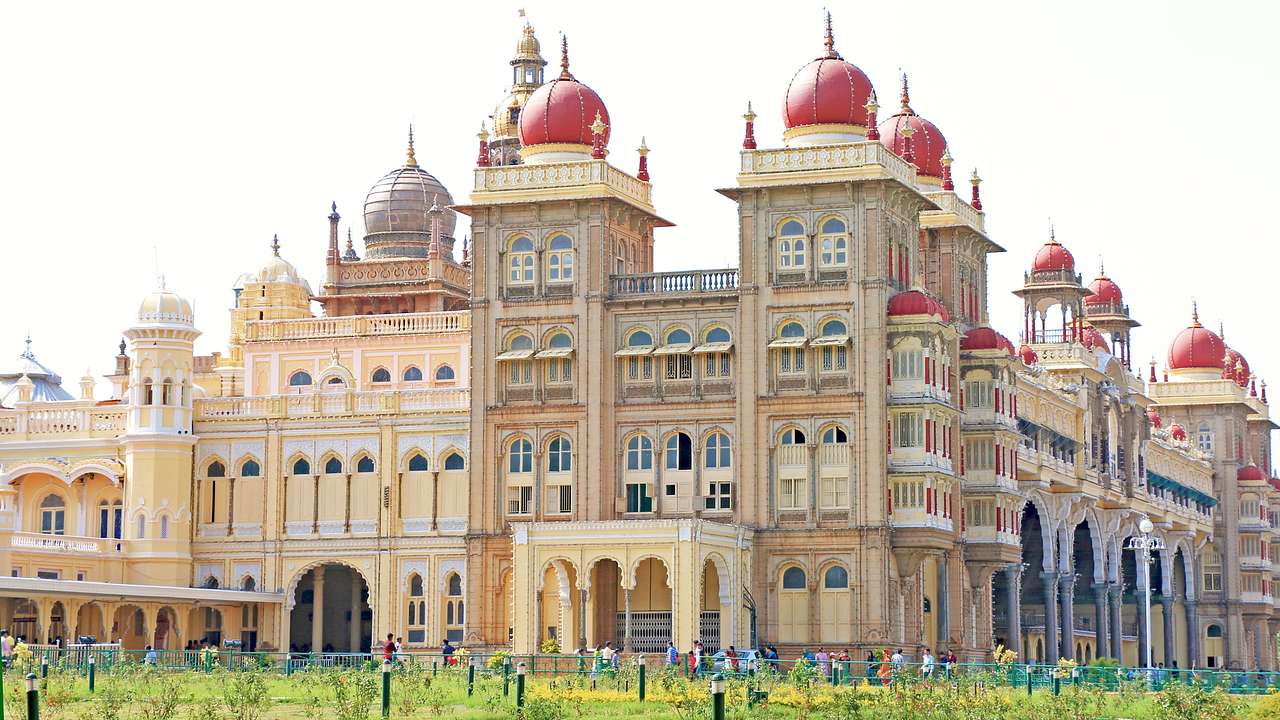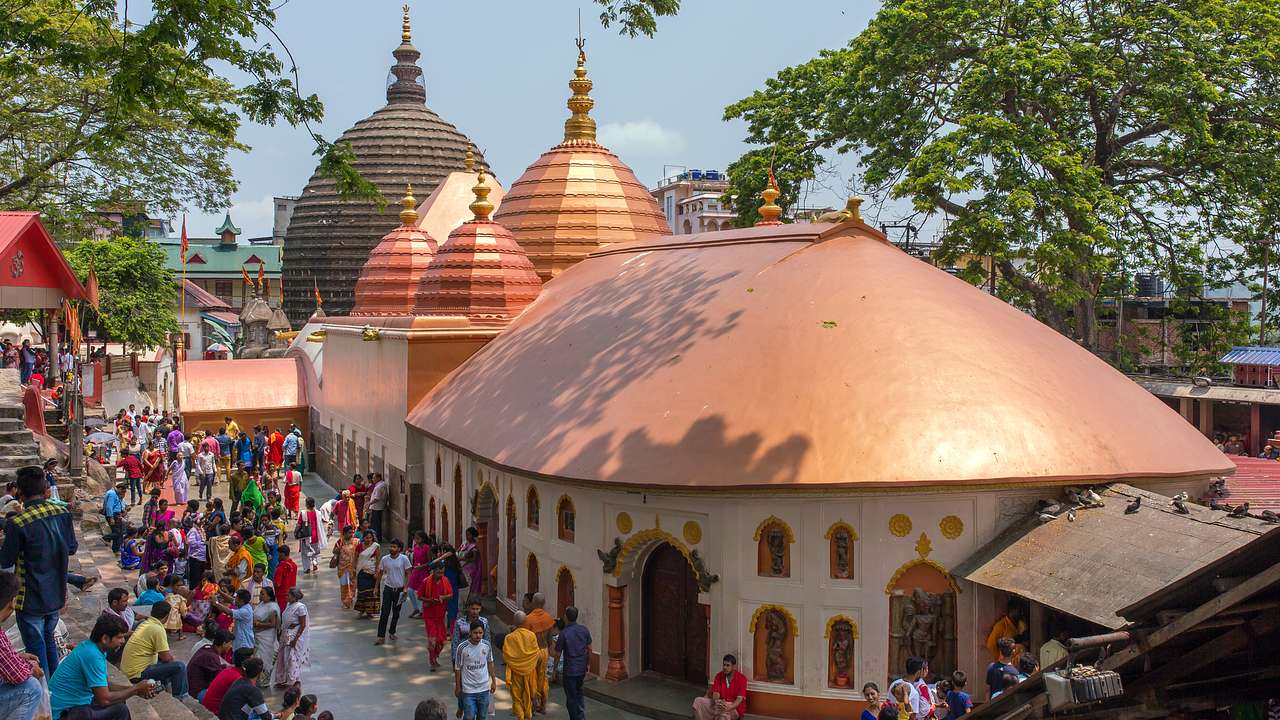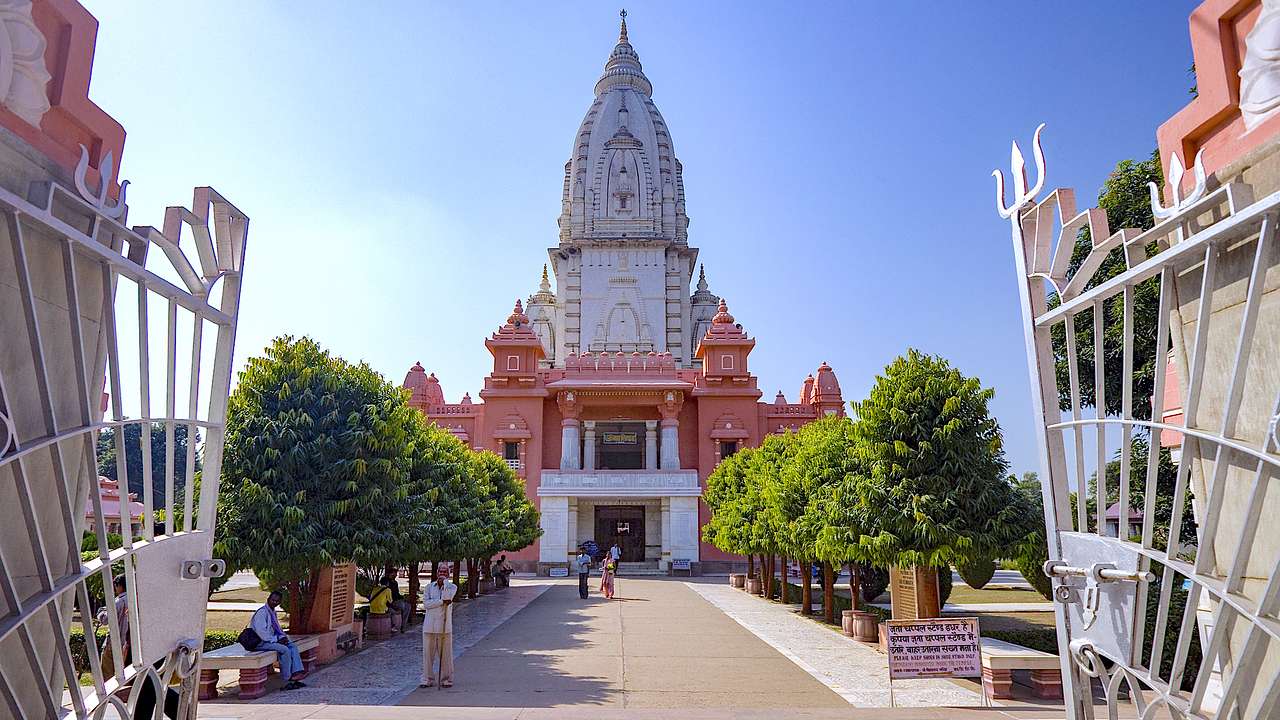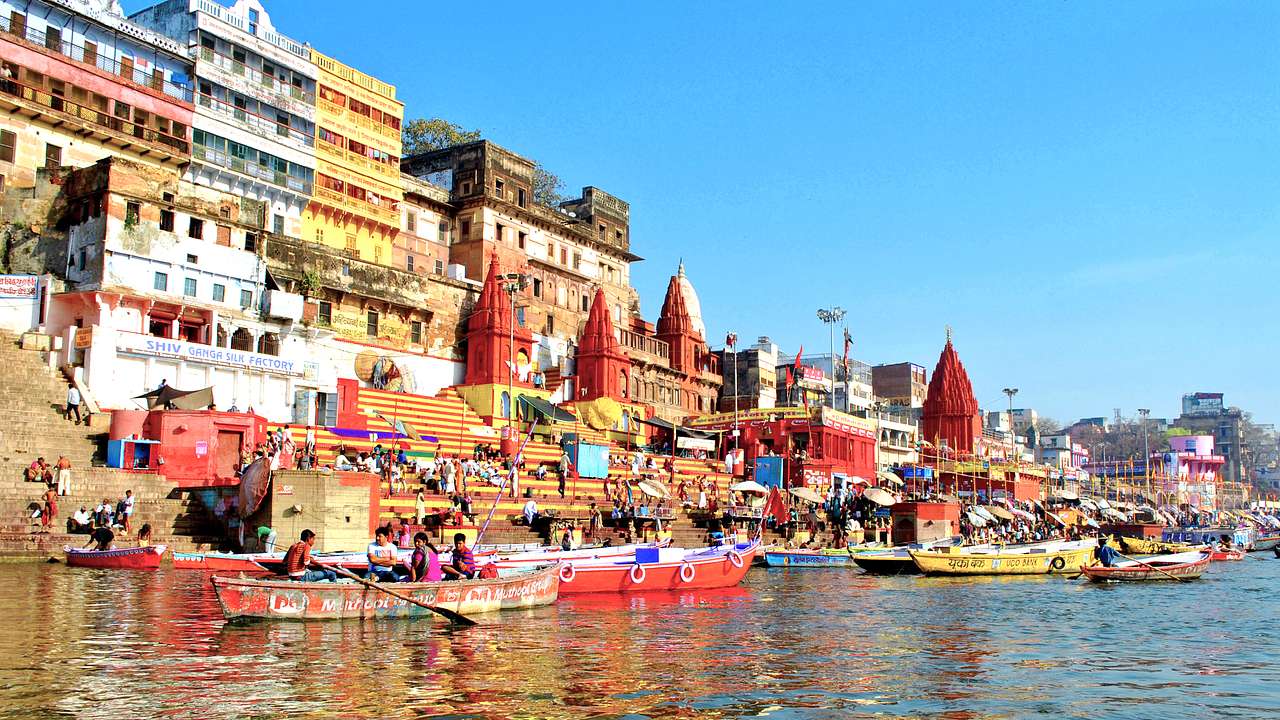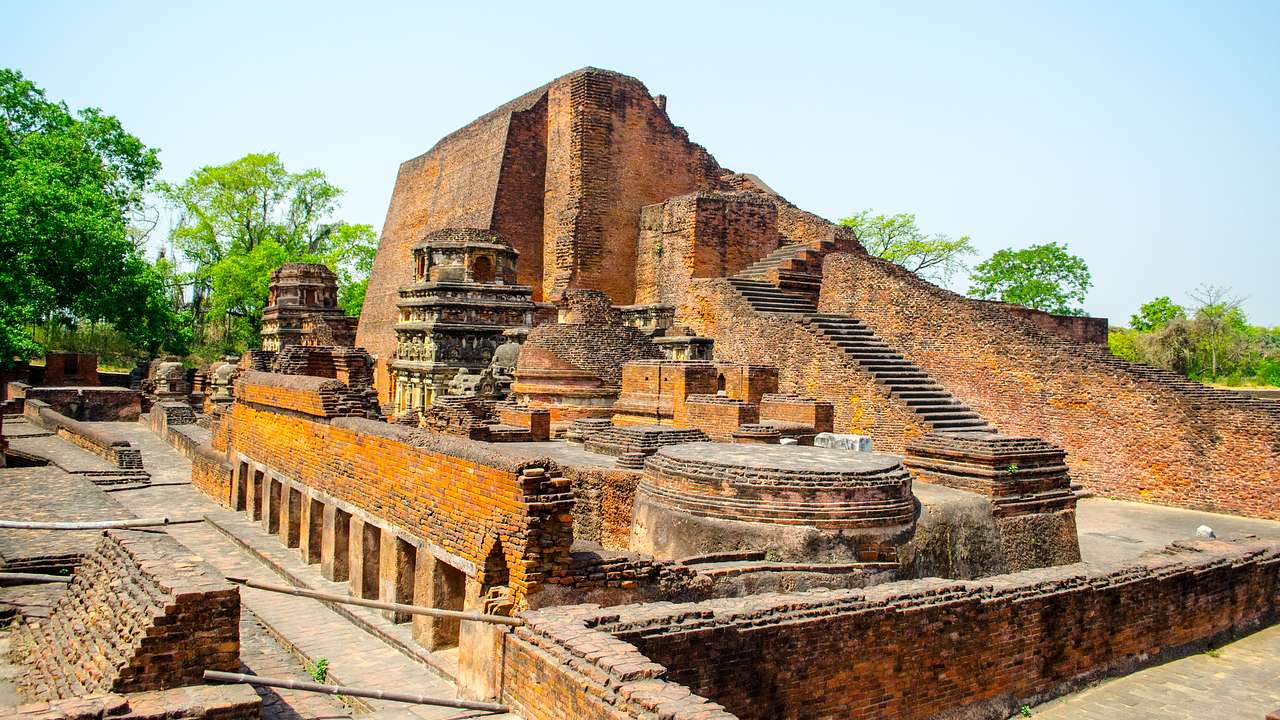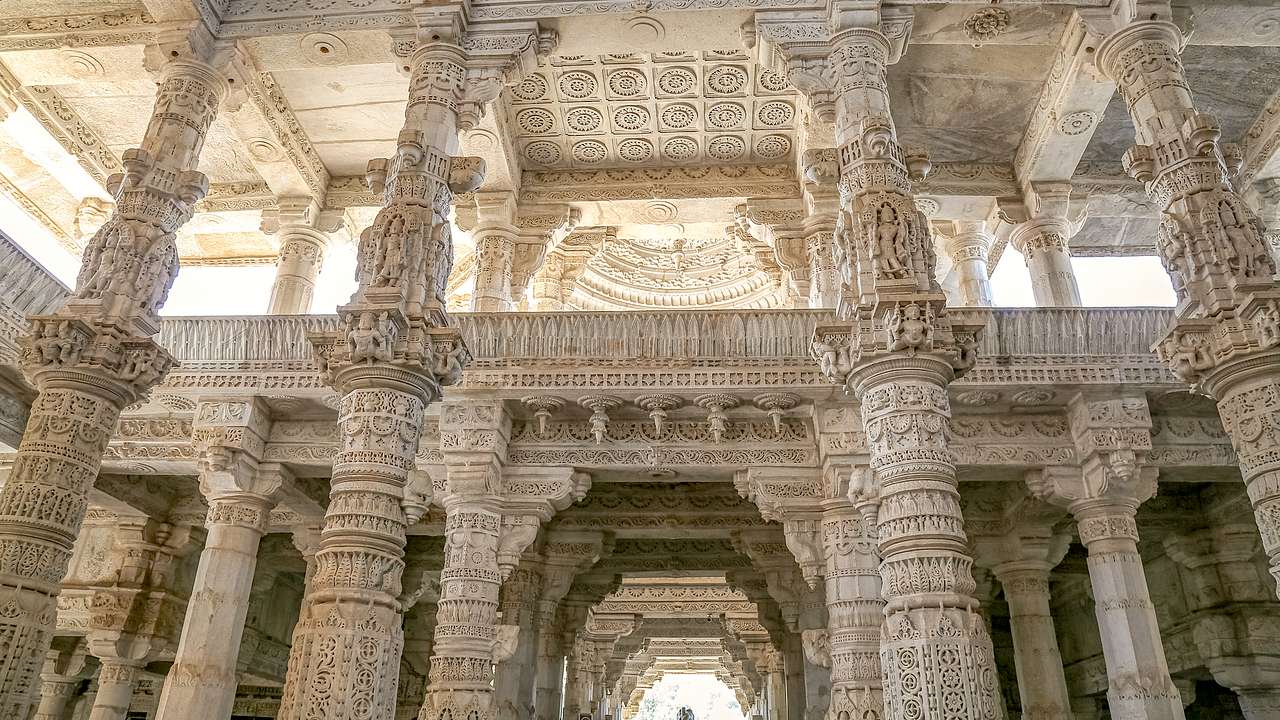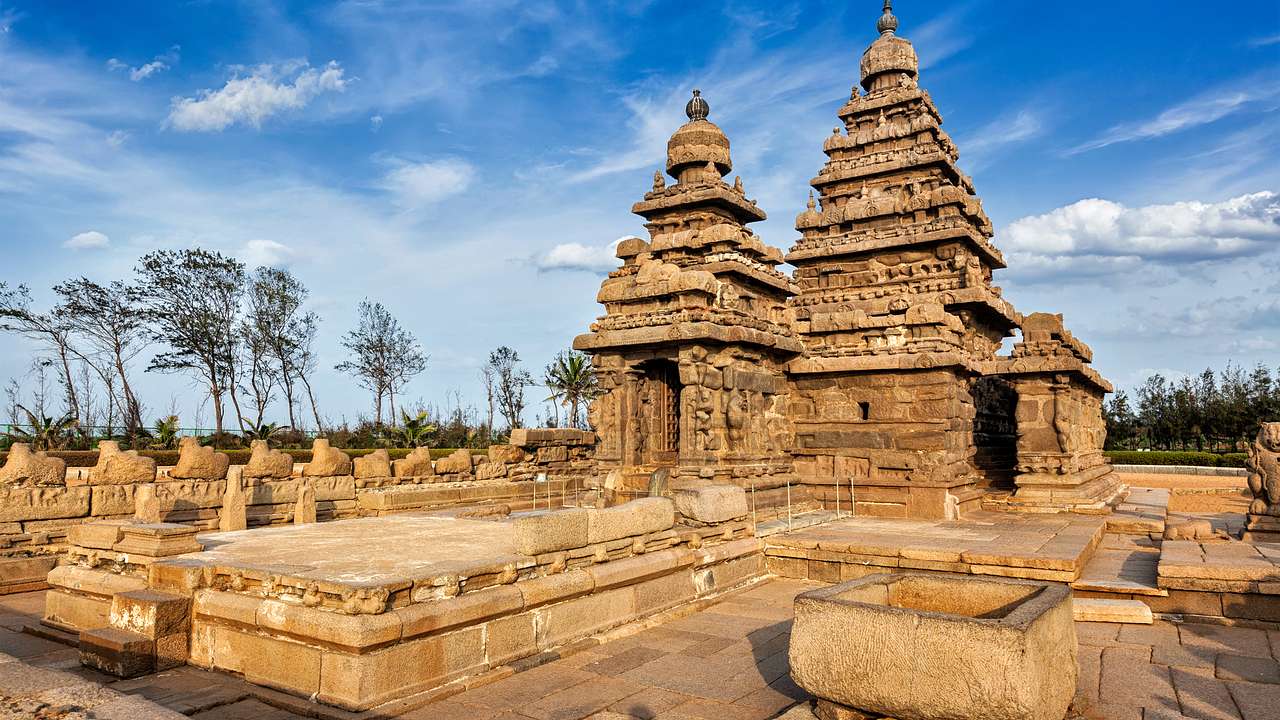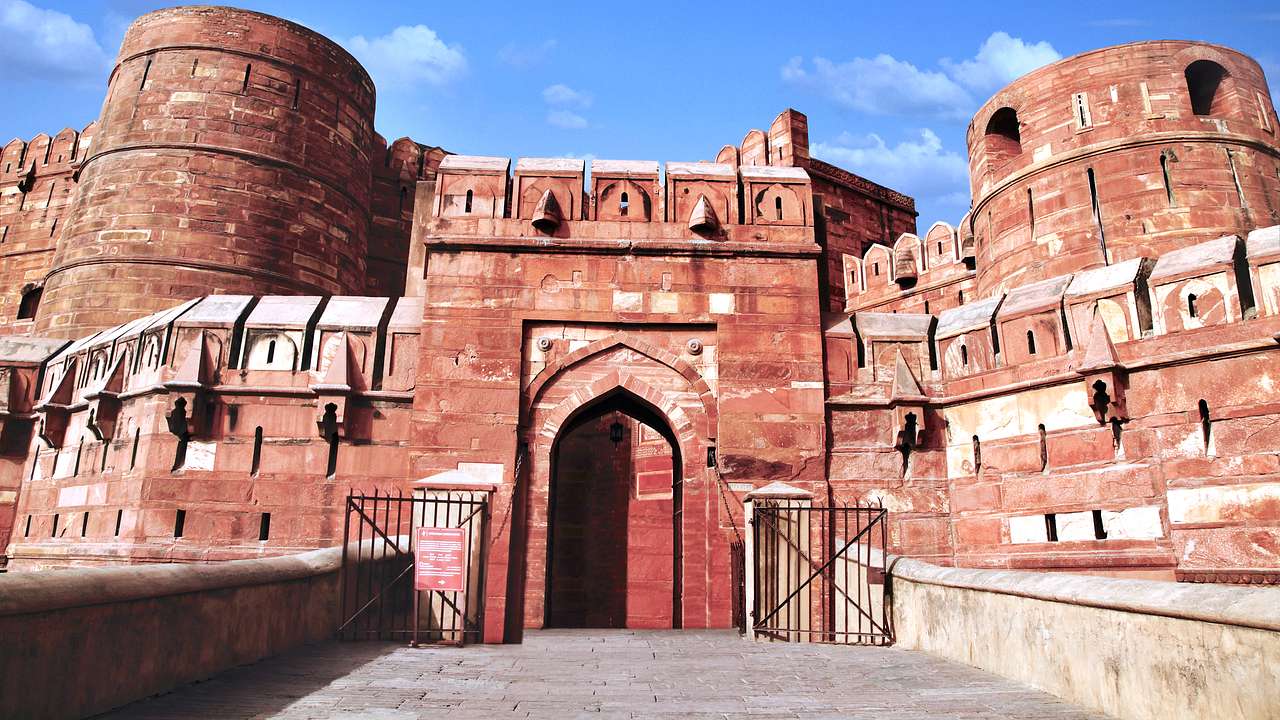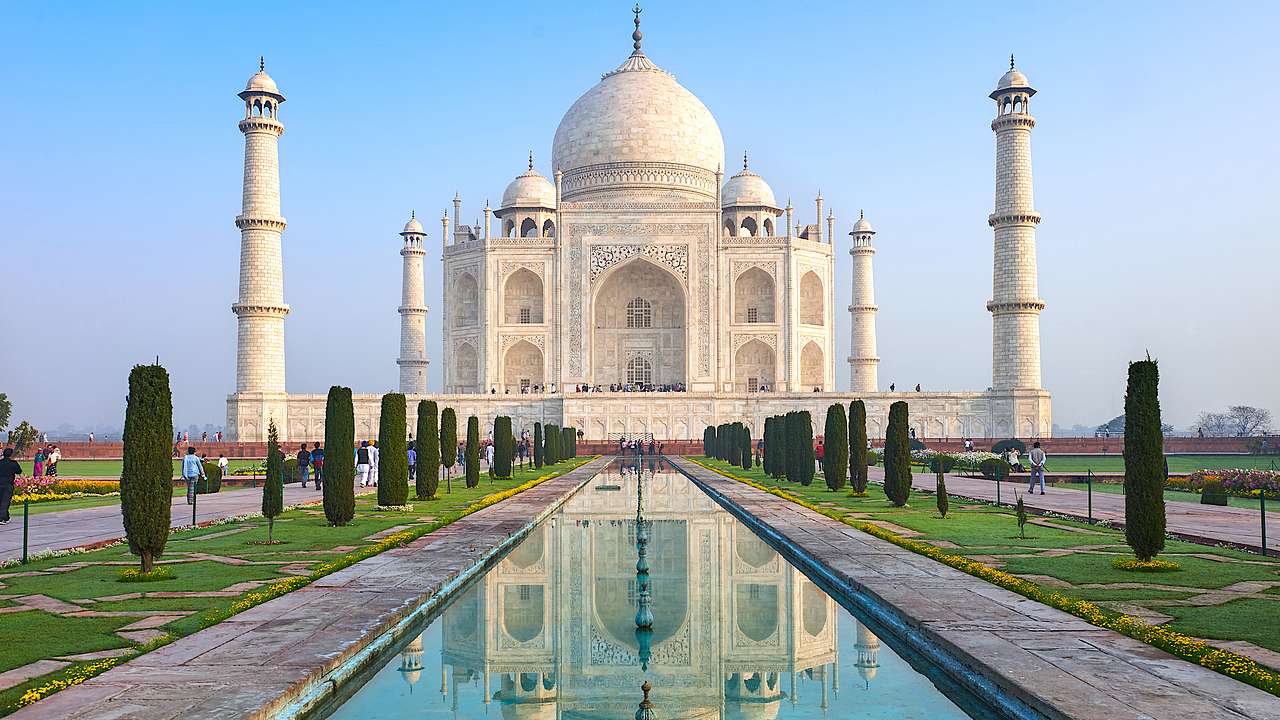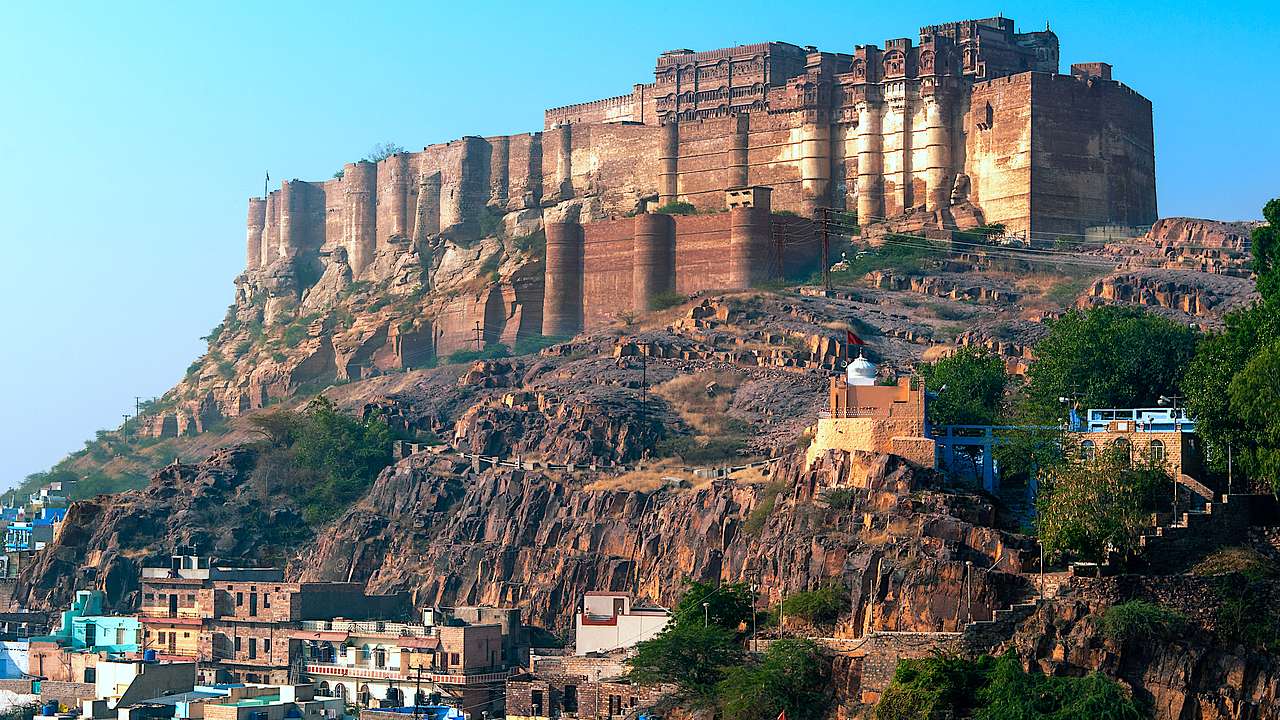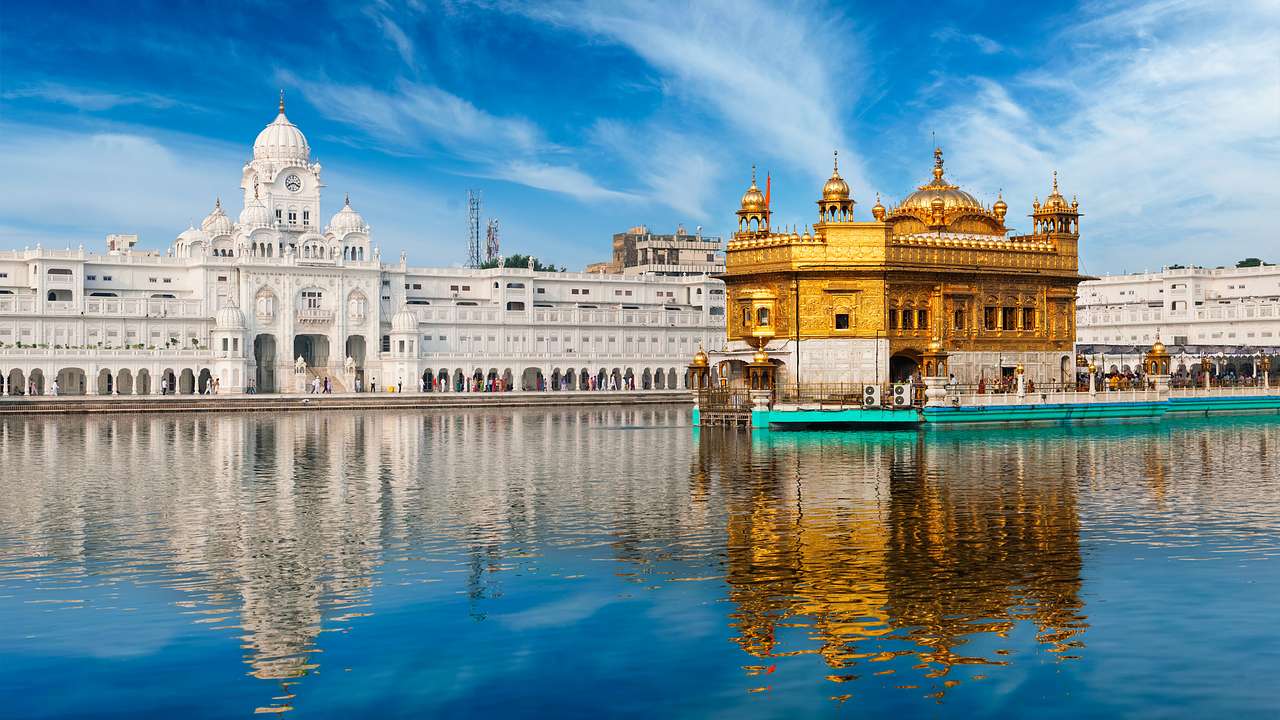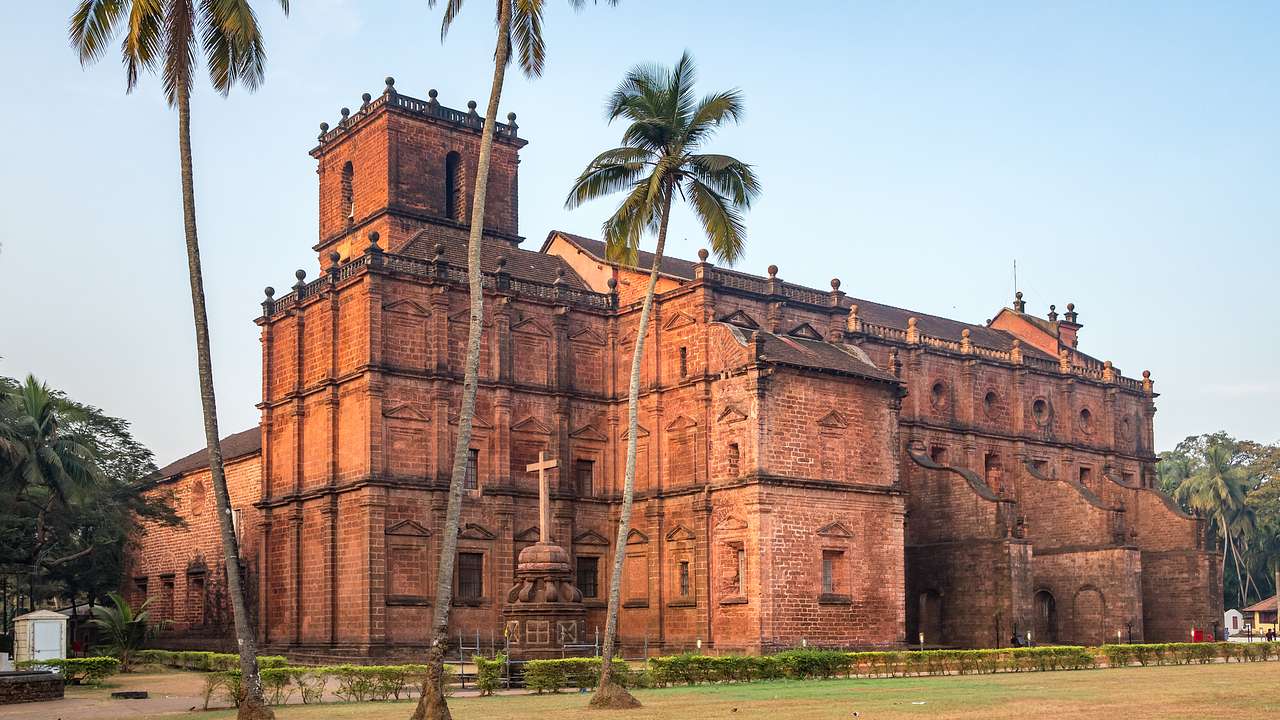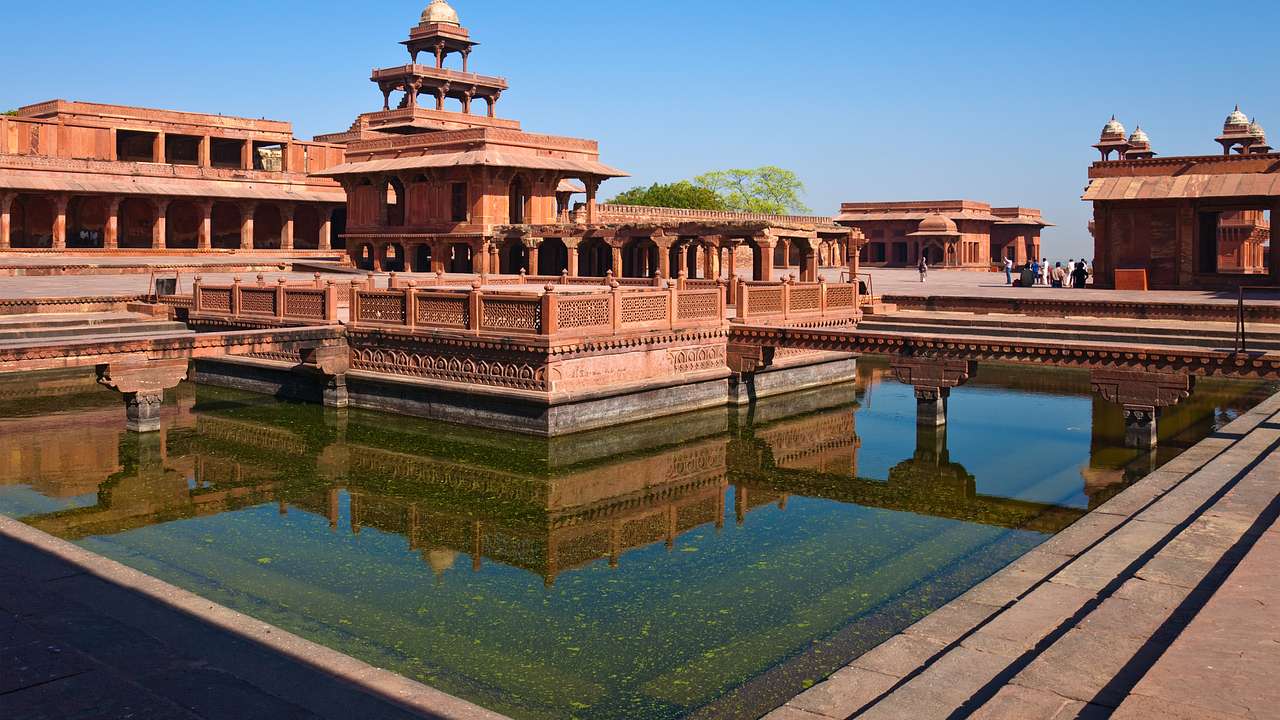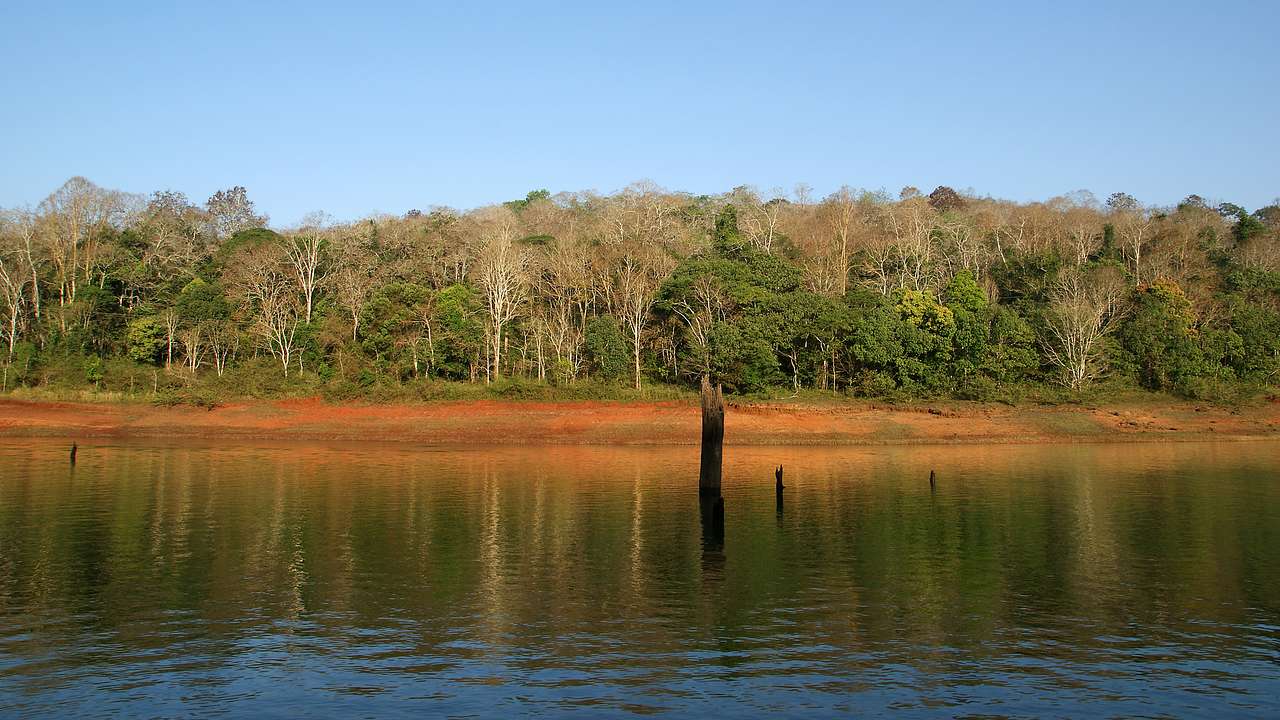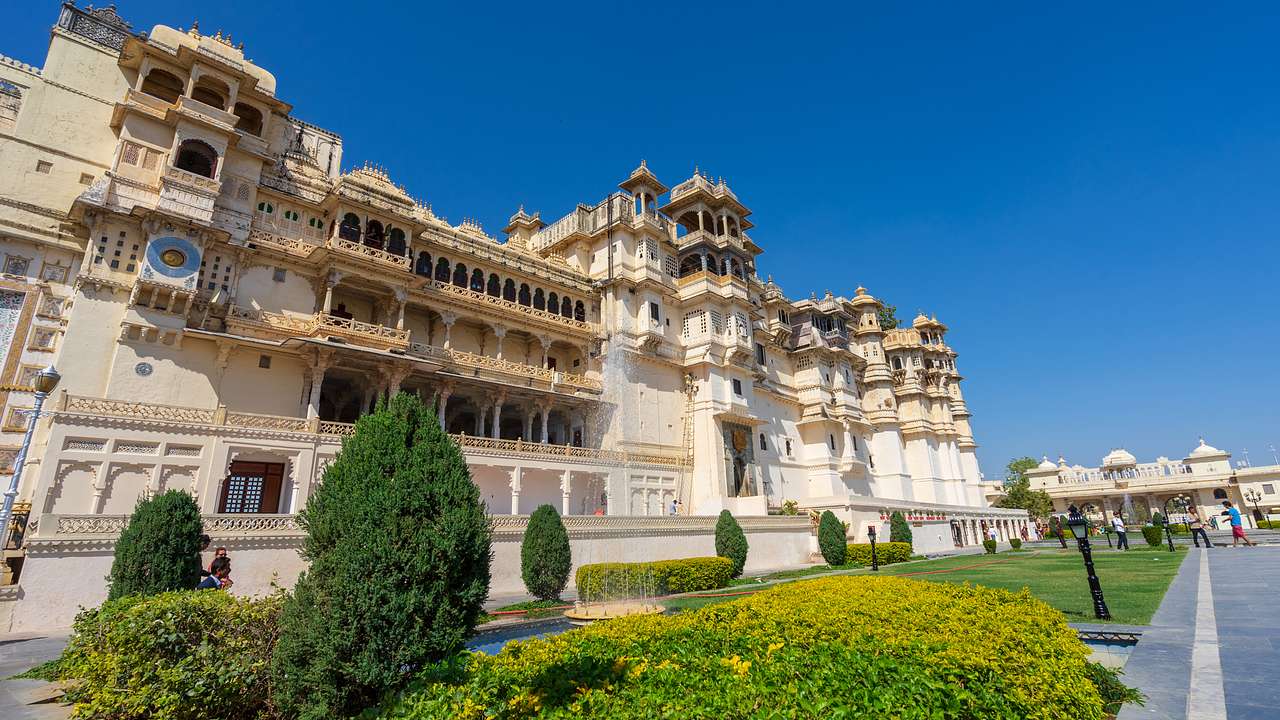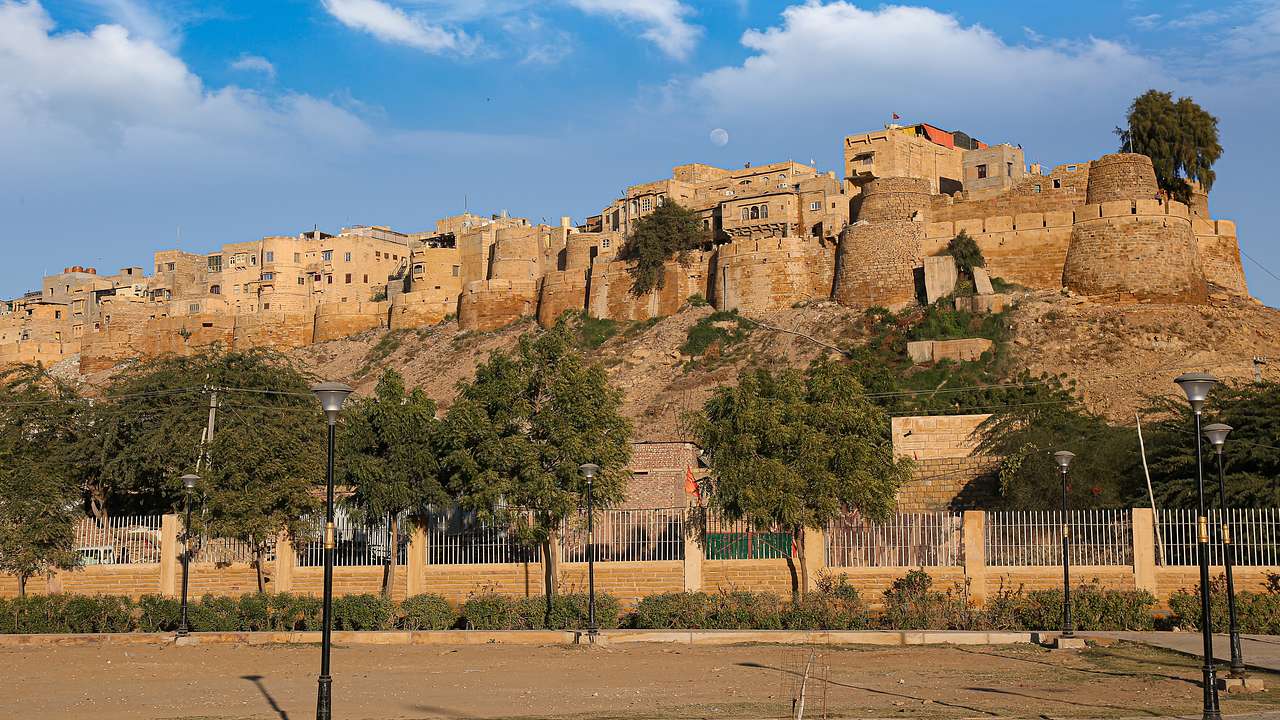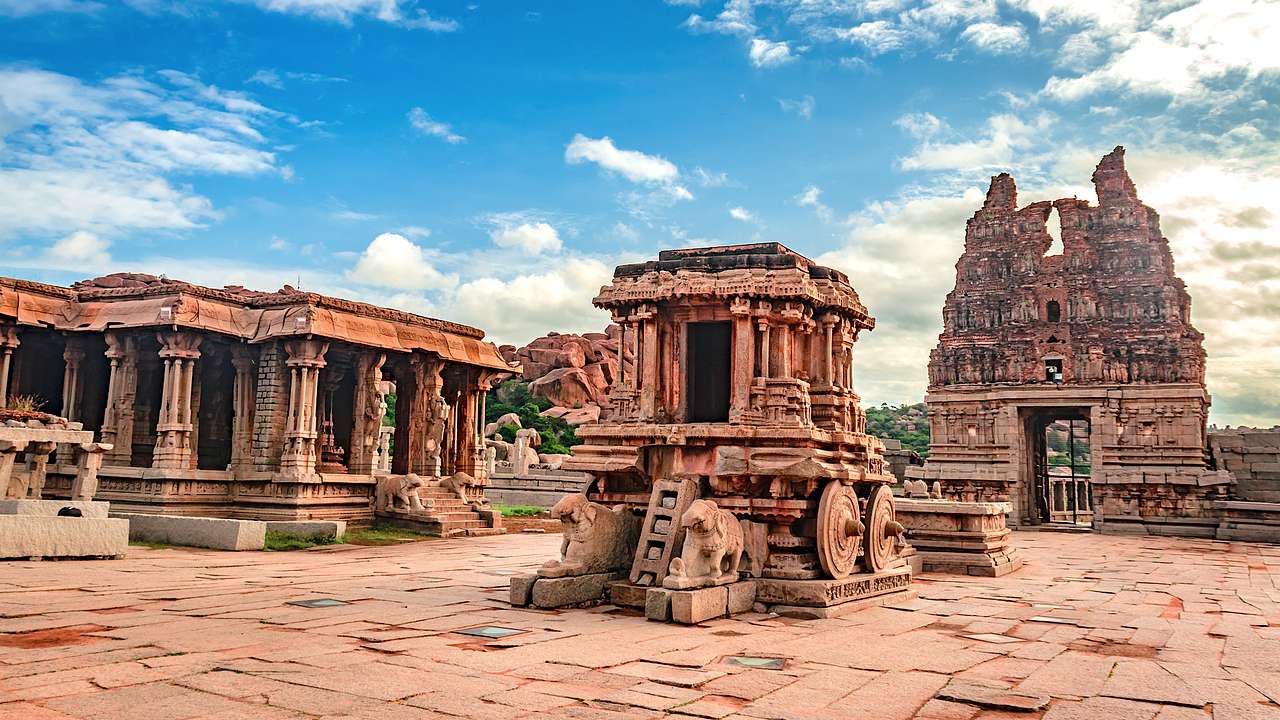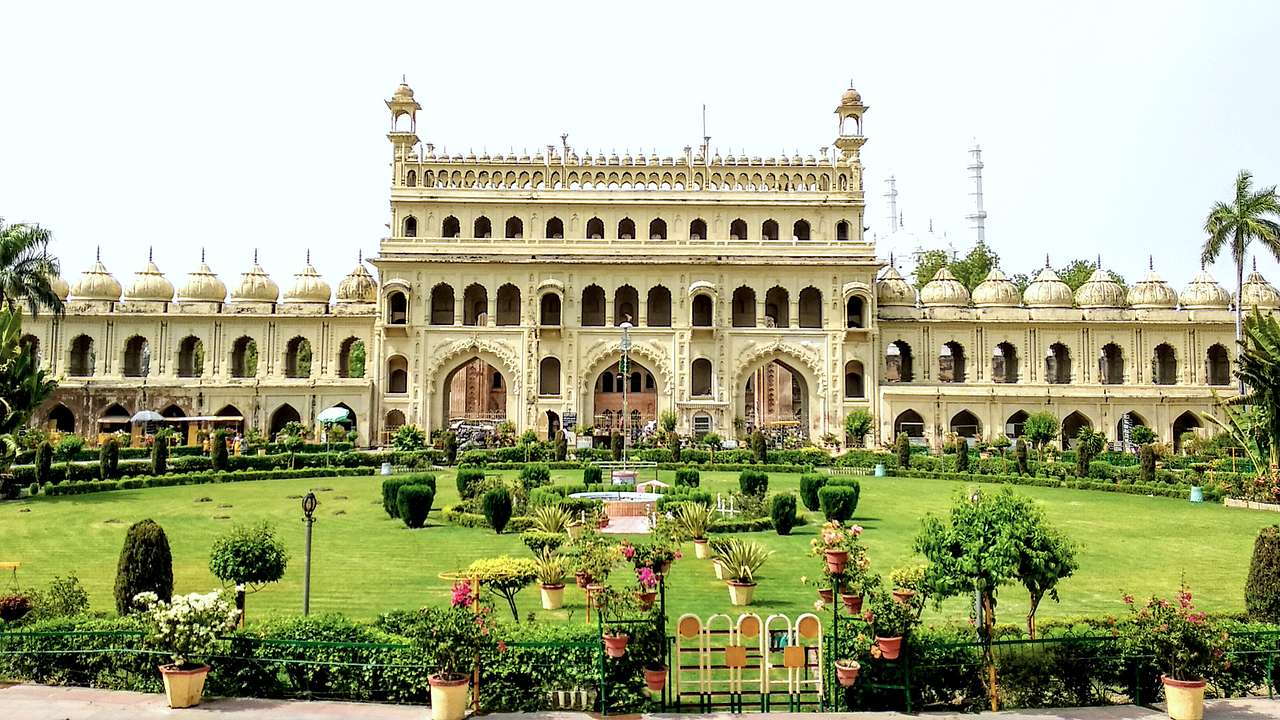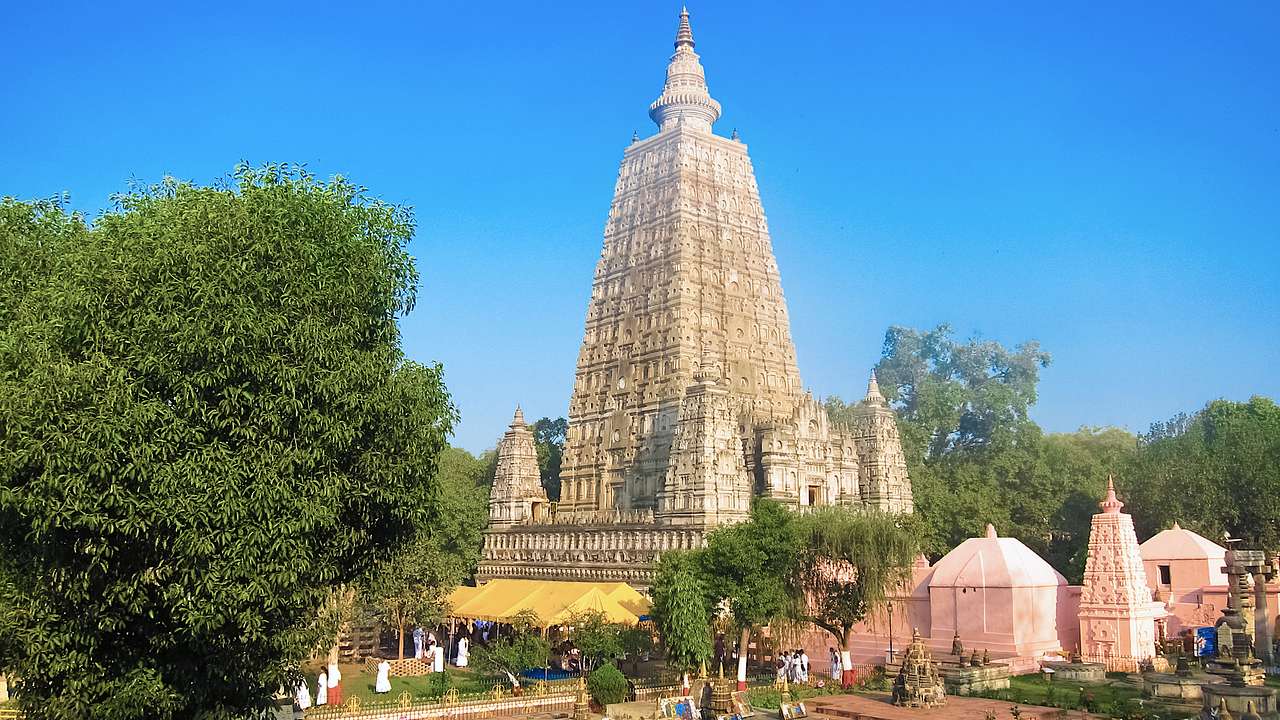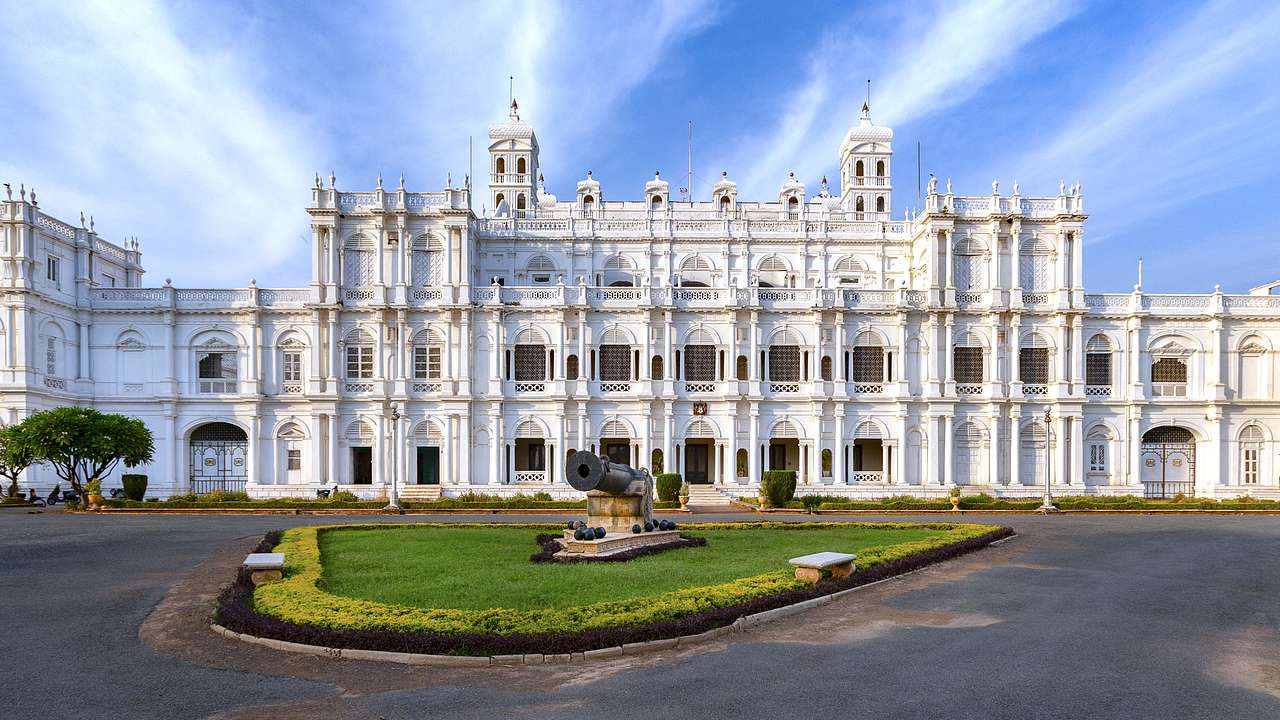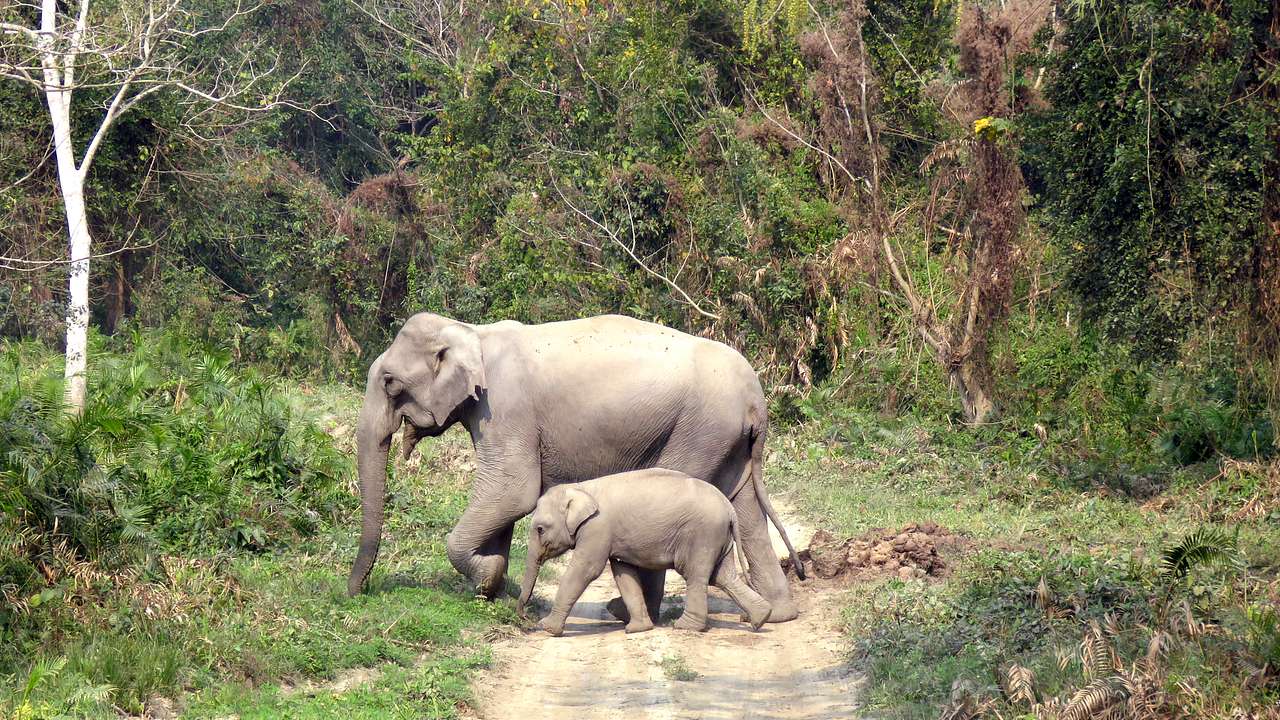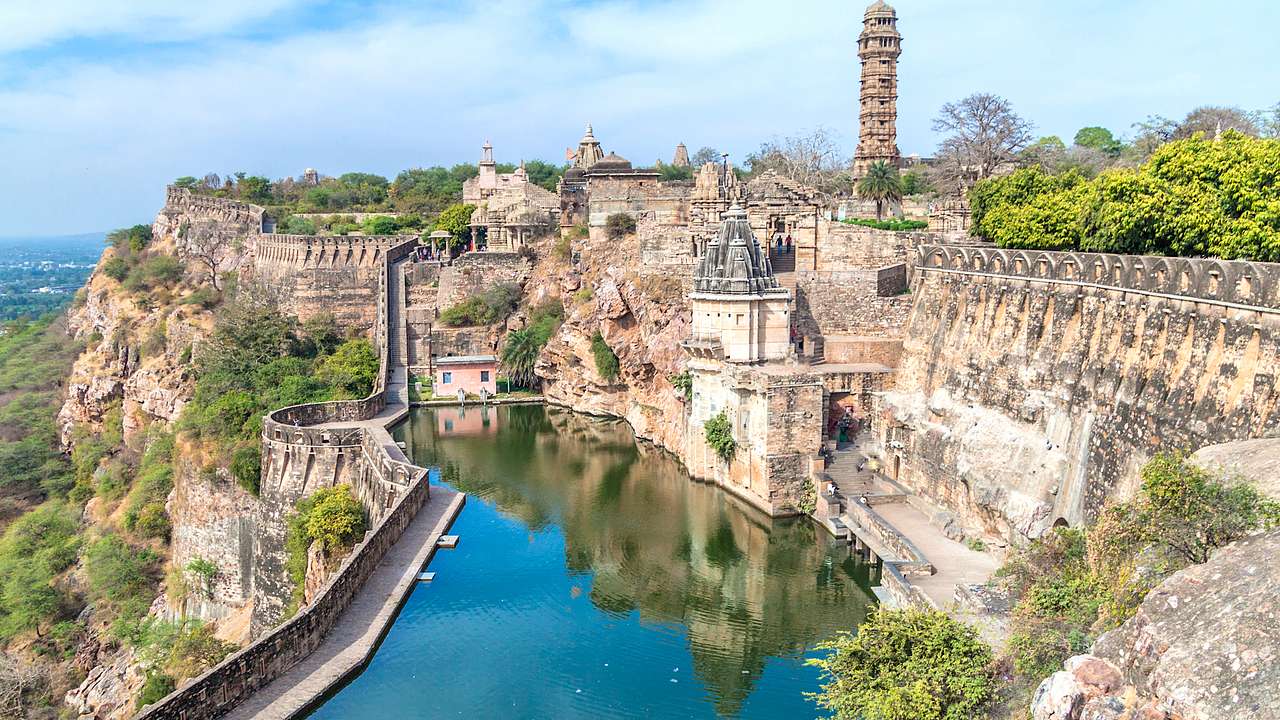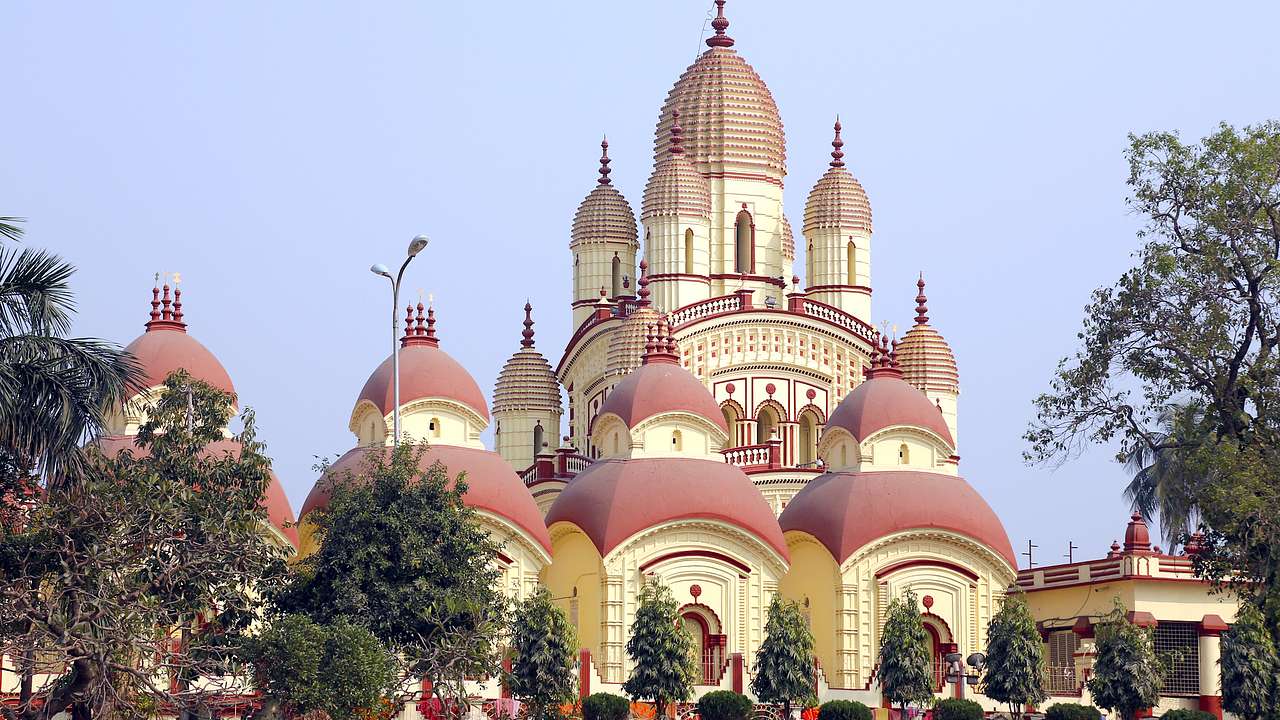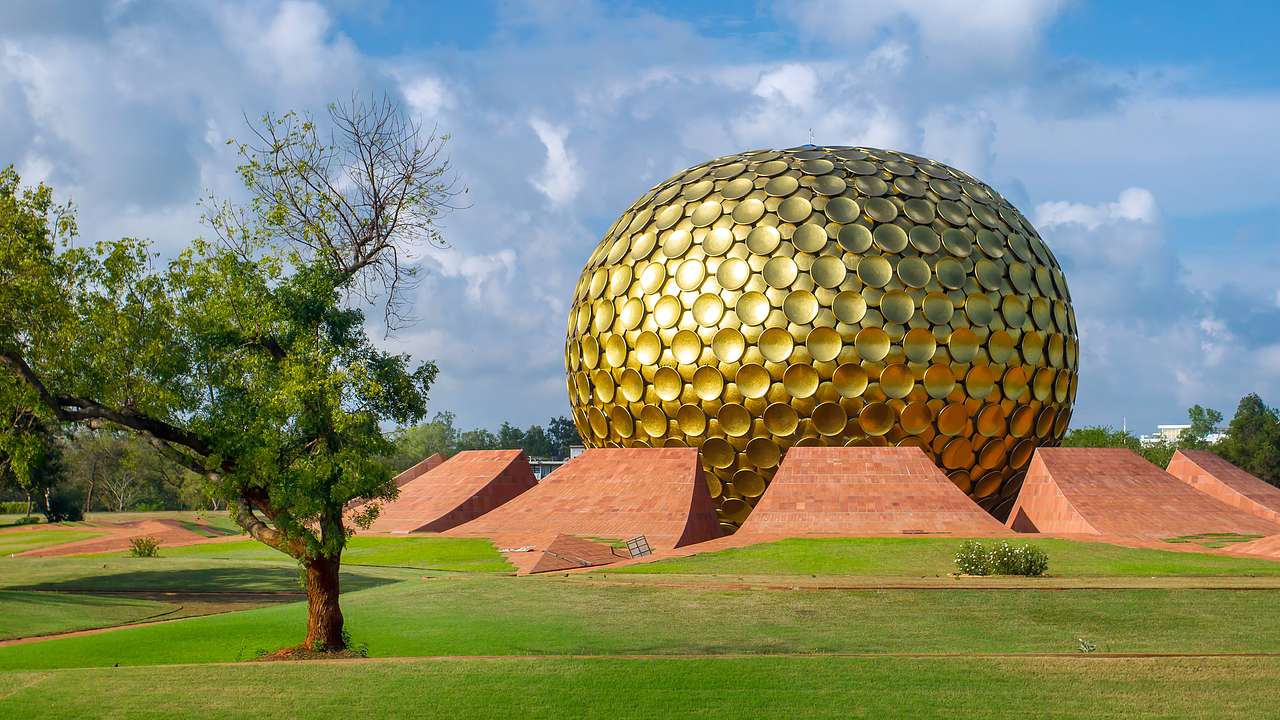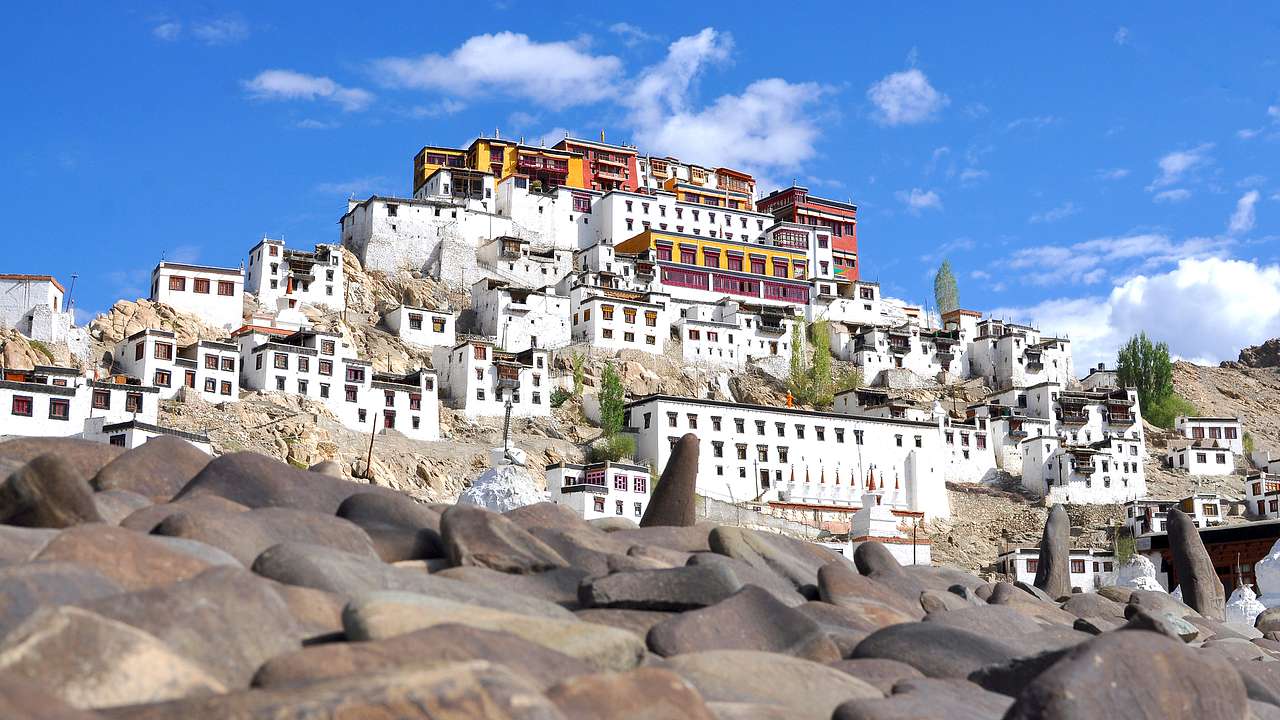Top Indian Landmarks - 51 Most Famous Landmarks in India
Destguides may receive commissions from purchases made through affiliate links in this article.
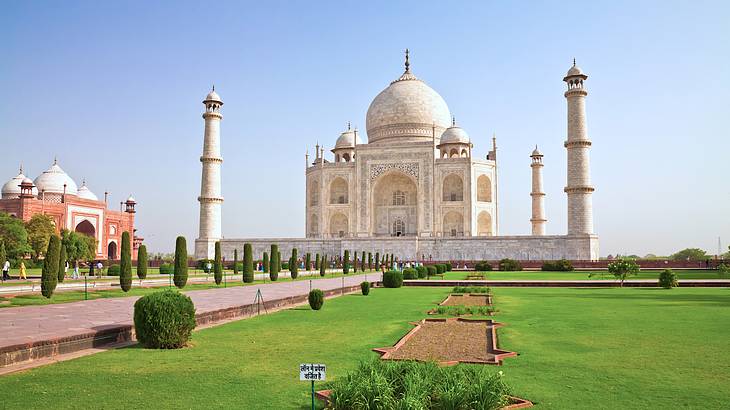
India has a rich historical past, in part due to the many previous rulers erecting numerous architectural gems all over the country. With gorgeous architecture and detailed embellishments, the India landmarks below represent the multi-faceted culture of the nation exceptionally well.
Besides being architectural marvels, most famous landmarks in India are excellent examples of the bravery, artistry, romance, mystery, and skillfulness of the people of India. They have been standing tall for hundreds of years and have witnessed the past and present of the country.
Not only this, but the landmarks serve as the muses for the current generation of architecture enthusiasts. The people of India take great pride in their fantastic landmarks that are part of their home cities as well. You can easily explore several of these landmarks as India is one of the cheapest countries to visit in Asia.
India features hundreds of noteworthy monuments located in different parts of the country, especially in the popular tourist cities of Mumbai and Delhi. As such, you should consider spending at least a few days in Mumbai and a weekend in Dehli to see as many Asian landmarks as you can.
To help you narrow down the best landmarks in India to visit, here is a comprehensive list of the top Indian landmarks that you must not miss when in the country.
Are you on your way to India last-minute?
When visiting India, book your entrance tickets and tours before you go. See the short list of top suggestions below.
☂️ Top tours and experiences in India
- Delhi - Old & New Delhi Private Sightseeing Tour (likely to sell out)
- From Delhi - Taj Mahal & Agra Fort Private Sunrise Tour (likely to sell out)
- Old Delhi - Street Food Tour (likely to sell out)
- Jaipur - Private Full-Day City Tour
- Private Mumbai Sightseeing Tour Including Dharavi Slum (rated highly)
51 Famous Indian Landmarks
- Qutub Minar, Delhi
- Swaminarayan Akshardham Temple, Delhi
- Rashtrapati Bhavan, Delhi
- Red Fort, Delhi
- Lotus Temple, New Delhi
- Humayun's Tomb, New Delhi
- India Gate, New Delhi
- Jama Masjid, New Delhi
- Hawa Mahal, Jaipur
- City Palace, Jaipur
- Jantar Mantar, Jaipur
- Amber Fort, Jaipur
- Victoria Memorial, Kolkata
- Charminar, Hyderabad
- Golconda Fort, Hyderabad
- Gateway of India, Mumbai
- Sanchi Stupa, Madhya Pradesh
- Khajuraho Group of Monuments, Madhya Pradesh
- Ajanta & Ellora Caves, Aurangabad
- Sun Temple, Konark
- Meenakshi Temple, Madurai
- Brihadeeswarar Temple, Thanjavur
- Mysore Palace, Mysore
- Kamakhya Temple, Guwahati
- Kashi Vishwanath, Varanasi
- Varanasi Ghats, Varanasi
- Nalanda University, Bihar
- Dilwara Temples, Mount Abu
- Mahabalipuram Group of Monuments, Mahabalipuram
- Agra Fort, Agra
- Taj Mahal, Agra
- Mehrangarh Fort and Museum, Jodhpur
- Golden Temple, Amritsar
- Basilica of Bom Jesus, Goa
- Fatehpur Sikri, Uttar Pradesh
- Periyar National Park, Kerala
- Swaraj Dweep, Andaman and Nicobar Islands
- City Palace, Udaipur
- Jaisalmer Fort, Jaisalmer
- The Ancient City of Hampi, Hampi
- Bara Imambara, Lucknow
- Mahabodhi Temple, Bodh Gaya
- Jai Vilas Mahal, Gwalior
- Kaziranga National Park, Kanchanjuri
- Bundi Stepwells, Bundi
- Chittorgarh Fort, Chittorgarh
- Dakshineswar Kali Temple, Kolkata
- Santa Cruz Basilica, Kochi
- Matrimandir, Auroville
- Jingmaham Living Root Bridge, Mawlynnong
- Thiksey Monastery, Thiksey
India Landmarks Video
Check out our highlights video of India landmarks.
India Landmarks Map
A map of India landmarks. Use the map to explore all of the points of interest.
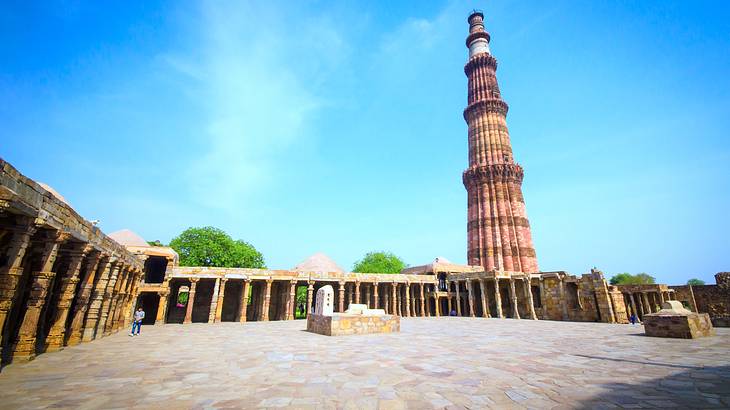
Qutub Minar, Delhi
Qutb al-Din Aibak built a 73-meter tall tower of victory, the Qutub Minar, right after the defeat of the last Hindu kingdom in Delhi. Constructed in 1193, the building comprises five different storeys, each with a separate projecting balcony.
The tower tapers from its base of 15-metres in diameter to its top of just two-and-a-half metres in diameter. The top two storeys are made of sandstone and marble, whereas the bottom three levels are made using red sandstone.
The foot of the tower houses the very first mosque built in India – the Quwwat-ul-Islam Mosque. The complex also houses a seven-metre high iron pillar. It is believed that if one can encircle the pillar with their hands, then their wish would be fulfilled.
☂️ Discover the Qutub Minar on a tour
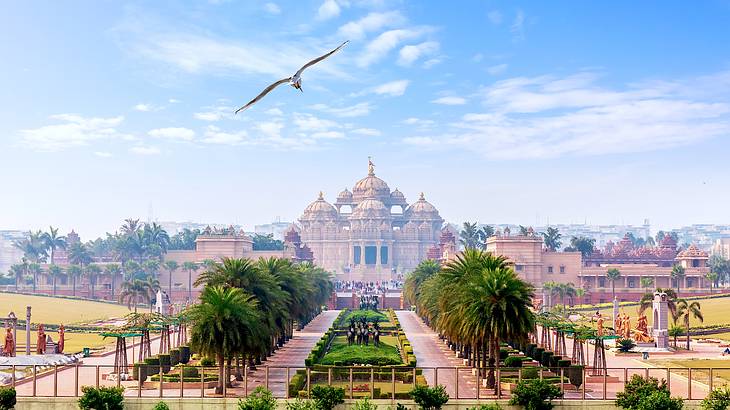
Swaminarayan Akshardham Temple, Delhi
As an epitome of Indian culture, architecture, and spirituality, the Akshardham Temple is a world-renowned spiritual and cultural complex. It is dedicated to Lord Swaminarayan and holds the record for being the largest, most comprehensive Hindu temple in the world.
Known for its stunning architecture, the Akshardham Temple comprises eight flamboyantly-carved mandapams. You can also see priceless Hindu teachings and numerous devotional traditions on the walls of the temple.
The centrepiece of the temple is a massive idol of Lord Swaminarayan. Besides this, there are idols of over 20,000 other deities, sages, and several different personalities. The temple embodies the very essence of Indian traditions, architecture and timeless spiritual thoughts.
☂️ Join a tour to see Akshardham
- Akshardham - Exhibition, Light & Water Show With Transfers (rated five stars)
- Private Full Day Old & New Delhi City Tour (a sort after tour)
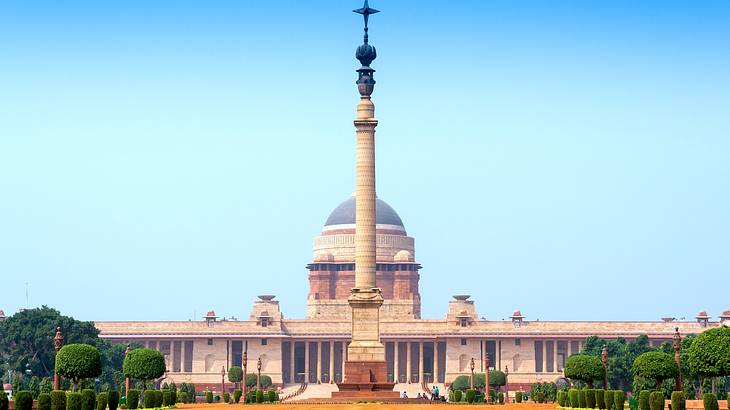
Rashtrapati Bhavan, Delhi
The Rashtrapati Bhavan, or president's house, in New Delhi serves as the official residence for the President of India. It comprises 340 rooms in the main building and is spread across a total area of five acres. It is built on an estate covering 330 acres and is the largest residential premises of any Head of the State in the world.
Conceptualised and designed by famous architects Herbert Baker and Sir Edwin Lutyens, this magnificent piece of architecture was completed in 1929. It now serves as a grandiose symbol of everything that India stands for and has marked its existence in the records for being the residence of the President of the largest democracy in the world.
The premises are divided into three distinct circuits and can only be accessed by authorised visitors during specific times of the day. The Main Building and the Central Lawn make up the first circuit, whereas the second circuit comprises the Rashtrapati Bhavan Museum and a few other buildings.
The final circuit is formed around the spectacular Mughal Gardens, which are adorned with gorgeous seasonal flowers and lush greenery. The gardens open for visitors during the Spring season for a few days, giving visitors a fantastic opportunity to marvel at the spectacular sight that is the Rashtrapati Bhavan.
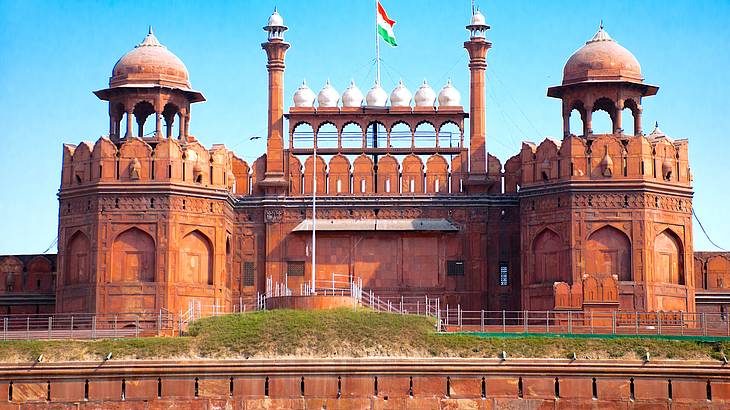
Red Fort, Delhi
The Red Fort is considered to be the most prominent historical monument in old Delhi. Constructed by Emperor Shah Jahan in 1639, it was built when the kingdom decided to shift its capital from Agra to Delhi.
During that time, it was used as the primary residence of the Mughal emperors. As the name suggests, it is made using red sandstones and exudes charm.
Besides serving as the official residence for the Mughal dynasty, it also served as a political centre and ceremonial ground for the Mughal state.
Today, the Red Fort houses various museums and is where the Prime Minister of India unfurls the national flag on Independence Day every year.
☂️ Visit the Red Fort with a tour
- Three-Day Private Luxury Golden Triangle Tour to Agra & Jaipur From New Delhi (highly sought-after)
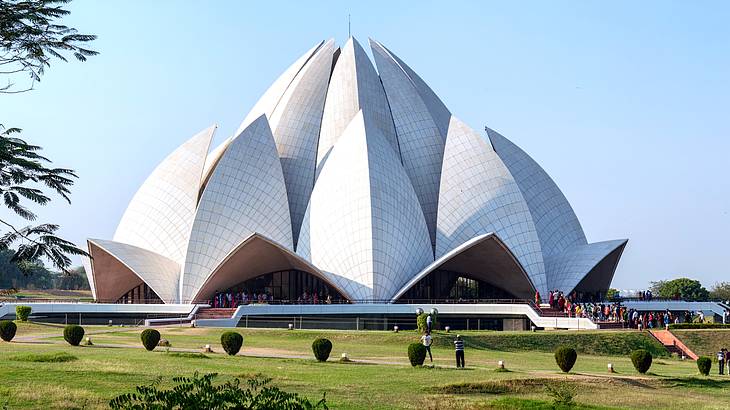
Lotus Temple, New Delhi
The Bahai Temple in New Delhi, popularly known as the Lotus Temple, is a fantastic example of modern architecture in the country. One of the top architectural marvels in India in modern times, this gorgeous white marble structure is considered to be the Taj Mahal of the 20th century.
The Lotus Temple attracts millions of people from around the world for meditation, peace, study, and prayers. Located in the capital city, this temple is unlike any other place of worship as it doesn't house an idol of a deity.
It is renowned for its beautiful flower-like architecture and the peaceful ambience it offers to visitors. It welcomes people of all faiths and is considered one of the most beautiful religious buildings in the world.
☂️ Visit the Lotus Temple with an experience
- Delhi - Old & New Delhi Private Sightseeing Tour (frequently sold out)
- Old Delhi Temples & Spiritual Sites Private Six-Hour Tour (highly rated)
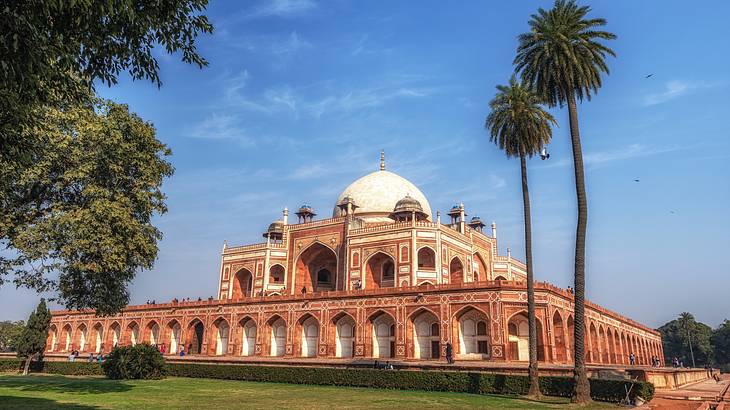
Humayun's Tomb, New Delhi
Located in New Delhi, Humayun's Tomb is the resting place of the Mughal Emperor Humayun. The tomb was built in the 1570s at the request of the emperor's wife and today is a UNESCO World Heritage site.
It is the first garden tomb in India, and even more notably, the Taj Mahal was modelled after it. The tomb is a beautiful piece of architecture that exemplifies the Mughal style. It is set within stunning formal gardens that you can wander around after viewing the tomb.
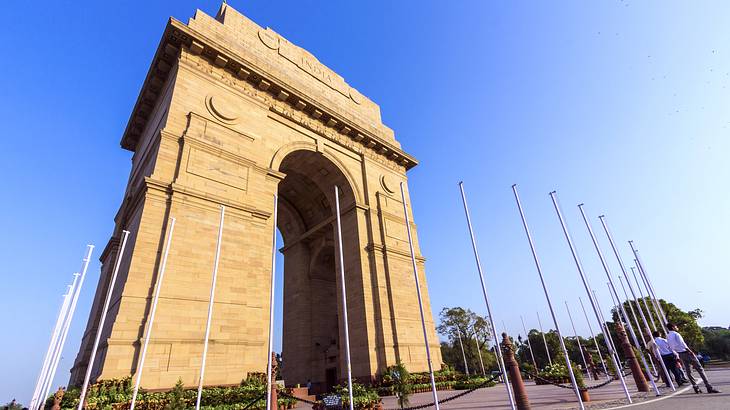
India Gate, New Delhi
India Gate, the most renowned landmark in Delhi, is a stunning archway built as a heartfelt tribute to the brave soldiers who have sacrificed their lives for the country.
Made of sandstone, the 42-metre high structure has inscriptions of the names of 13,516 brave soldiers who were martyred during the Afghan War of 1919, as well as the 90,000 soldiers who were killed in World War I.
The base of the monument is made using red Bharatpur stones, and the structure's design was inspired by the Arc de Triomphe in Paris - one of the most famous landmarks in France.
The monument is surrounded by well-maintained lawns, which serve as a popular picnic spot amongst families. The best time to visit is during the night when India Gate is bathed in soft golden lights glistening against the dark sky.
☂️ Experience the India Gate with a tour
- From Delhi Airport - Guided Layover Delhi City Tour (highly rated)
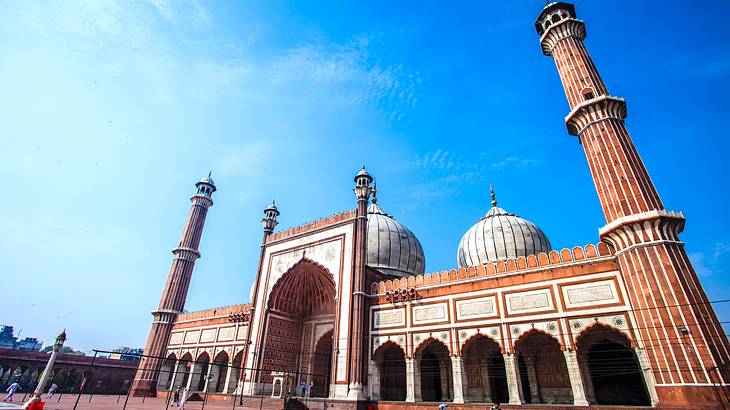
Jama Masjid, New Delhi
Jama Masjid is a renowned mosque that Emperor Shah Jahan commissioned in the mid-1600s. Shah Jahan was also the architect behind the Taj Mahal and the Red Fort.
Jama Masjid is one of the largest mosques in India and is a prime example of Mughal architecture. The intricately-decorated mosque is constructed with red sandstone and white marble and features a 325-metre courtyard.
The mosque features three impressively-designed gates and four towers as well. If you'd like, you can hire robes at the northern gate to add to the experience while visiting the mosque.
☂️ Discover the Jama Masjid on a tour
- Old Delhi - Private Tour of Chandni Chowk, Tuk Tuk & Food (often fully booked)
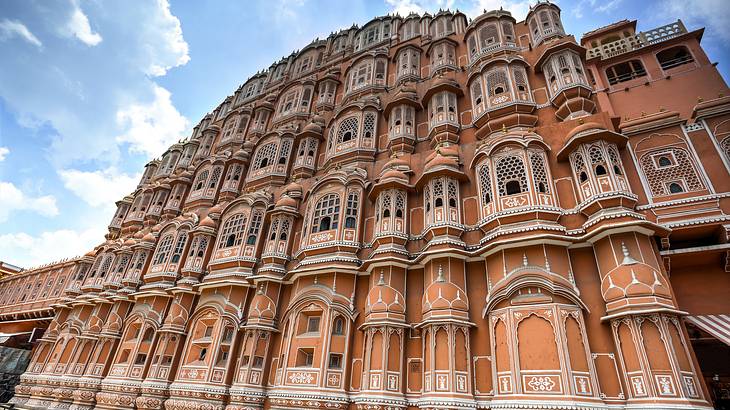
Hawa Mahal, Jaipur
Hawa Mahal, meaning the Palace of Winds, is one of the most important landmarks in Jaipur and one of the best places to visit in the city. It is a five-storey building made in a pyramidal shape and stands 15-metres tall.
Built by Maharaja Sawai Pratap Singh in 1799, it was designed to allow royal women to witness city life and street festivals while remaining out of public view.
The palace is made of red and pink sandstone in the shape of Lord Krishna's crown. It comprises 953 windows, or "jharokhas", and has a gorgeous façade that resembles a honeycomb.
Today the monument overlooks a busy city street. You can get amazing views of the City Palace, Sireh Deori Bazaar, and Jantar Mantar from the top of the palace.
☂️ Explore the Hawa Mahal on a tour
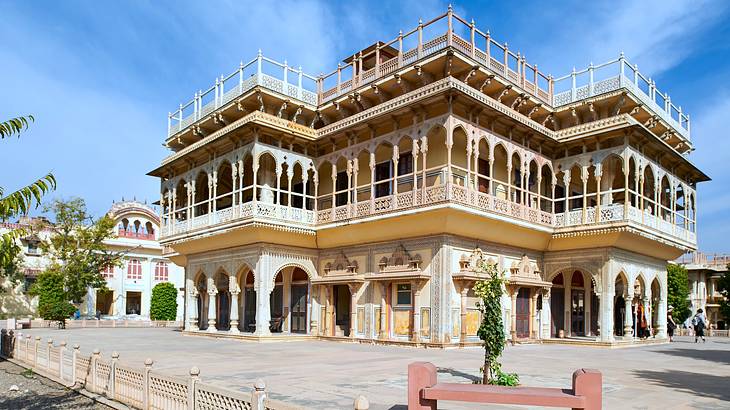
City Palace, Jaipur
Jaipur City Palace is a significant landmark in Jaipur that draws in thousands of tourists each year. The palace was built by Maharaja Sawai Jai Singh in the 1700s and epitomizes regal Indian architecture.
The palace features courtyards, ornate gates and doorways, and a host of murals, among many other exquisite details. Interestingly, India's last ruling royal family still lives in a part of the palace, although this is not accessible to the public.
You'll also find the Maharaja Sawai Man Singh II Museum here which houses exhibits on Indian fashion, in particular on clothes worn by royals. This includes pashmina shawls, silk sarees, and royal costumes.
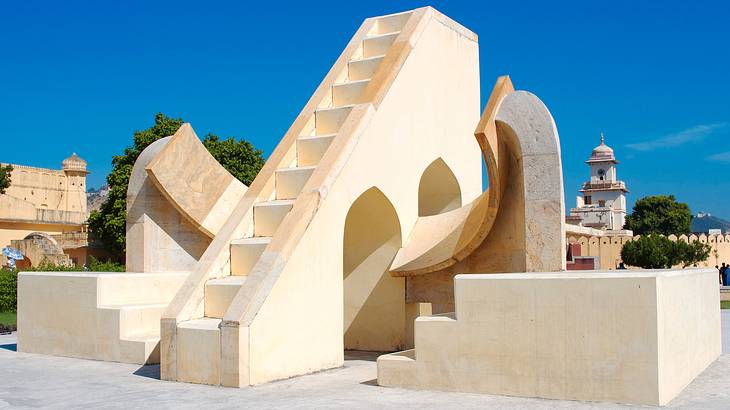
Jantar Mantar, Jaipur
Jantar Mantar is famous across the globe for being the largest stone astronomical observatory in the world. It comprises 19 instruments made up of brass and stone that are used for making various astronomical observations.
It was built in 1727-33 by Raja Sawai Jai Singh in the city of Jaipur. The intelligent placement of the instruments has allowed observers to detect the position of various planets using just their eyes.
The primary objective behind the construction of this observatory was to gather information about time and space during ancient times when there were no telescopes or other advanced instruments that we have available today.
Even today, this engineering marvel stands strong and unaffected by the effects of time and changing weather conditions.
The Jantar Mantar also houses the world's largest sundial. The main building is lit up like a firefly in the evenings, accompanied by a fascinating sound and light show.
☂️ Visit Jantar Mantar - Jaipur on a tour
- From Delhi - Jaipur Private Day-Trip by Car or Train (rated five stars)
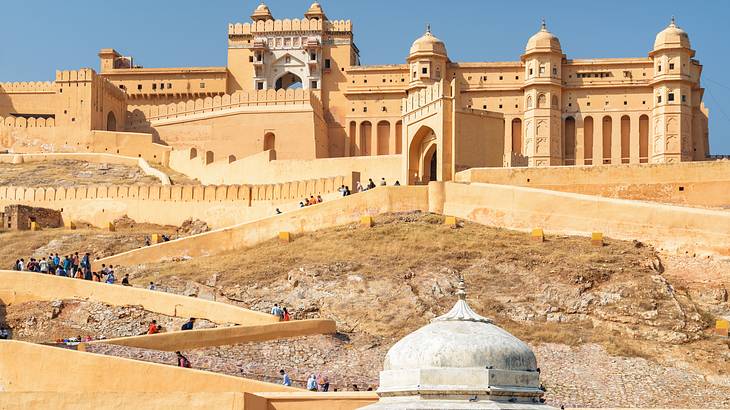
Amber Fort, Jaipur
Cradled on top of Aravalli Hills in the Pink City of Jaipur, the Amber Fort - or the Amber Fort or the Amber Palace - is unquestionably one of India's grandest and most magnificent palaces. The majestic palace has numerous serpentine staircases and maze-like passages and is an architectural masterpiece in itself.
Located at a distance of 11-kilometres from the city of Jaipur, Amber Fort was constructed with yellow and pink sandstone and is part of a huge complex. Maharaja Man Singh, one of the most important generals of Emperor Akbar, was behind the fort's construction in 1592.
Amber Fort served as the primary residence of the Rajput Rulers during their reign in the region. It overlooks the Maotha Lake in Amber, which served as the capital of the erstwhile princely state of Jaipur. It is one of the finest examples of Rajput architecture and is a visual treat for all visitors.
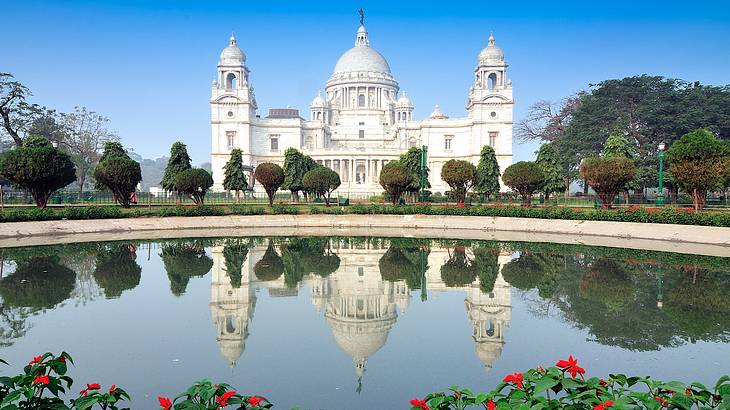
Victoria Memorial, Kolkata
Situated on the bank of River Hooghly, the Victoria Memorial is the most famous building in Kolkata. It was built to commemorate the visit of Queen Victoria and is currently an official museum operated by the Ministry of Culture.
The museum contains an extensive collection of various remnants from the colonial era. Victoria Memorial holds an important place in the beauty and history of the city of Kolkata.
Located in the heart of Kolkata in West Bengal, the beautiful opulent structure is designed in the style of one of London's famous landmarks, the Victoria Memorial.
The monument is surrounded by well-maintained lush green gardens on all sides. It is spread over 64 acres and houses numerous sculptures and statues. A 16-foot bronze statue stands tall on top of the memorial, which heightens the grandeur and appeal of the landmark to a great extent.
The sight of the landmark is breathtaking at night when it is completely illuminated. A light and sound show also takes place in the evening. Overall, it is a must-visit destination for people who wish to relive the essence of the Victorian era.
☂️ See the Victoria Memorial on a tour
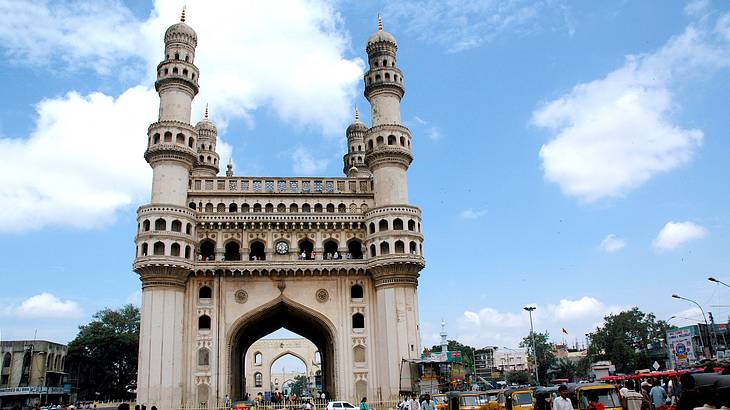
Charminar, Hyderabad
Charminar, the beating heart of Hyderabad, is an iconic city landmark built by Muhammad Quli Qutb Shah – the fifth ruler of the Qutb Shahi dynasty.
Constructed in 1591, the Charminar is a square structure made of lime mortar and granite. The design is influenced by Muslim Turkoman architecture.
Four minarets surround the structure on each of its four corners. These minarets stand at 48.7-metres tall and are believed to symbolise the first four Khalifas of Islam. Each minaret is four stories tall and divided by gorgeous rings around it.
As one of the most famous landmarks in the country, the Charminar looks incredibly stunning in the evening when it is lit up. It is considered to be a fantastic gift to the City of Nizams by its former ruler.
☂️ Join a tour to see the Charminar
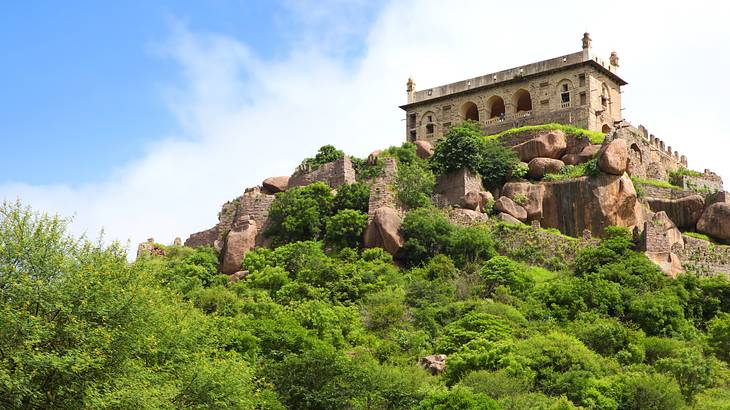
Golconda Fort, Hyderabad
Situated in the Western part of Hyderabad about nine-kilometres from Hussain Sagar Lake, the Golconda Fort is one of the most well-preserved monuments in the country. Built in the 1600s, it is renowned for being the place that housed the mighty Koh-i-Noor diamond.
It has been designed in such a way that if you clap your hands in the bottom part of the fort, your counterpart will be able to hear its echoes right at the top. In the evening, the fort comes alive with a sound and light show that highlights snippets from the fort's regal past.
Along with the Koh-i-Noor, the mines in Golconda are renowned for producing some more of the most coveted precious gems ever known to humanity, such as the Hope Diamond, Idol's Eye, and the Darya-i-Noor.
The history, legends, and architecture of the mysterious Golconda Fort add to its allure and charm, making it the most visited place in Hyderabad.
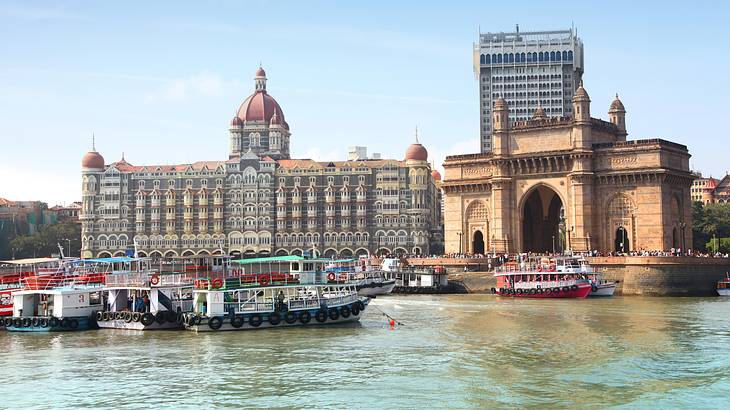
Gateway of India, Mumbai
Gateway of India is a historical monument that is inseparable from the image that comes to mind when we mention the city of Mumbai. The monument got its name as it served as the entrance point for British Viceroys when they arrived in India.
Built to commemorate the visit of King George V to India, it symbolises colonial triumph. It is an excellent example of 16th century Gujarat architecture and has touches of Islamic design as well.
It is located at the apex of Apollo Bunder and overlooks the Arabian Sea. Gateway of India has now become synonymous with Mumbai and is a favourite amongst both locals and tourists.
Additionally, the area is always bustling with street vendors, tea hawkers, balloon sellers, street-food stalls, and much more.
☂️ Experience the Gateway of India in Mumbai with a tour
- Mumbai - Full-Day Private Sightseeing Tour (frequently earns a five-star rating)
- Private Full-Day Mumbai Sightseeing Tour With Dharavi Slums
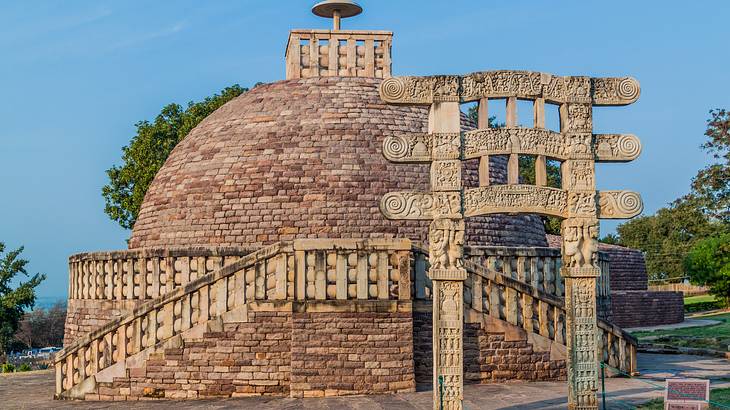
Sanchi Stupa, Madhya Pradesh
The Sanchi Stupa has been the focal point of the Buddhist faith for centuries. Built-in the third century BC by Emperor Ashoka, this grand structure sits on top of a hill and inspires awe even today.
Surrounded by smaller stupas, temples, and monasteries, the main body of the structure represents the cosmic mountain. There is a 'chhatraveli' or 'harmika' on top to hold the triple umbrella symbolising the three jewels of Buddhism – the Dharma, the Buddha, and the Sangha.
The high circular terrace is accessible to the worshippers by staircases and is designed to allow visitors to walk around the stupa. Each of the gateway entrances found at the four cardinal points encases an image of Buddha in human form. He appears to be seated under a pillared canopy.
This famous Stupa in Sanchi portrays the brilliance of Buddhist sculpture and art and attracts thousands of visitors every year, especially historians and archaeology enthusiasts.
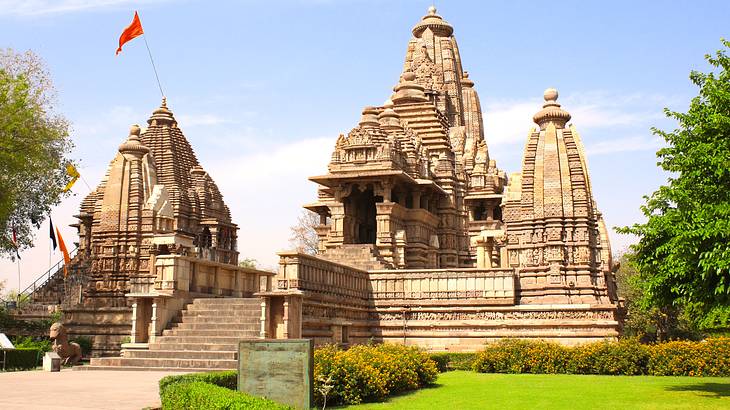
Khajuraho Group of Monuments, Madhya Pradesh
Located in the Indian state of Madhya Pradesh, the Khajuraho Group of Monuments comprises several ancient Jain and Hindu Temples, each adorned with intricate carvings and gorgeous architecture.
As one of the UNESCO World Heritage Sites in the country, these monuments are an important treasure for Indian heritage. Dating back to the 11th century, these temples have stood the test of time and are still a sight to behold for visitors from across the globe.
The primary attraction of the Khajuraho temples is the erotic sculptures carved all over the temple walls. These intricately sculpted carvings celebrate life and eroticism by depicting humans in various stages of life. They represent karmic sexual activities and represent the glory of the time when they were constructed.
The finesse with which these sculptures have been carved leave spectators in awe of the fine artistry of the time. Built by Chandela rulers during the 10th and 11th centuries, these temples attract visitors from around the world.
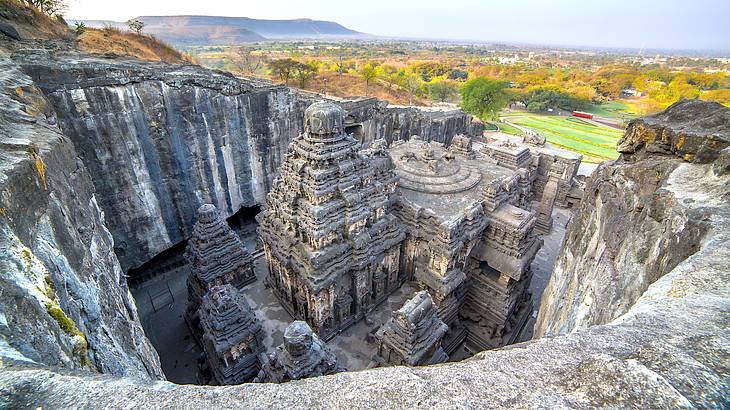
Ajanta & Ellora Caves, Aurangabad
The Ajanta and Ellora Caves are adorned with unique paintings, sculptures, and frescoes. They are considered some of the finest examples of ancient rock-cut architecture anywhere in the world.
Entirely carved into hillside rock in the middle of nowhere, these caves are an important landmark in India. There are 29 caves in Ajanta dating between the second century BC and sixth century AD. Ellora comprises 34 caves dating between the sixth century AD and the 11th century AD.
The caves at Ajanta are dedicated to the Buddhist faith, whereas the ones at Ellora are a mix of Hindu, Jain, and Buddhist. The most striking fact about these caves is that they have been crafted entirely by hand, using just a chisel and hammer.
Cave 16 at Ellora, which houses the beautiful Kailasa Temple, is the most renowned attraction. Dedicated to Lord Shiva, the temple signifies his sacred abode Mount Kailasha and is spread over twice the area of the Parthenon in Athens.
The life-size elephant sculptures present here are another attraction that draws visitors from across the world.
☂️ Experience the Ellora Caves with a tour
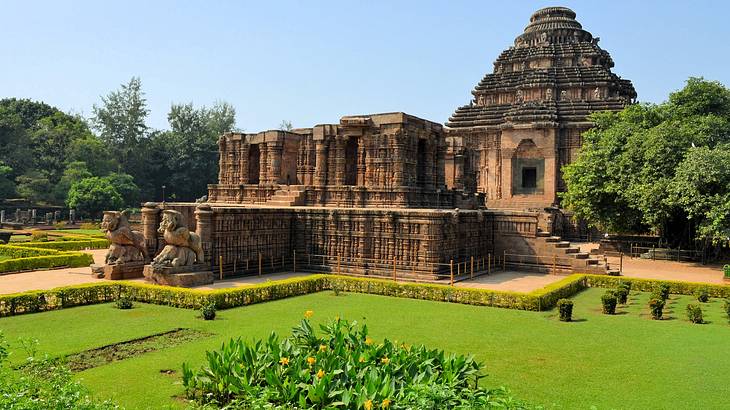
Sun Temple, Konark
The Sun Temple at Konark is a gorgeous piece of architecture built in the shape of a colossal chariot with Khondalite rock wheels, walls, and pillars. Dating back to the 13th century AD, the temple was built on the bank of the river Chandrabhaga and is an excellent representation of Kalinga architecture.
Built by King Narasimhadeva I of the Eastern Ganga Dynasty, it has been meticulously designed so that the first rays of the sun strike the principal entrance of the temple each day.
This is fitting as the temple is dedicated to the Sun God! The design itself features intricate stone carvings that cover the entire structure. The Sun Temple is one of the most popular tourist destinations in the state of Orissa and is well worth a visit.
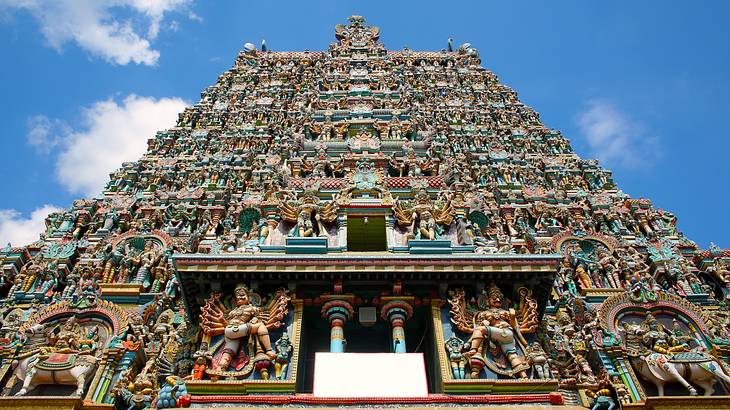
Meenakshi Temple, Madurai
Meenakshi Temple is one of the most renowned temples in India, known primarily for its gorgeous architecture. The temple is located on the bank of River Vaigai in the city of Madurai and is undoubtedly the most prominent edifice in Southern India. Hundreds of devotees and architecture lovers alike visit the temple each year.
It was built during the Nayak rule, which is considered the golden period for art and architecture in Madurai. The temple is dedicated to goddess Meenakshi, Lord Shiva's consort and the shrine comprises 14 gopurams, which house over 33,000 sculptures.
The temple also houses 985 sculpted pillars that celebrate the ethereal beauty of goddess Meenakshi, as well as scenes of her wedding with Lord Shiva. It is an important place of pilgrimage in Hinduism, popular with both international and Indian tourists.
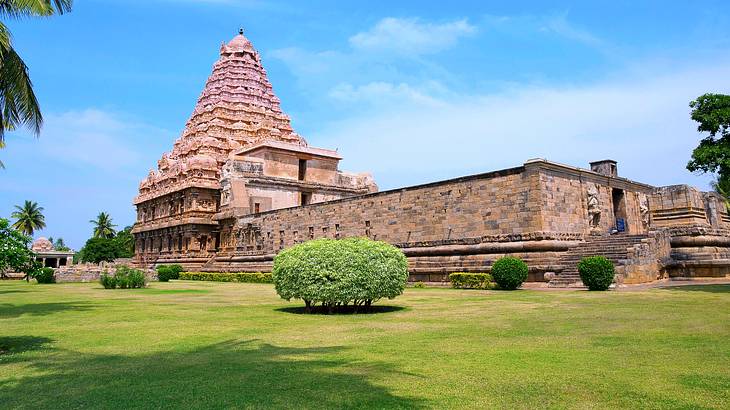
Brihadeeswarar Temple, Thanjavur
Brihadeeshwara Temple, located in Thanjavur in the Indian state of Tamil Nadu, is a Hindu Temple dedicated to Lord Shiva. Also called Periya Kovil and Rajarajesvaram, it is one of the biggest temples in the country and is one of the finest examples of Dravidian architecture.
Constructed by king Raja Raja Chola I in 1010 AD, the temple is over 1000 years old and is another of India's UNESCO World Heritage Sites.
The temple tower (vimanam) stands at 216-feet high, making it the tallest in the world. The apex of the 'Kumbam' weighs around 80-tons and is carved out of a single rock.
The temple houses a massive statue of Nandi (sacred bull) as well, which has been carved from a single rock measuring 16-feet in length and 13-feet in height.
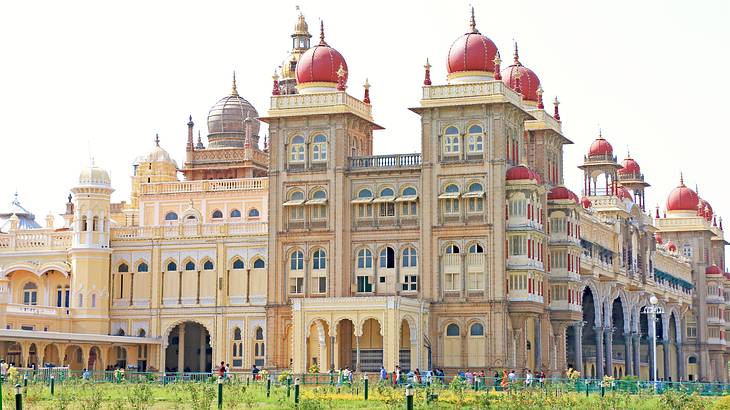
Mysore Palace, Mysore
Mysore Palace is the most famous landmark in the city of Mysore. It served as the seat and residence of the Wodeyards, the royal family of Mysore, who reigned over the city from 1399 to 1950.
The aboriginal palace was made of wood, but it got burned down during a wedding celebration in 1897. It was later rebuilt in 1912 in Indo-Saracenic style. It is now a three-storey structure that incorporates Hindu, Gothic, Muslim, and Rajput architectural styles.
After independence, the palace was turned into a museum housing numerous priceless royal souvenirs, paintings, jewellery, costume, and other objects. It also serves as the venue for the Mysuru Dasara festival and boasts several gorgeous mirrors and stained glass décor.
☂️ Explore the Mysore Palace on a tour
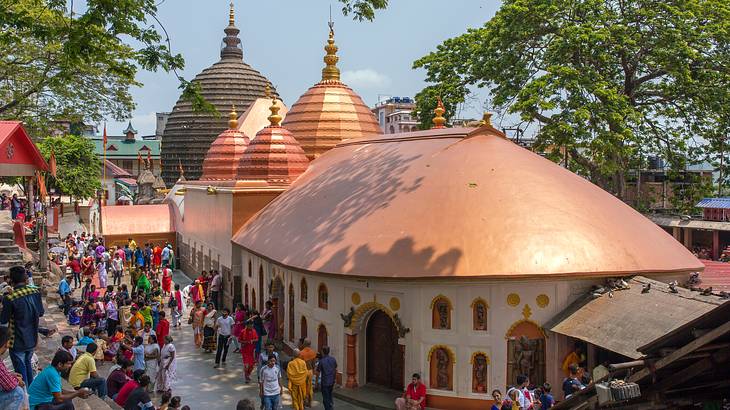
Kamakhya Temple, Guwahati
Located atop the Nilachal Hill in Guwahati, Assam, the Kamakhya Temple is considered one of the most revered shrines in the country dedicated to Goddess Shakti. It celebrates the power of women to give birth and is exceptionally auspicious for people who follow the Tantrik sect.
According to Hindu scriptures, there are four major Shakti Peethas (Temples with exceptional divine powers), and the Kamakhya Temple is one of them. Built around the eighth century and reconstructed several times until the 17th century, the temple is a spectacle for its visitors.
Kamakhya Devi is renowned as the bleeding goddess. It is believed that the vagina and the mythical womb of Goddess Shakti are installed in the sanctum or 'Garvagriha' of this temple.
It is also said that during June, the goddess menstruates and during that time, the water of the Brahmaputra River flowing near the temple turns red.
The temple remains closed to visitors for three days during this time, and the holy water is distributed amongst the devotees. It is the venue for the famous Ambubachi Festival during June as well.
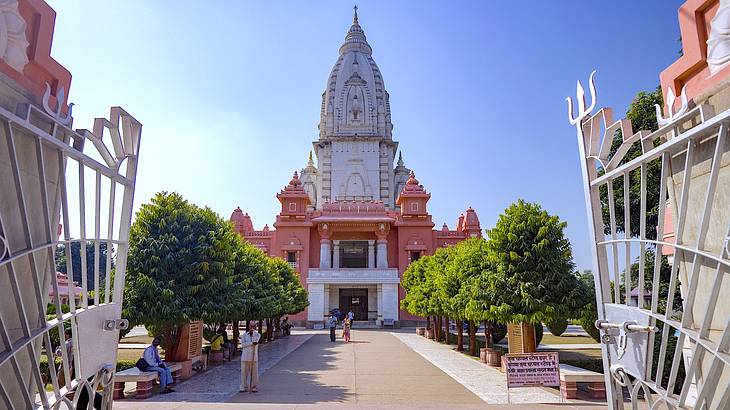
Kashi Vishwanath, Varanasi
Situated on the bank of the River Ganges, Varanasi is said to be the oldest surviving city in the world. The Kashi Vishwanath Temple is located in the heart of the city of Varanasi.
The temple at Kashi Vishwanath is one of the 12 Jyotirlingas, or temples, dedicated to the worship of Lord Shiva, who is fondly referred to as the 'Ruler of the Universe'. This is why the cultural capital of India, Varanasi, is also called the 'City of Lord Shiva'.
The temple tower is adorned with 800-kilograms of gold plating. It is decorated with gorgeous, intricate carvings that impart a divine presence to the façade as well.
Millions of devotees visit the temple every year to seek spiritual peace and get salvation from the world's entanglements. The temple has also been visited by saints such as Ramakrishna Paramahamsa, Goswami Tulsidas, and Adi Shankaracharya, among many other spiritual personalities.
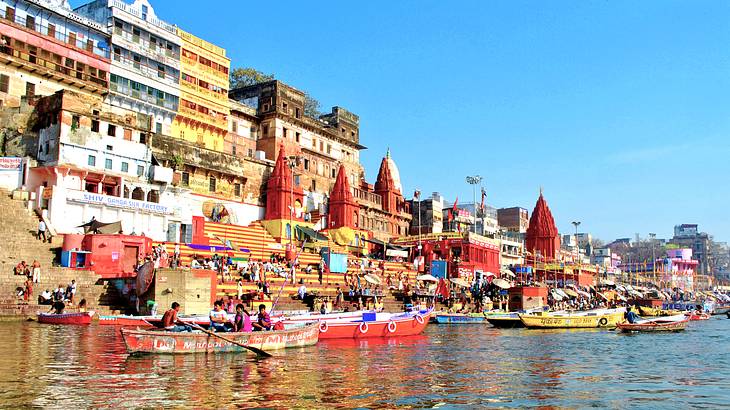
Varanasi Ghats, Varanasi
The Ghats of Varanasi are riverside steps leading to the River Ganges. Varanasi has 88 ghats, and these bustling and vibrant areas are filled with people day and night. Many individuals visit to partake in bathing ceremonies and to pray.
Interestingly, there are also daily cremations on the Manikarnika and Harishchandra Ghats. It's believed that those cremated on the Ganges will reach nirvana and end the cycle of reincarnation. Watching these burial ceremonies is a truly unique experience!
☂️ Join a tour to see the Ghats of Varanasi
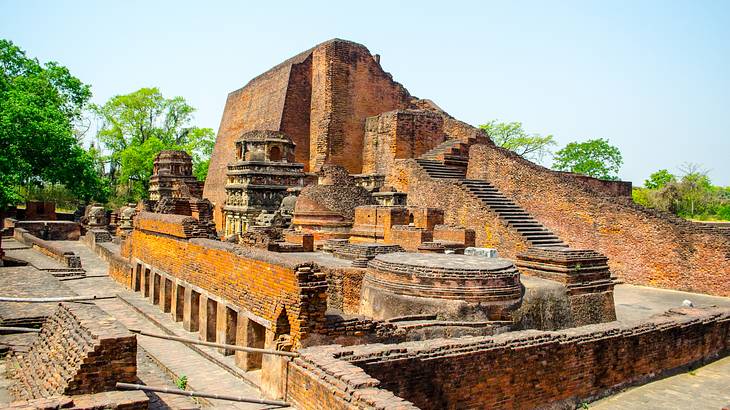
Nalanda University, Bihar
Nalanda is one of the most ancient learning sites in the world. Built in the fifth century AD, Nalanda is renowned for being the very first university in the world. Located about 62-kilometres from Bodh Gaya, it was visited by Buddha several times but reached fame between the fifth and 12th centuries AD.
It was also where the famous Chinese traveller Hiuen Tsang stayed during the seventh century. While at the university, he left a detailed description that helped form a reliable education system.
Even though Nalanda is presently in ruins, the complex is still an architectural masterpiece and is flocked to by thousands of tourists every year. The complex houses numerous 'chaiyas' or temples in the west and 'viharas' or monasteries in the east.
There is also a museum displaying collections of original Buddhist stupas, Buddhist and Hindu bronzes, terracotta jars, coins, and much more. Nalanda is considered to be an important centre for Hinduism, Sufism, and Jainism as well.
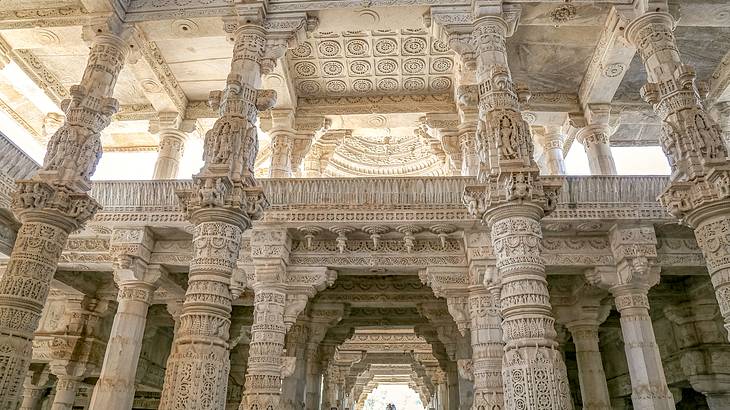
Dilwara Temples, Mount Abu
Dilwara Temples are considered to be some of the finest Jain temples in the country. Celebrated throughout the world for their opulent use of marble and intricate carving work, the temples are often regarded as architecturally superior to the Taj Mahal.
Though they appear to be quite basic from their exteriors, the interiors of the temples showcase extraordinary human craftsmanship. Built between the 11th and 13th centuries AD, the temples are set amidst the beautiful lush green hills of the Aravalli Range.
The Dilwara Temples comprise five beguiling temples dedicated to Lord Rishabhdeo, Adinath, Neminath, Parshvanath and Mahavir Swami.
All the temples have their own Rang Mandap, Garbhagraha, and the innermost sanctum where the Lord resides. The heavily decorated ceilings and gorgeous structures leave all visitors spellbound with their austerity and simplicity.
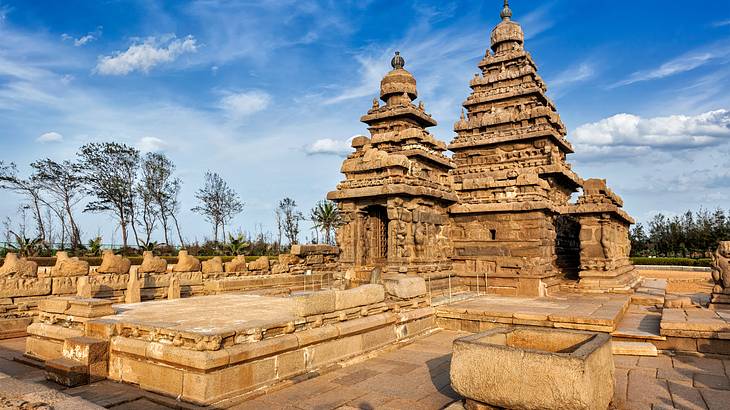
Mahabalipuram Group of Monuments, Mahabalipuram
Known for their huge rock-cut caves and intricately carved temples, the monuments in Mahabalipuram are extremely popular with tourists from across the globe. Located on the Coromandel Coast along the Bay of Bengal, they are believed to be the abode of famous demon king Mahabali.
The alluring atmosphere, the serene ambience and the impressive setting of the monuments, along with the fact that there are white sandy beaches everywhere, make the place worth visiting.
Mahabalipuram is home to some of the top sights in India, such as the Five Rathas, Shore Temple, beach resorts in Sadras and Kovalam, and the Crocodile Bank, which houses numerous exquisite species of alligators and crocodiles.
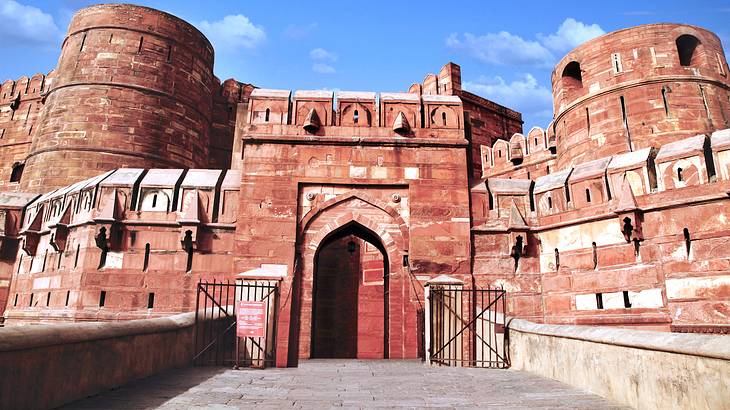
Agra Fort, Agra
Agra Fort is located in Agra near the Taj Mahal, to which it is a sister monument. The fort served as the primary residence of the Mughal Dynasty up until the mid-1600s and is now open for the public to explore.
The complex features beautiful red sandstone buildings and resembles more of a walled city than a singular fort. Among the buildings in the complex, you'll discover two mosques and multiple palaces, including Jahangir Palace, which was constructed by Shah Jahan.
☂️ Visit Agra Fort with an experience
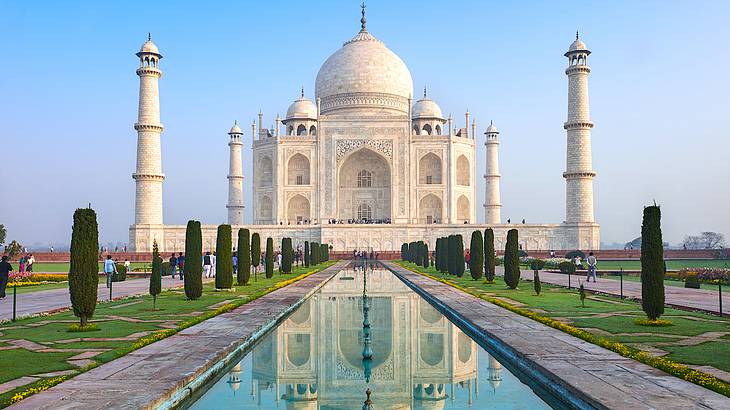
Taj Mahal, Agra
The first thing that comes to a visitor's mind when they think about India is, undoubtedly, the Taj Mahal. Located in the city of Agra, it is an architectural masterpiece made completely with white marble.
The palace was constructed by Shah Jahan for his wife, Mumtaz Mahal, in 1648. One of the Seven Wonders of the World, the Taj Mahal is definitely on the bucket list of must-visit places for numerous people from around the world.
Even today, the Taj Mahal continues to be one of the most important monuments in the country. Additionally, the heart-touching story behind the construction of this gorgeous monument incites the urge to visit this symbol of undying love even further.
☂️ Visit the Taj Mahal with an excursion
- Agra - Taj Mahal & Mausoleum Tour With Skip-the-Line Entry (widely acclaimed)
- Taj Mahal Day Tour From Delhi by Superfast Train - TOP RATED TOUR (extremely popular)
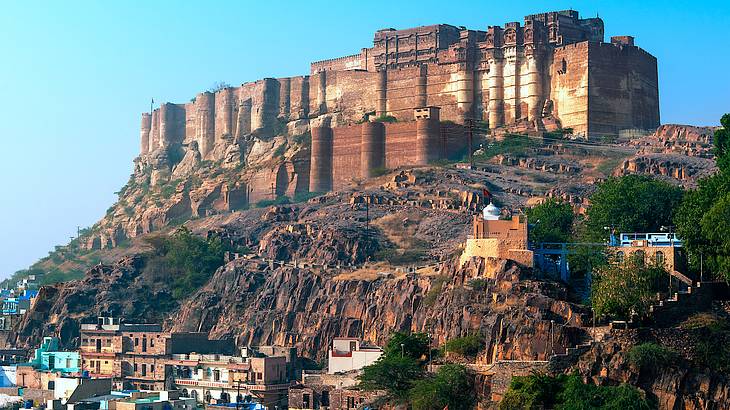
Mehrangarh Fort and Museum, Jodhpur
Located in the Thar Desert in Jodhpur, Rajasthan, Mehrangarh Fort is one of the largest forts in India. It was built in the mid-1400s and has previously been used as a fort and palace.
Today, however, Mehrangarh Fort is used as a museum. The museum displays artefacts, textiles, paintings, and weapons from the Mughal era. You will also be able to follow two trails that take you around the museum and grounds.
Additionally, the fort overlooks the city of Jodhpur, the skyline of which is stunning and complete with iconic blue buildings.
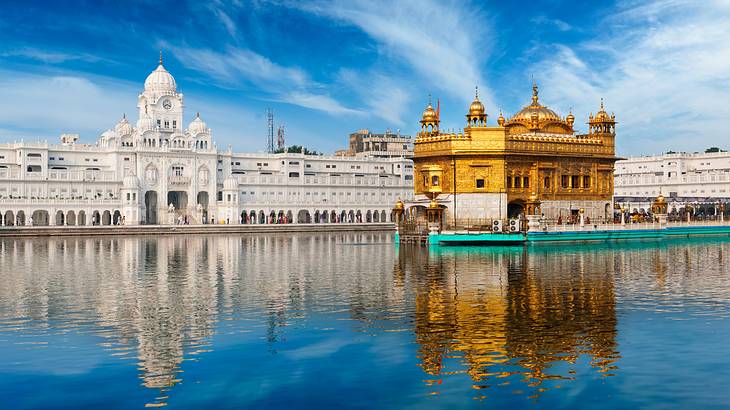
Golden Temple, Amritsar
The Golden Temple, the most renowned and admired gurudwara in India, is considered the heart of Amritsar. Also known as Sri Harmandir Sahib, it is the epitome of harmony, equality, and glory.
The Golden Temple played a significant role in the culture and history of Punjab, due to which it has become the holiest pilgrimage site for people following the Sikh faith.
When you reach the Golden Temple, the first thing you notice is the perfect blend of gorgeous architecture, captivating peace, and warm hospitality. Millions of devotees visit here from all corners of the world to seek spiritual solace and blessings.
It is one of the five Akal Takht Sabib, which are the five Takhts of the Sikh community. The complex houses a holy pond called the Amrit Sarovar as well, where devotees can take a dip and wash away their sins.
The sparkling golden walls of the temple, coupled with the intricate designs, make the structure magnificent to look at. Surrounded by massive pools of holy water on all sides, it appears to be floating on top of the water.
☂️ Experience the Sri Harmandir Sahib with a tour
- Amritsar City Tour Including Wagah Border Ceremony (top-rated tour)
- Amritsar Excursion
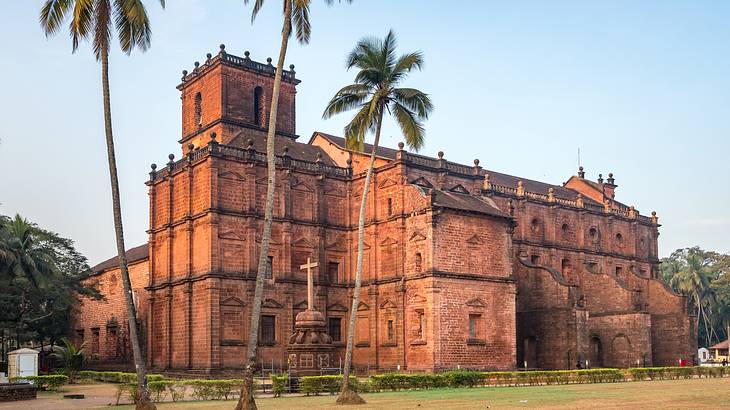
Basilica of Bom Jesus, Goa
Located in Goa, the Basilica of Bom Jesus is a unique church and an exemplary example of baroque architecture. The Basilica was built in 1594 and consecrated in 1605 when Christianity began to establish its roots in India.
It is the oldest church in Goa and houses the remains of St. Francis Xavier. The Basilica holds immense religious and cultural significance and is now a UNESCO World Heritage Site.
The church is the only one in the city that has not been plastered on the outside. The Basilica's floor is especially beautiful, containing a marble mosaic complete with precious stones, which gives it a brilliant appearance.
The church's interior is additionally adorned with a screen from the floor to ceiling containing images of St. Ignatius Loyola protecting infant Jesus.
☂️ Visit the Basilica of Bom Jesus on a tour
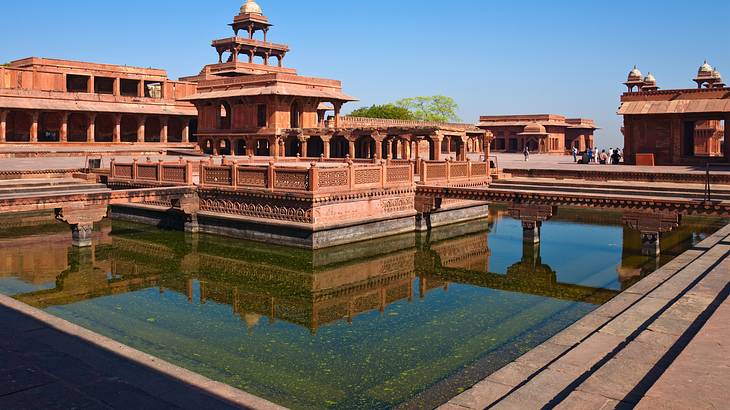
Fatehpur Sikri, Uttar Pradesh
Fatehpur Sikri is a small town to the west of Agra. It is a top attraction in India to plan a day trip to and is a UNESCO World Heritage Centre.
Fatehpur Sikri is the former capital of the Mughal empire, with the construction of the city beginning during the 16th century. Today, Fatehpur Sikri is a picturesque town filled with India's trademark red sandstone buildings.
While you can explore the town alone, it is highly recommended that you get a guide to show you around the city and provide information on the area's history.
☂️ Join a tour to see Fatehpur Sikri
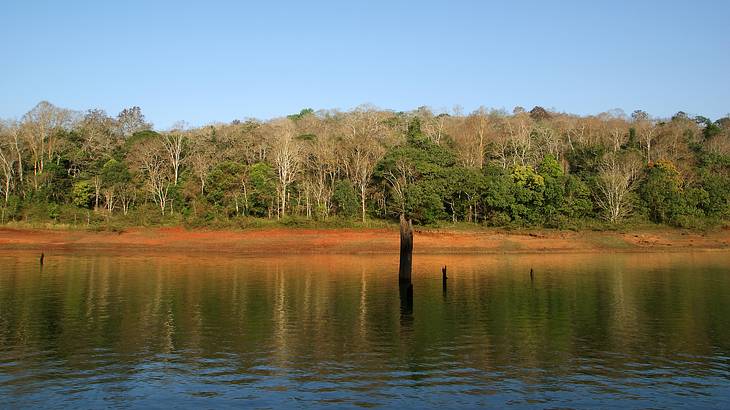
Periyar National Park, Kerala
Periyar National Park, or Periyar Tiger Reserve, is a wildlife sanctuary in the Western Ghats area of Kerala. It is one of the best national parks to visit in India.
The sanctuary is home to many Indian animals. This includes tigers and elephants as well as various species of deer, lion-tailed macaque, and much more. You are likely to spot birds and reptiles too.
You can additionally take a boat tour on which you can spot a host of these animals. The park is also close to the town of Kumily and the Cardamom Hills, which are worth exploring too if you have the time.
Swaraj Dweep, Andaman and Nicobar Islands
Swaraj Dweep (sometimes referred to as Havelock Island) is a stunning island that is one of the top attractions in India. The island is part of Ritchie's Archipelago that is found within India's Andaman Islands.
The island features turquoise ocean and white sandy beaches surrounded by lush forests. It is an excellent escape from the bustling crowds found at other popular attractions in India.
Along with being the perfect place to relax on the beach, it is a great spot for divers with many coral reefs in the area and high visibility within the clear water.
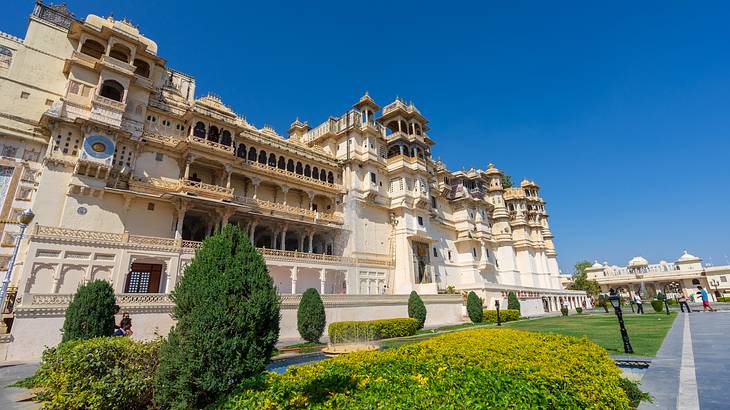
City Palace, Udaipur
Unquestionably the most prominent building in Udaipur, the City Palace, is an excellent example of Rajput architecture. Built over 400 years ago, the palace is located on the bank of Lake Pichola and offers gorgeous views of the city.
The City Palace is actually a complex housing 11 other palaces inside it. Located in the middle of the Aravalli Range, the vistas that you get from the palace itself have to be seen to be believed.
It is the largest royal complex in the state of Rajasthan and was built by Maharana Udai Singh in 1559. It served as the official residence for the Maharanas and the place from where they administered their kingdom.
The palace is an excellent masterpiece of architecture of the time and has numerous gateways, halls, and a museum. It is a mélange of rich Mughal, Medieval, and Rajasthani as well as Chinese and European styles.
The palace is constructed using granite and marble and is the property of Mewar's royal family. The extensive use of mirrors and the intricate marble-work sets the City Palace significantly apart from other buildings and palaces in India.
☂️ Visit the City Palace on a tour
- Private Full-Day Sightseeing Tour by Tuk-Tuk (widely acclaimed)
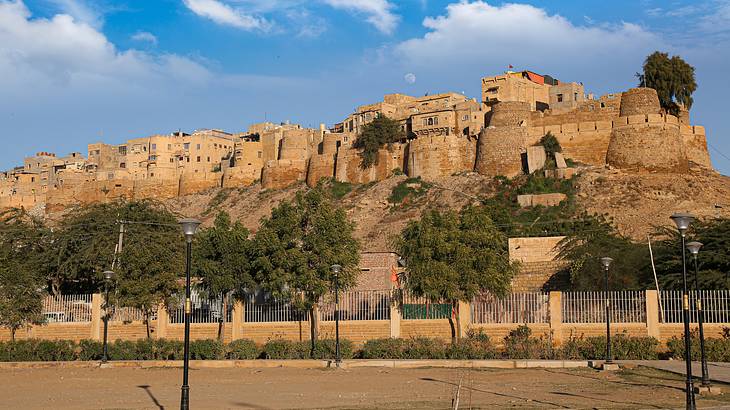
Jaisalmer Fort, Jaisalmer
Jaisalmer Fort, in Jaisalmer, is an 800-year-old fort. It's known as one of the world's last remaining living forts, with a quarter of the city's residents living within the fort walls. It's also the second oldest fort in Rajasthan and a UNESCO World Heritage site.
The city is also called the Golden City because its sandy-coloured exterior blends with the surrounding golden desert. The fort is a prime example of ancient architecture and features many unique details and ornate carvings.
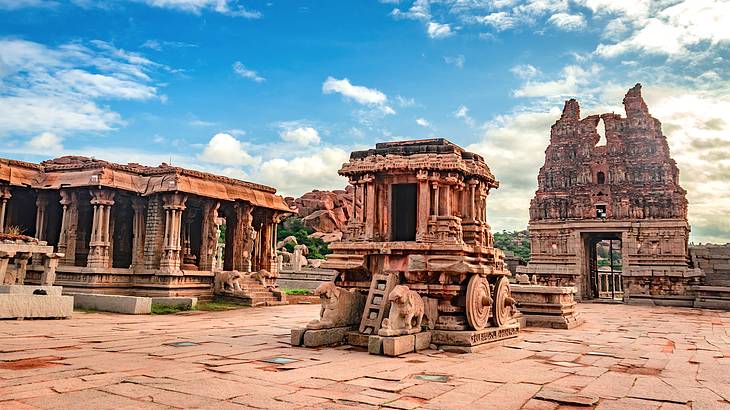
The Ancient City of Hampi, Hampi
Hampi is an ancient city found in the southern state of Karnataka. Hampi is home to many temples and monument ruins from the medieval kingdom of Vijaynagar.
Often referred to as the "World's Largest Open-Air Museum," visitors can explore over 500 ruins, including Virupaksha Temple and the Stone Chariot.
Along with exploring the ruins and the city on foot, this is an excellent rock-climbing location. Many adventure travellers flock to Hampi to climb its boulder-clad landscape.
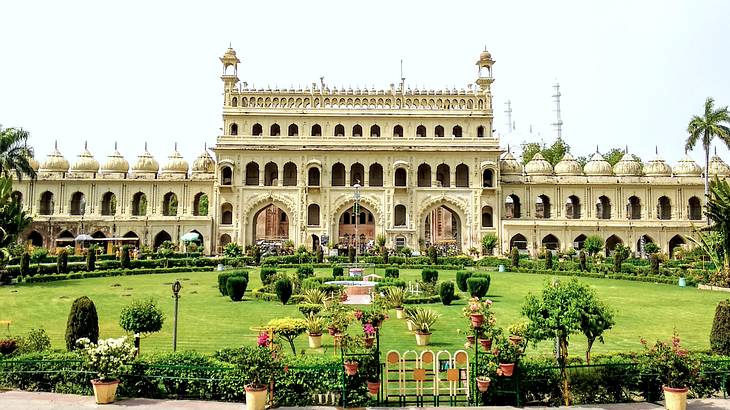
Bara Imambara, Lucknow
Bara Imambara is another of the famous buildings of India. This complex was constructed in 1784 by Asaf-ud-Daula and is an incredible piece of Mughal architecture.
The building features a mosque, a maze (Bhul-bhulaiya), and many other stately rooms. The maze is particularly well-known as it's believed there are 1,024 ways to enter it but only two ways out!
Another interesting feature is the tomb of Asaf-ud-Daula, said to be the largest vaulted chamber in the world.
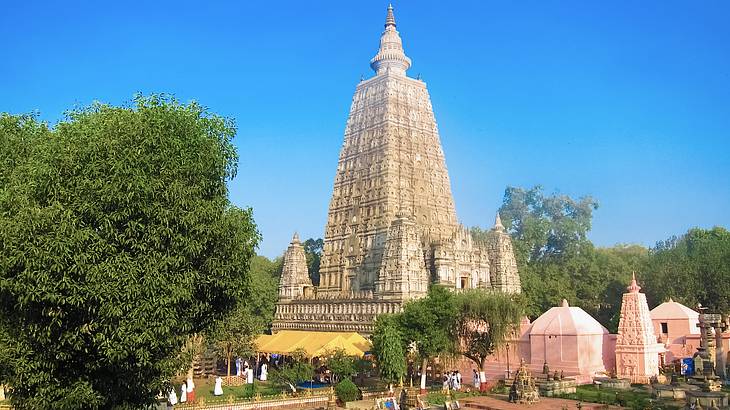
Mahabodhi Temple, Bodh Gaya
The Mahabodhi Temple is one of the four major holy sites related to the life of Lord Buddha. Built in the third century B.C. by Emperor Ashoka, it is one of the earliest Buddhist temples in the world.
Spread over a vast area of almost five hectares, the temple houses a colossal statue of Lord Buddha settled in the earth-witness mudra. The courtyard is adorned with numerous stupas, some of which are hundreds of years old.
The complex also houses the famous Bodhi Tree, which is believed to be where Gautam Buddha attained enlightenment.
Fondly known as the 'Great Awakening Temple', the Mahabodhi Temple holds an important place in India's religious history. Here, Lord Buddha is thought to have been the ninth and the most recent incarnation of Lord Vishnu to descend on the earth.
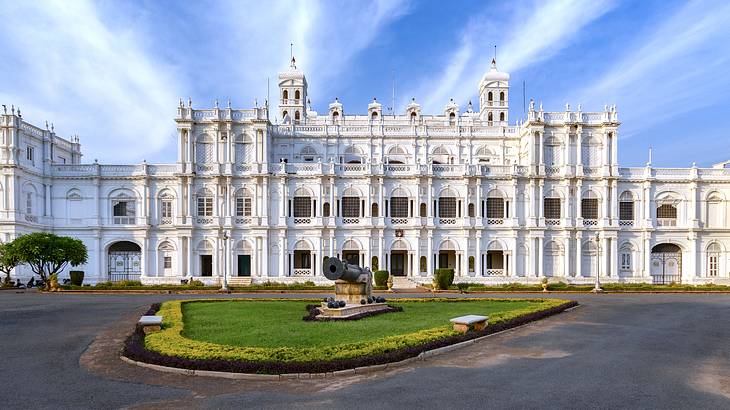
Jai Vilas Mahal, Gwalior
Built in the 1800s, Jai Vilas Mahal is a majestic stately home featuring 400 rooms and covering an area of 1,240,771 square feet. Despite being home to residents, some rooms are open to the public and act as a museum.
The design of the building takes its inspiration from European architecture, especially Italian architecture. Inside, you'll get to appreciate crystal chandeliers, Persian carpets, antique furniture, and many other opulent details.

Kaziranga National Park, Kanchanjuri
Kaziranga National Park is a natural Indian landmark. The park is a protected area home to an array of wildlife, much of which is endangered.
Despite being a protected area, visitors are allowed. Those that explore the park may see one-horned rhinos, Asian elephants, Bengal tigers, water buffalo, and much more. If visiting Kaziranga National Park, you must do so with a guide.
Bundi Stepwells, Bundi
The Bundi Stepwells are collections of flights of steps found in Bundi. There are 50 different stepwells, and the city has gained the nickname "the City of Stepwells."
These landmarks are interesting because they're sets of steps descending into the earth. Visitors can climb the subterranean stairs at many locations and can also look from the top level.
Looking down on rows of descending stone steps makes for a unique view and a great photo-op!

Chittorgarh Fort, Chittorgarh
Chittorgarh Fort, or Chittor Fort, is India's largest fort. It covers 2.8 kilometres and reaches heights of 1,075 metres. The majestic fort sits atop a 180 metres tall hill and dates back to the 7th century.
The fort itself is stunning, with intricate details covering it and multiple towers and temples. The fort was somewhat destroyed by Mughals in the 16th century, leaving parts of the fort in ruins. However, it's still an incredible piece of architecture to explore!
☂️ Visit the Chittorgarh Fort with an experience
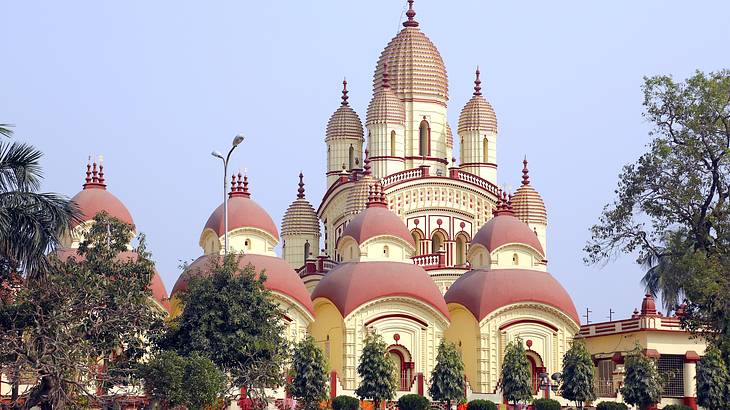
Dakshineswar Kali Temple, Kolkata
Dakshineswar Kali is another of India's famous landmarks that is a temple. This temple was founded in 1855, and even today, it acts as one of Kolkata's most sacred places.
Along with being an important religious landmark, the design of the temple is also breathtaking. The temple features regal red and gold accents and many tall roofs. Being surrounded by water and lush greenery adds to the magnificence of the Dakshineswar Kali Temple.
Santa Cruz Basilica, Kochi
Santa Cruz Basilica is a European-style building that was constructed by the Portuguese in the 16th century. It was officially declared a basilica in 1994.
This landmark is notable within India as it is European in style and pays homage to Catholicism instead of Hinduism. Like many catholic buildings, the basilica's interior is decorated with religious statues and paintings.
Religious services are actively held in the basilica. It's also open to tourists wanting to explore this piece of European architecture in India.
☂️ Experience the Santa Cruz Cathedral Basilica Fort Kochi with a tour
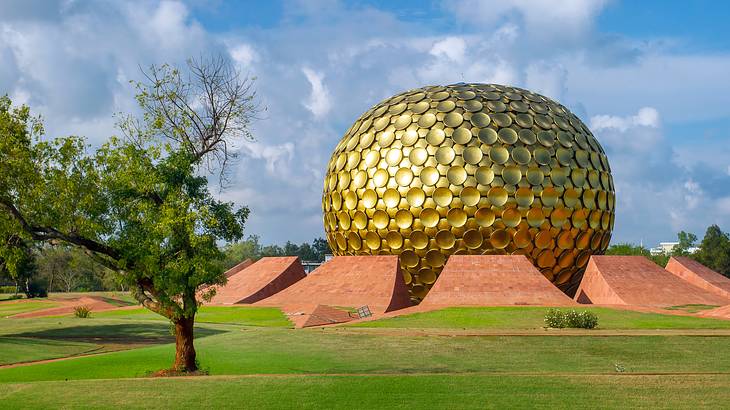
Matrimandir, Auroville
Auroville is an experimental township dedicated to peace and unity. While the town itself is somewhat of a landmark, the main attraction is the Matrimandir.
The Matrimandir resembles a large golden ball and is covered in gold disks. It's stunning to look at and is also a place of spiritual significance for Auroville residents.
Called "the soul of the city," Matrimandir is not affiliated with one religion and is intended to be a place to reflect and practice peace and harmony.
☂️ Visit the Auroville Matrimandir with an experience
Jingmaham Living Root Bridge, Mawlynnong
Many of the major landmarks in India are human-made; however, there are also lots of incredible natural landmarks, like the Jingmaham Living Root Bridge.
This bridge is not made from steel but tree roots. The Jingmaham bridge was created when the roots of rubber trees were bound together to create an incredibly strong structure. It conveniently acts as a crossing point across a river and is stable enough to hold 50 people at one time!
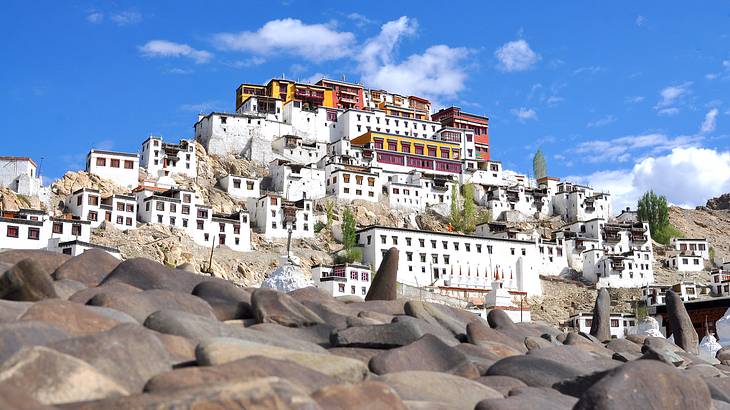
Thiksey Monastery, Thiksey
Thiksey Monastery is found in the Himalayan foothills and is a famous Buddhist landmark in India. It was constructed in 1430 AD and is affiliated with a sect of Tibetan Buddhism.
The monastery sits high on a hill within the foothills and features colourful Buddhist statues, artworks, and artefacts. Being so high up in the mountains, you can enjoy the interior and exterior of the monastery as well as incredible views of the surrounding town.
Conclusion
Have you been dreaming about witnessing the Taj Mahal at sunset on your upcoming trip to India? The Taj Mahal is undoubtedly the most renowned monument in the country, but India has so much more to offer.
Majestic monuments, opulent palaces and ancient temples and forts are just a few of the fantastic structures that you will see in every nook and corner of India. The country's rich history oozes out from these historical monuments and depicts epic tales of bravery, romance, battles and strength.
India's rich culture and history stay alive in the hearts of visitors due to its magnificent Indian landmarks. If you are a history buff and wish to get immersed in the rich culture that India is known for, head over to some of the above fantastic landmarks.
If you are planning your big vacation in India and want to know the must-visit places, this list of the top 51 landmarks in India will help make the job easier for you.
Want to keep exploring?
Subscribe for discounts on tickets and hotels and our latest guides.
Thank you for subscribing
We will be in touch soon with discounts on tickets and hotels and our latest guides.
Want to keep exploring?
Subscribe for discounts on tickets and hotels and our latest guides.
Thank you for subscribing
We will be in touch soon with discounts on tickets and hotels and our latest guides.

